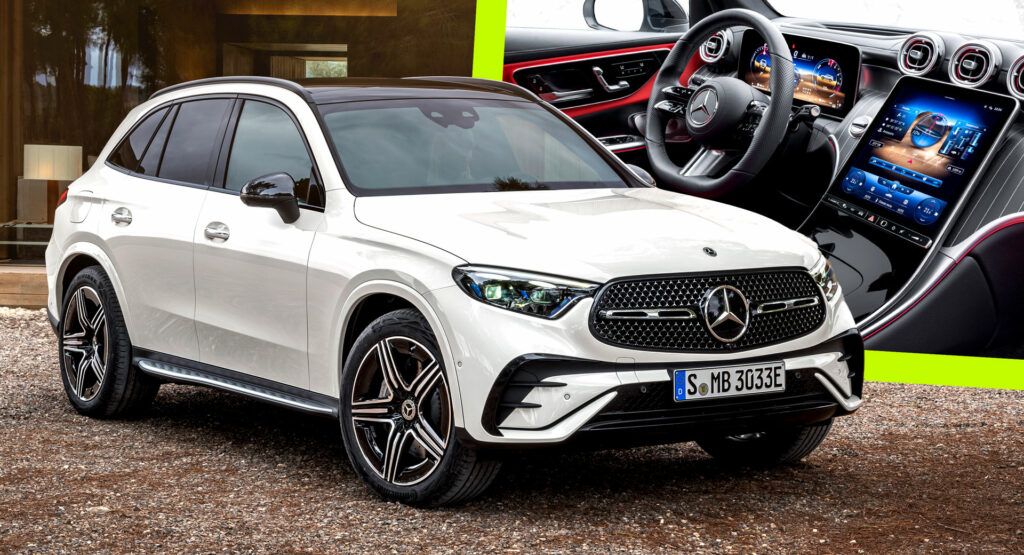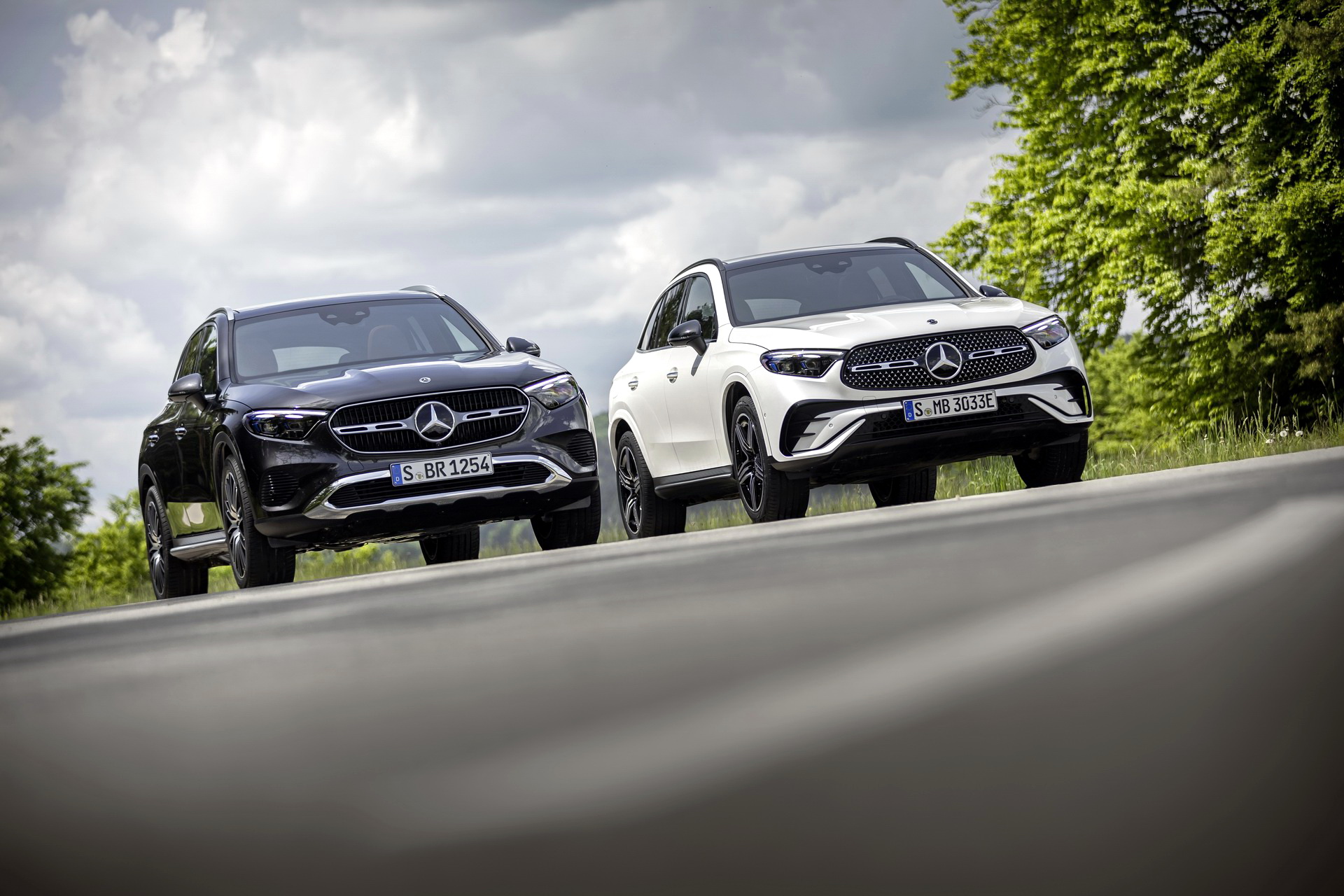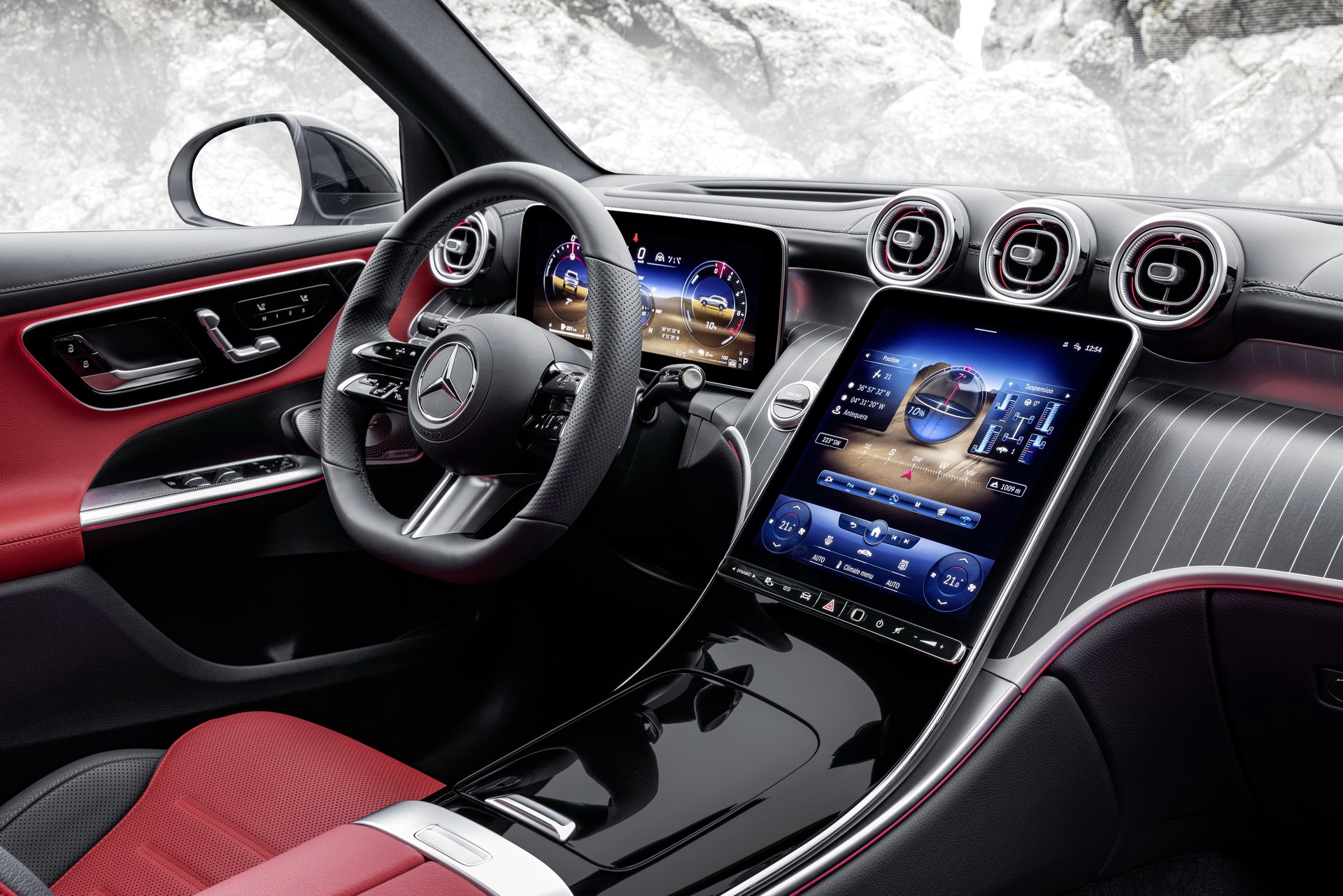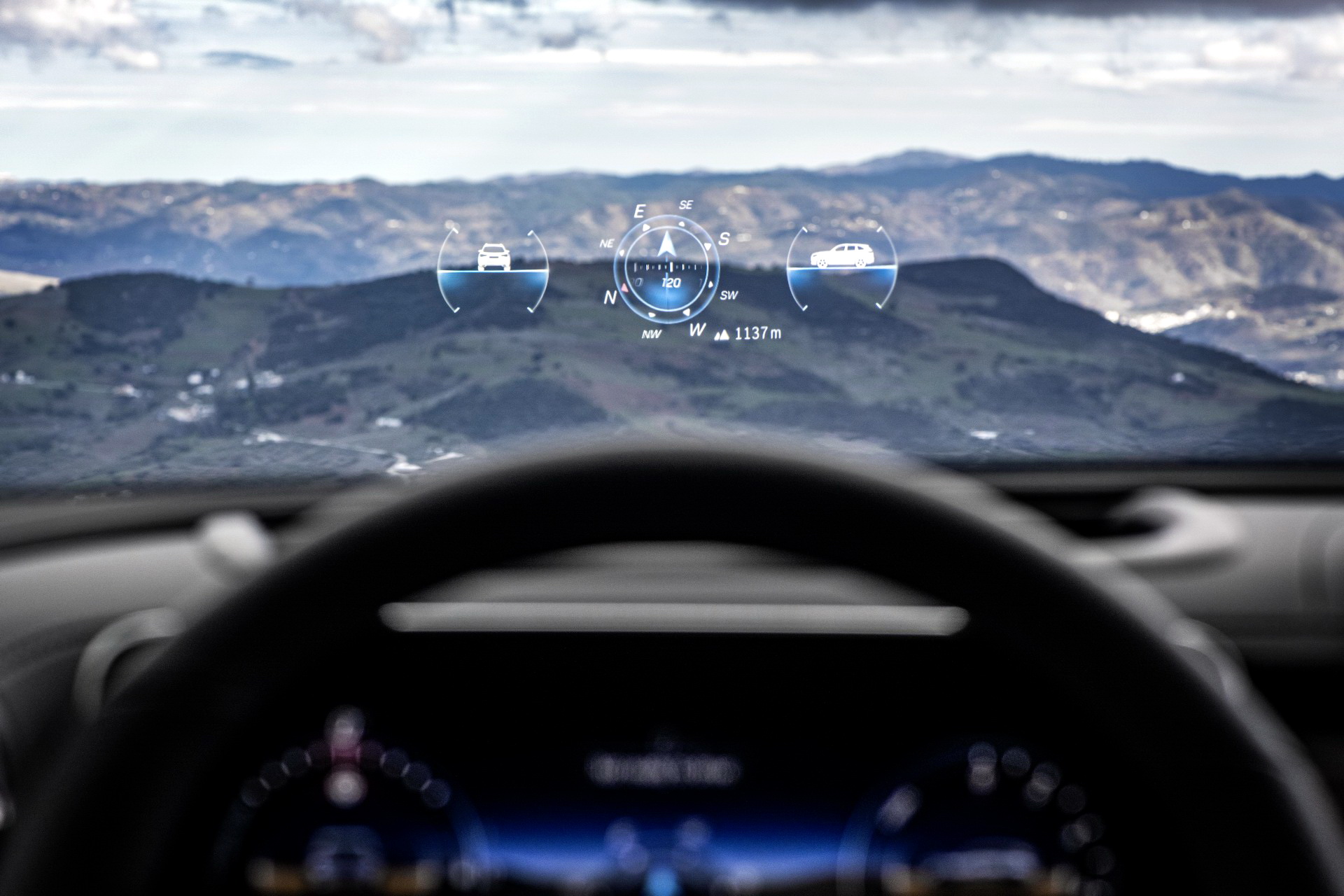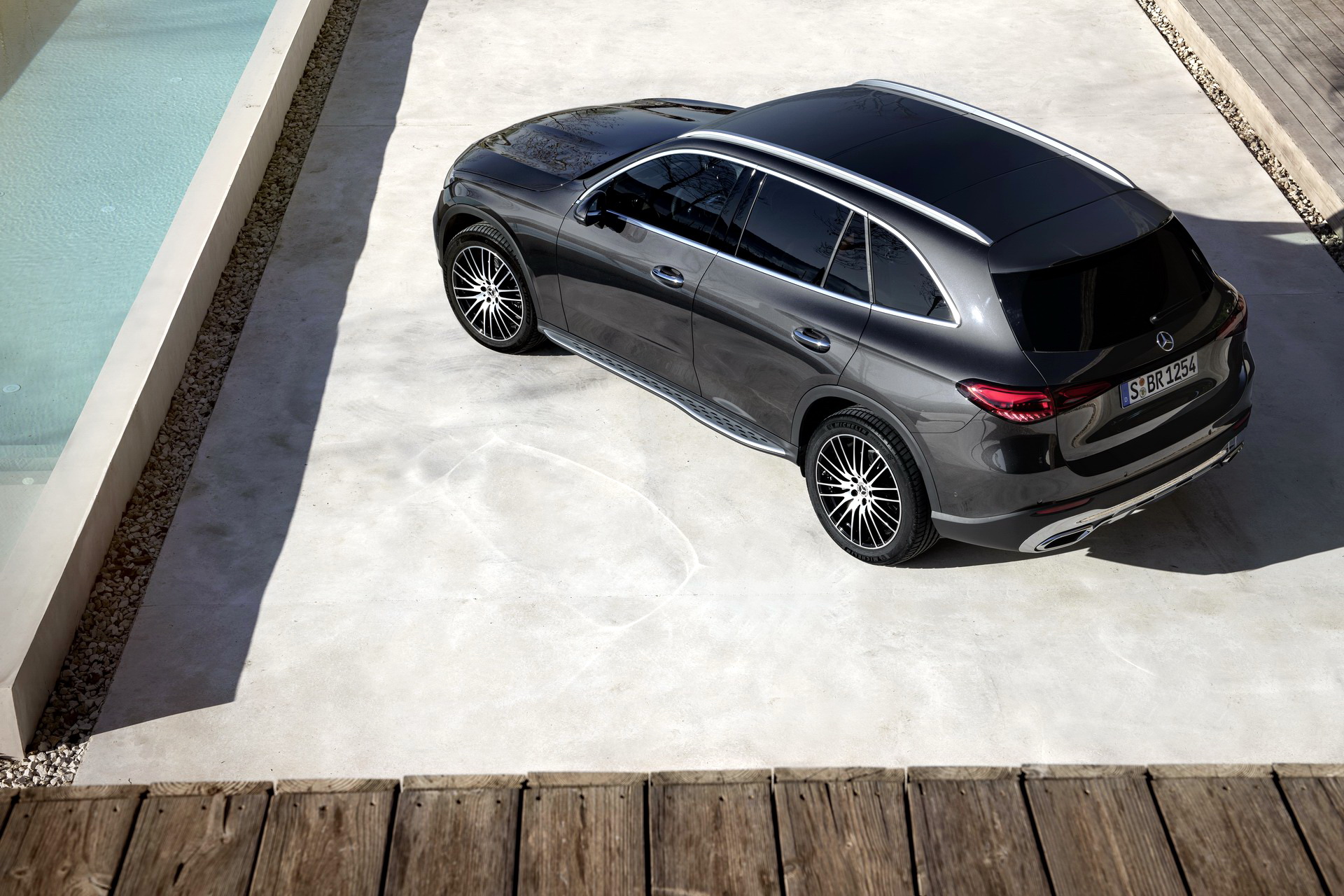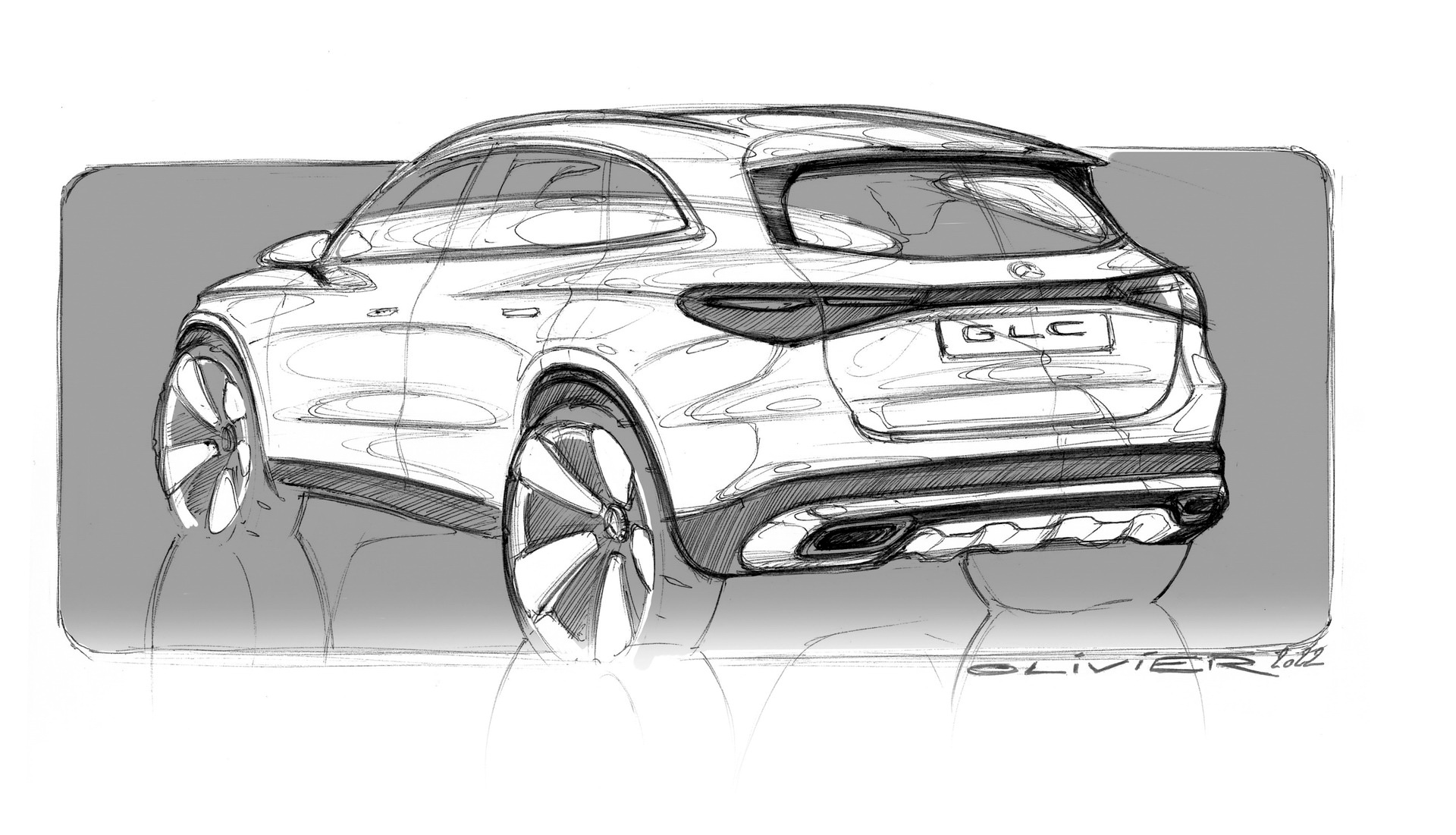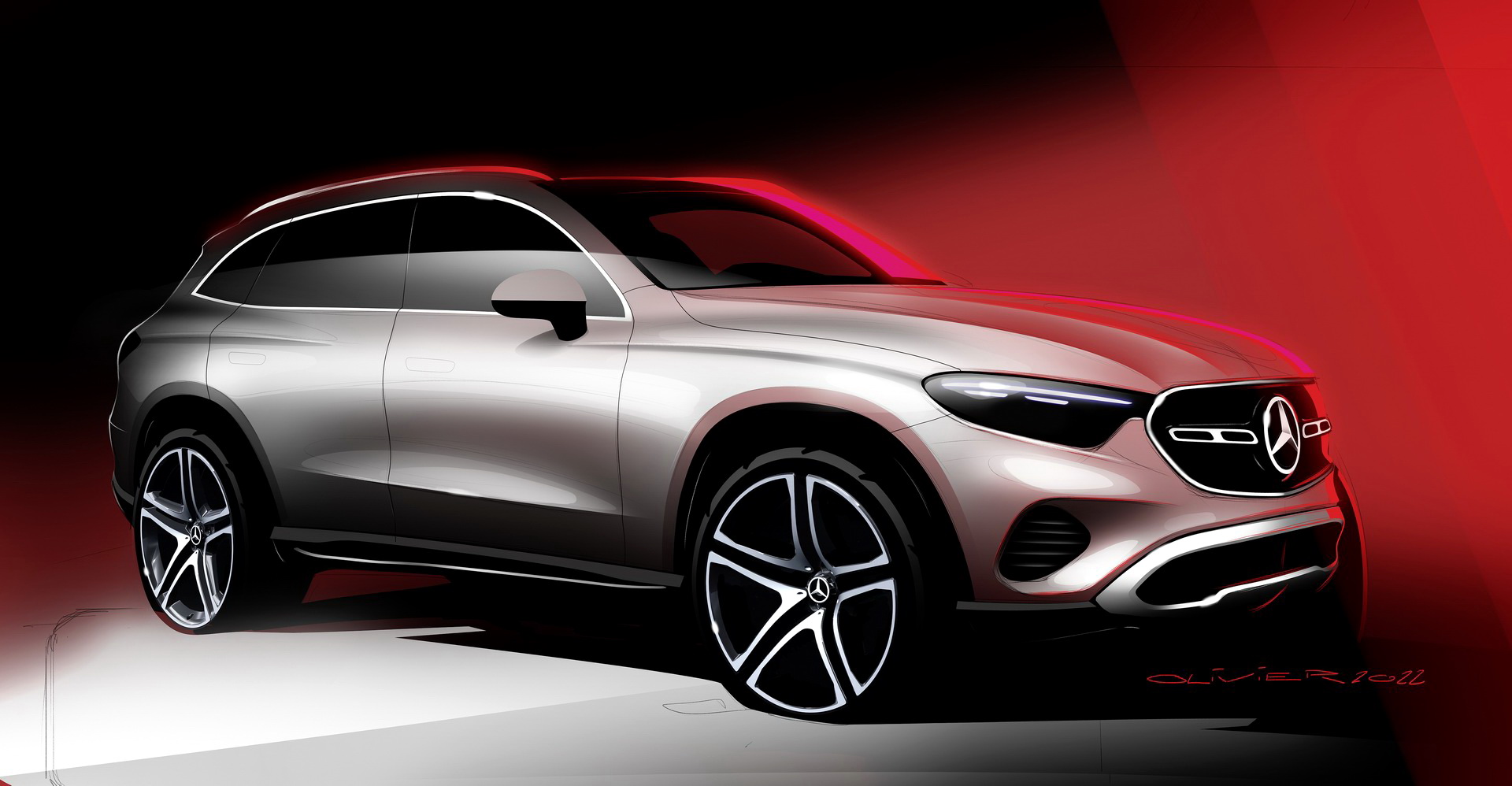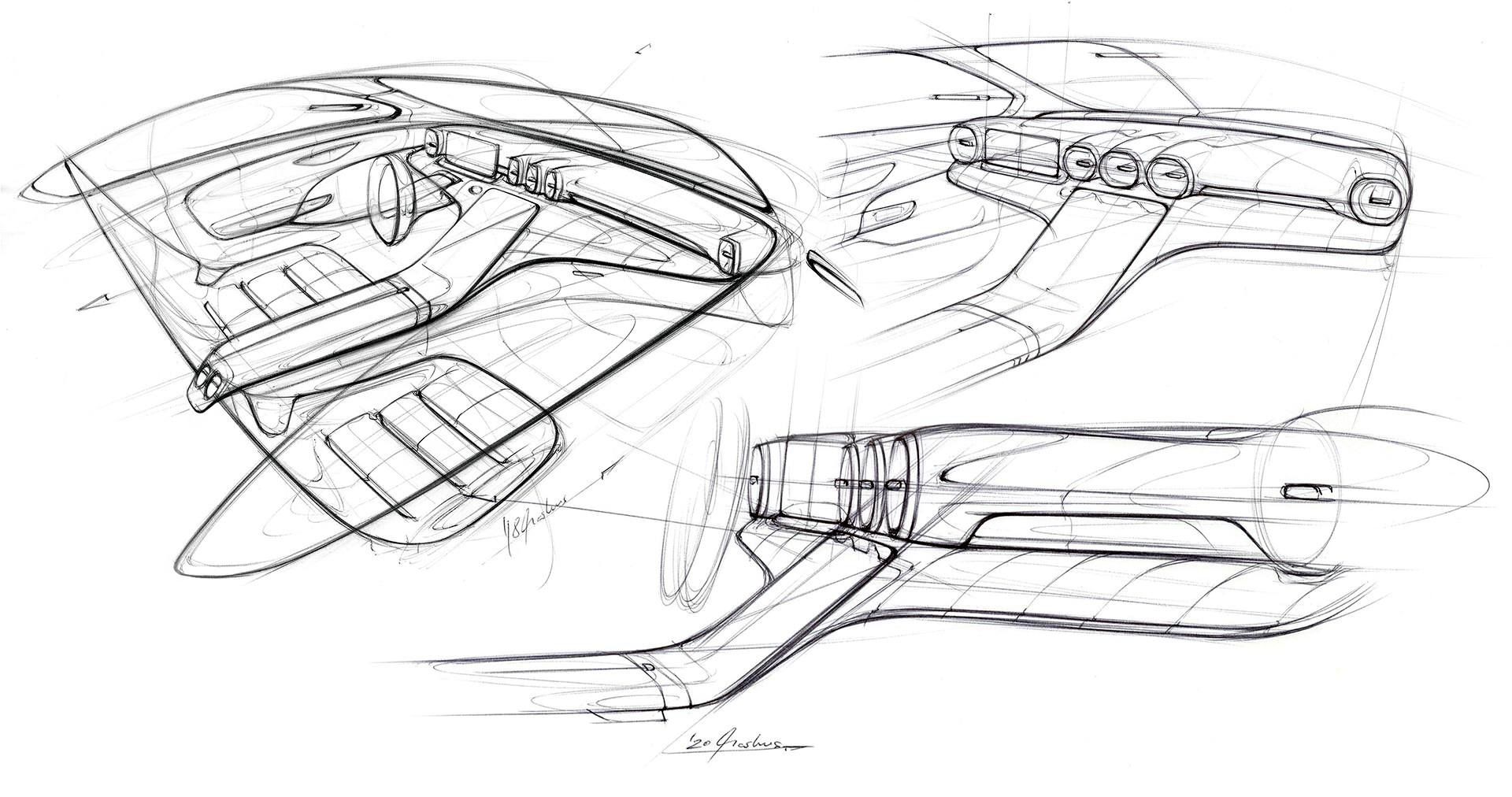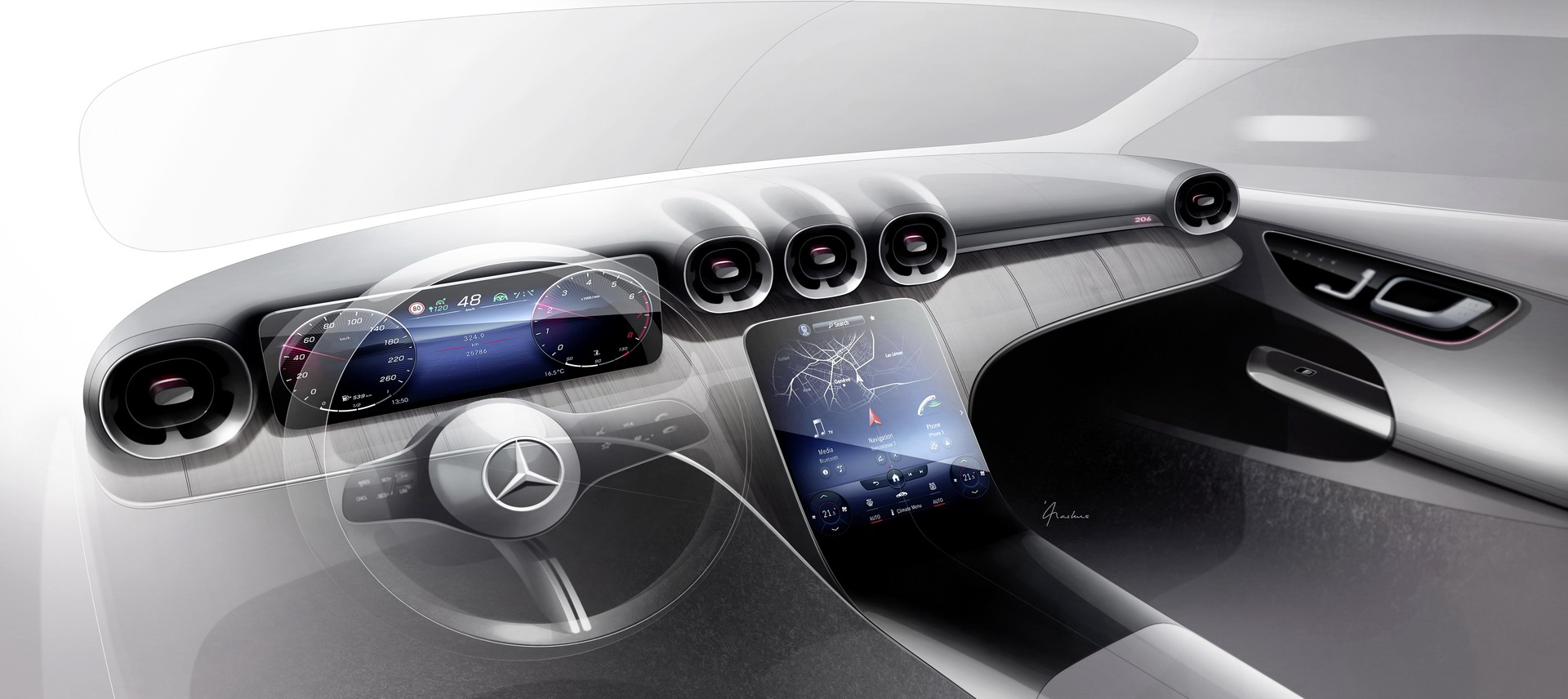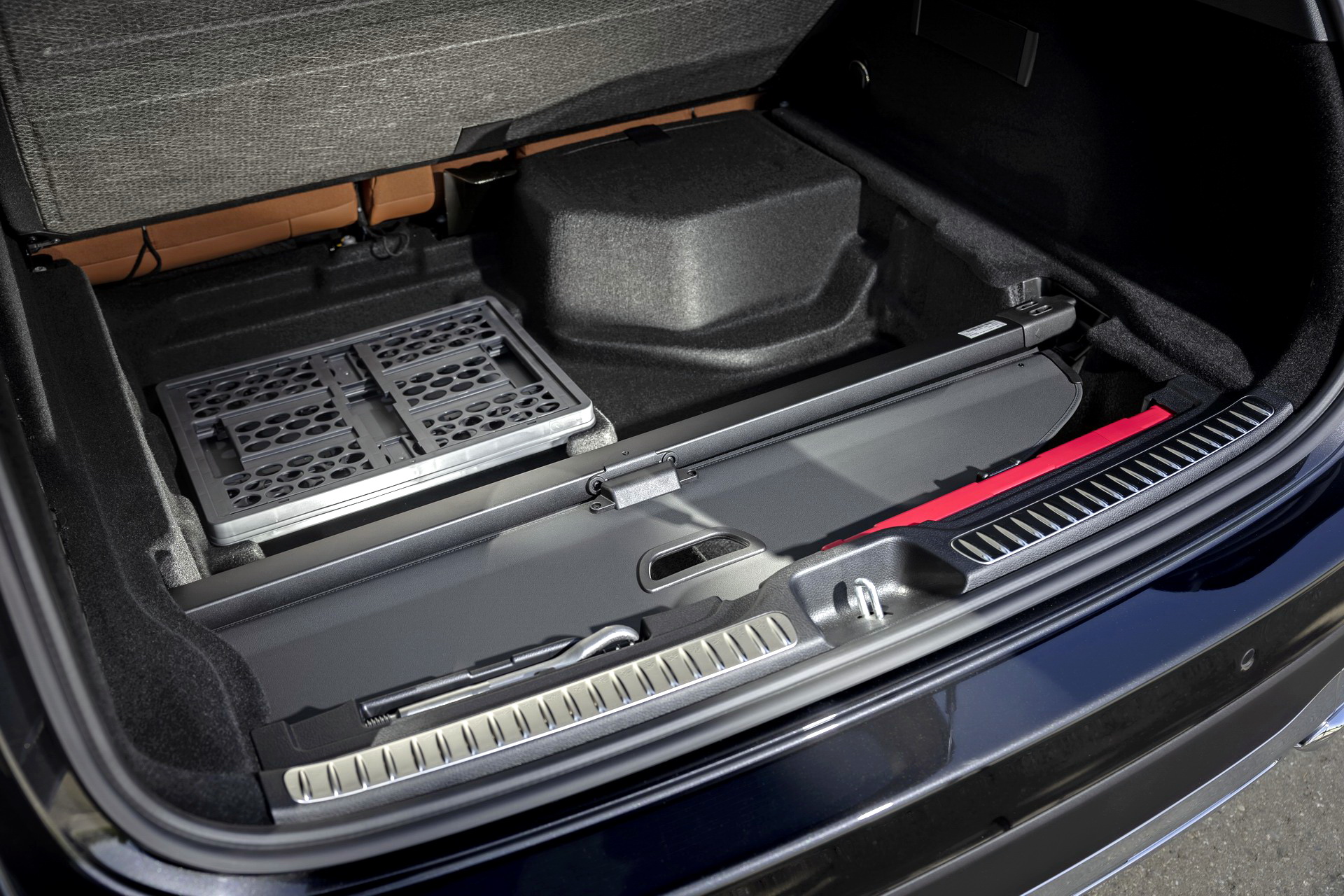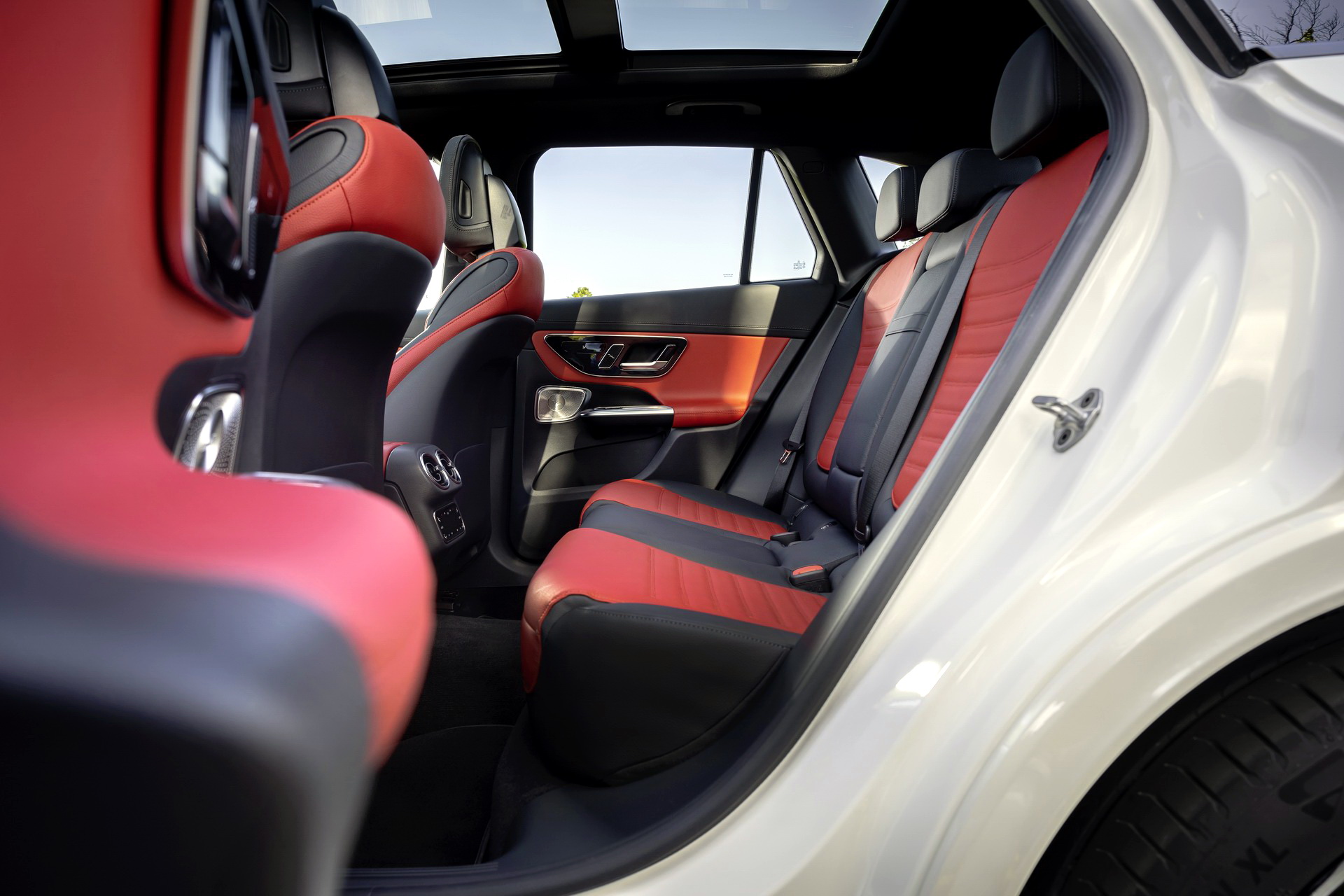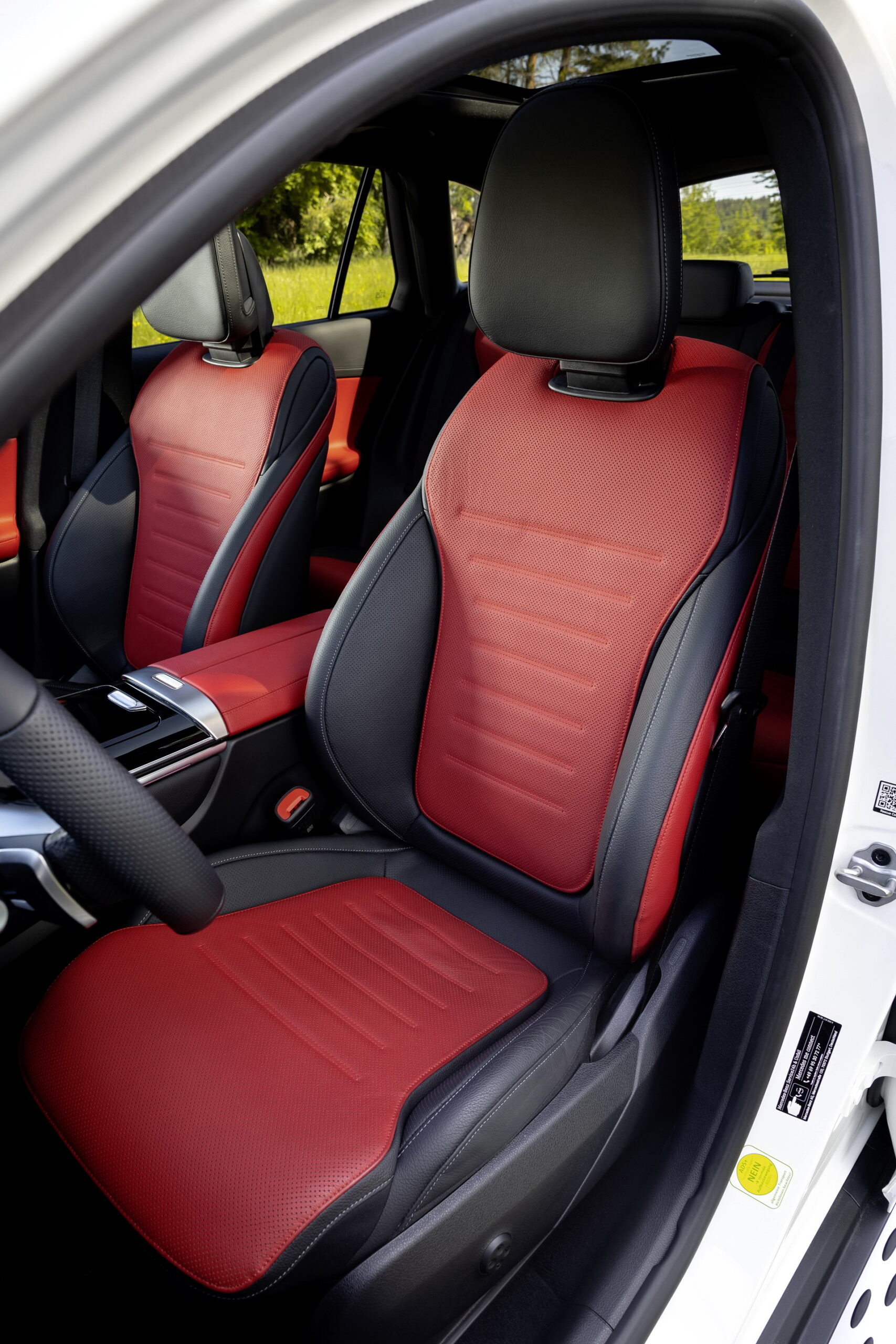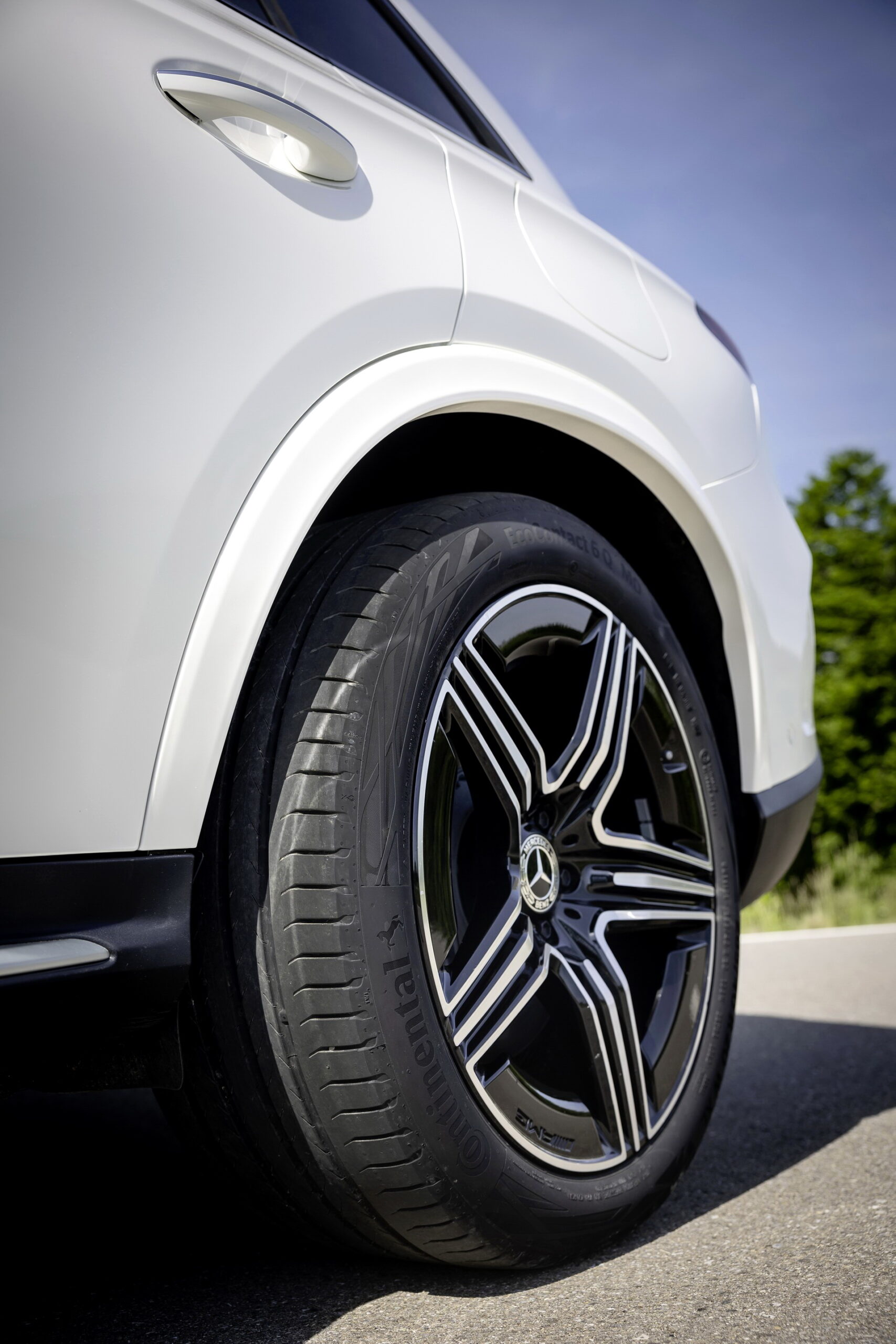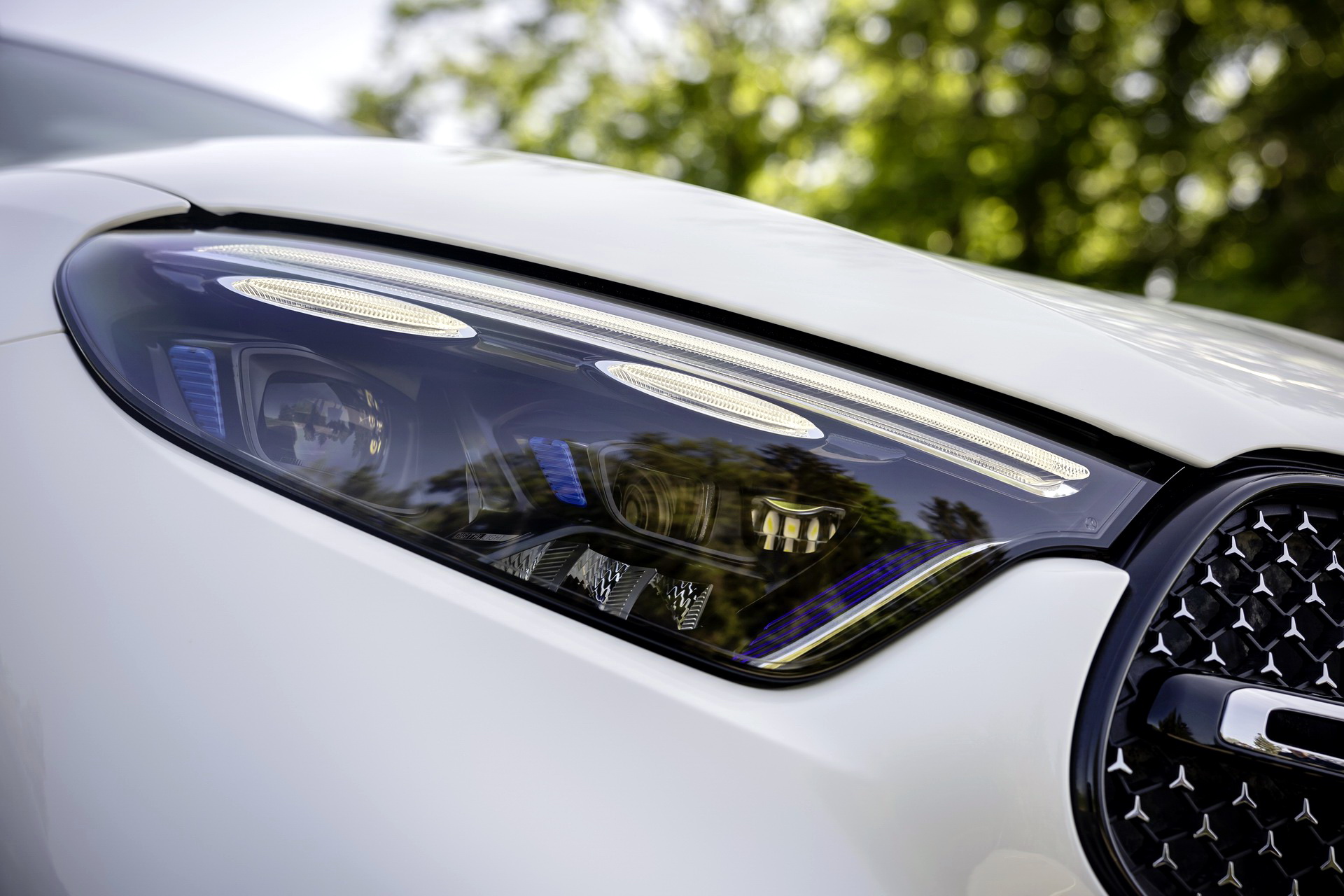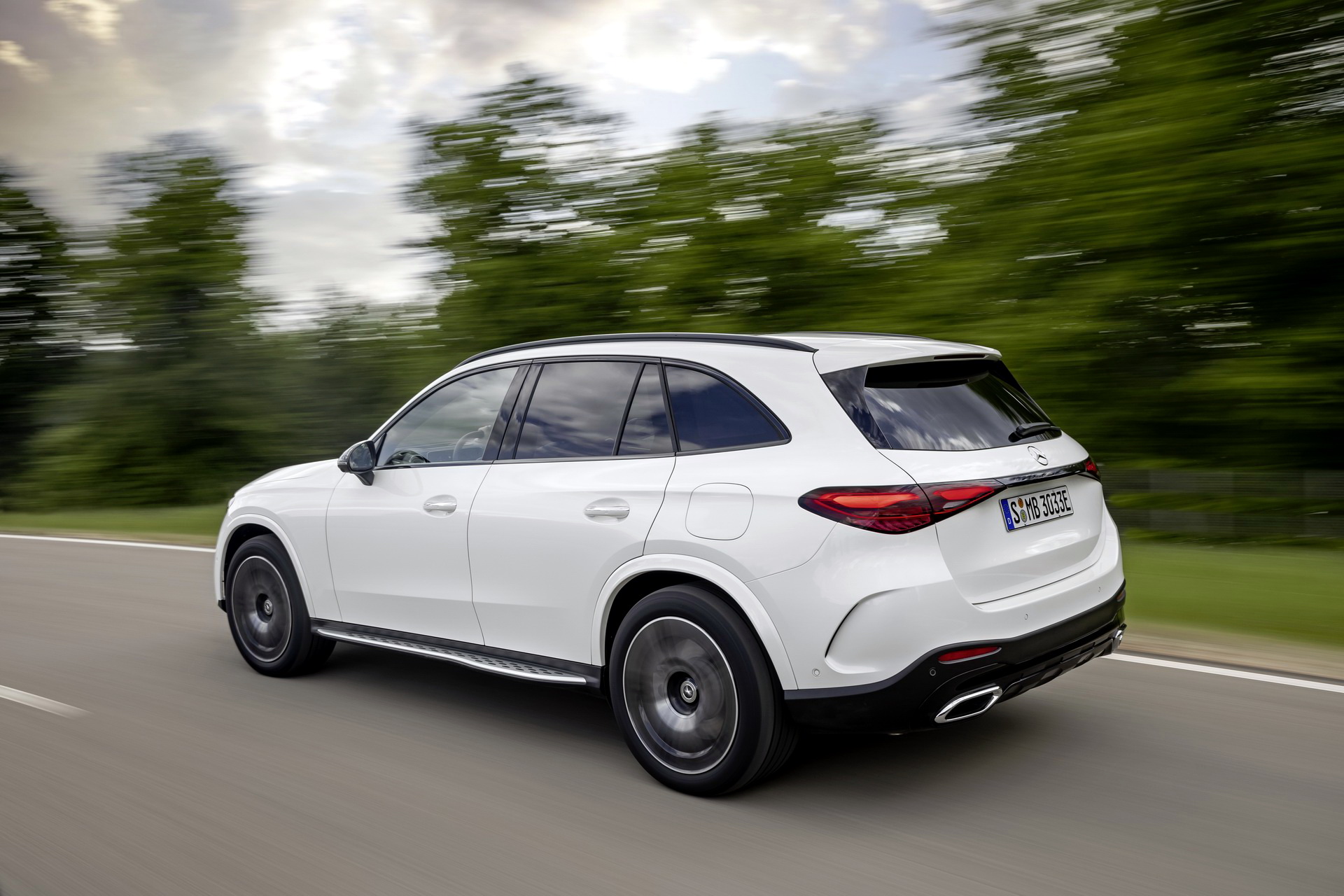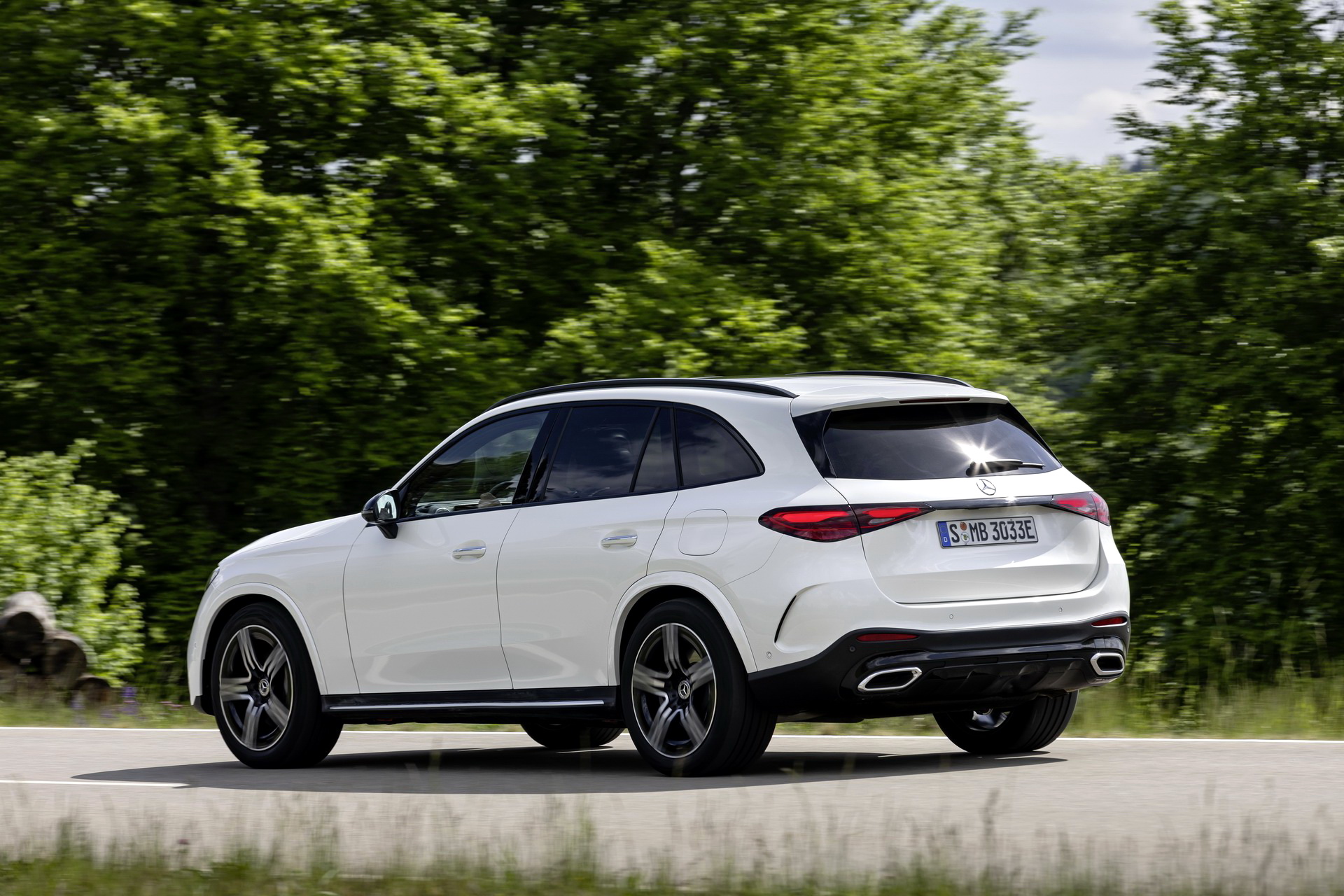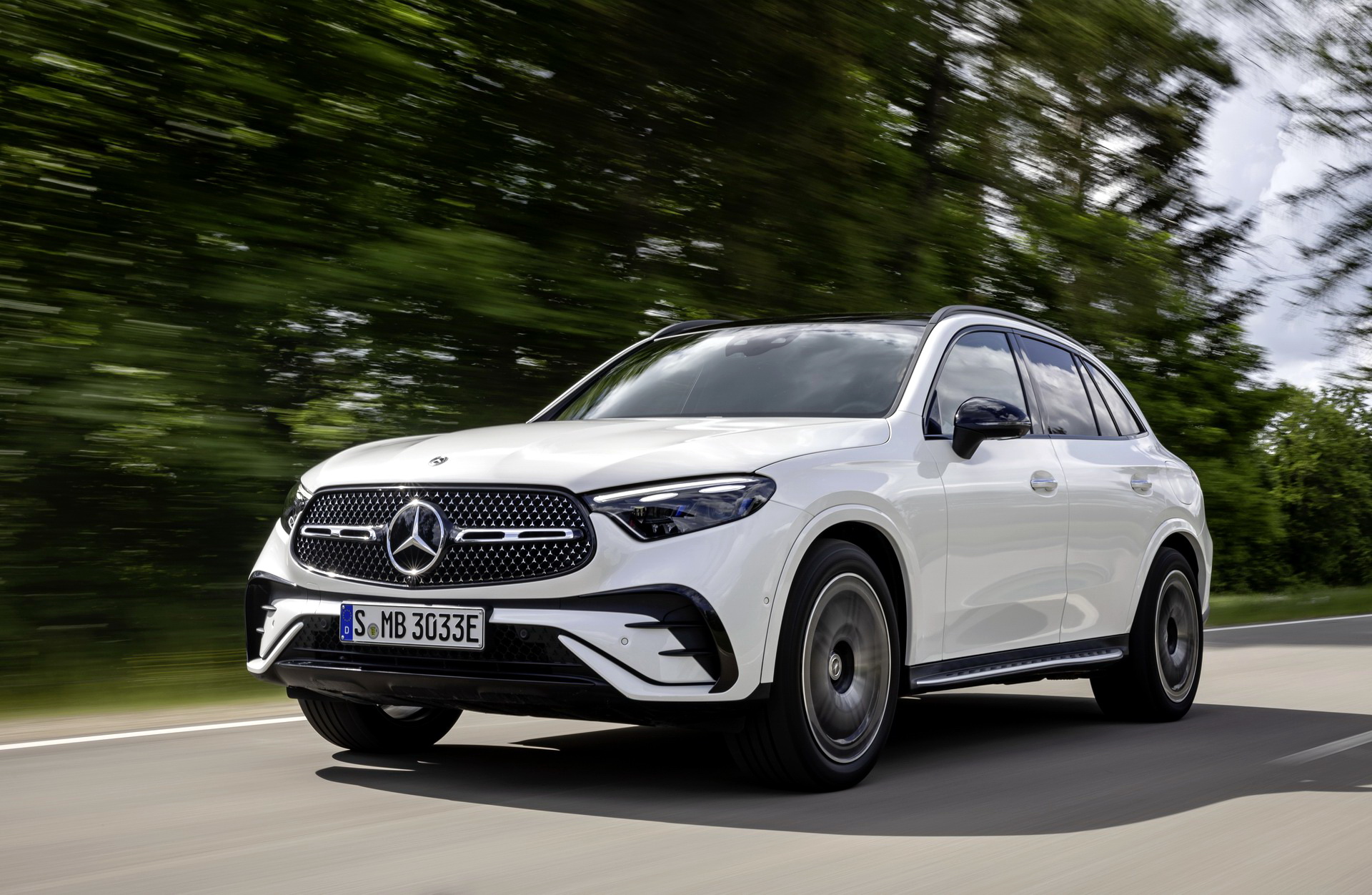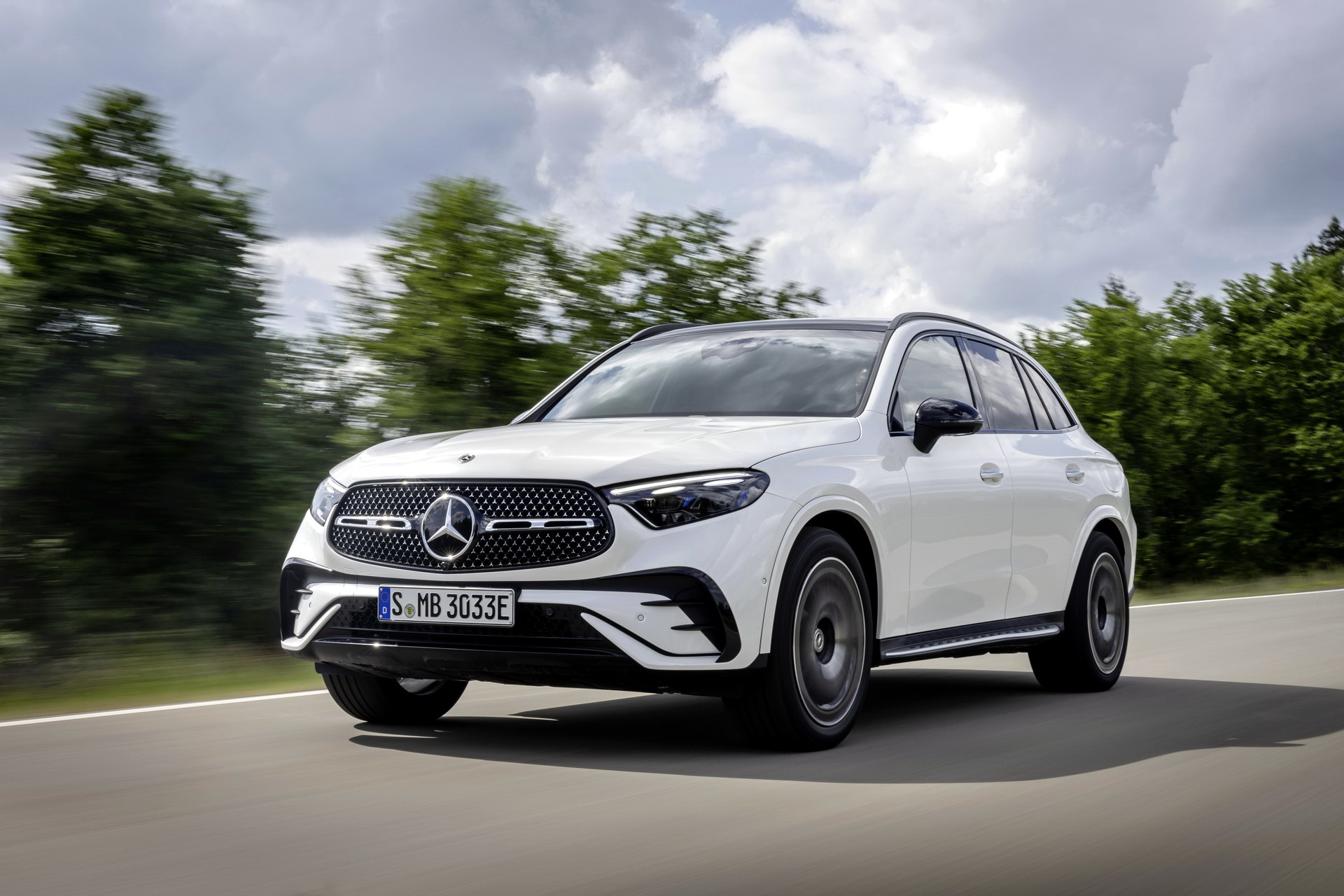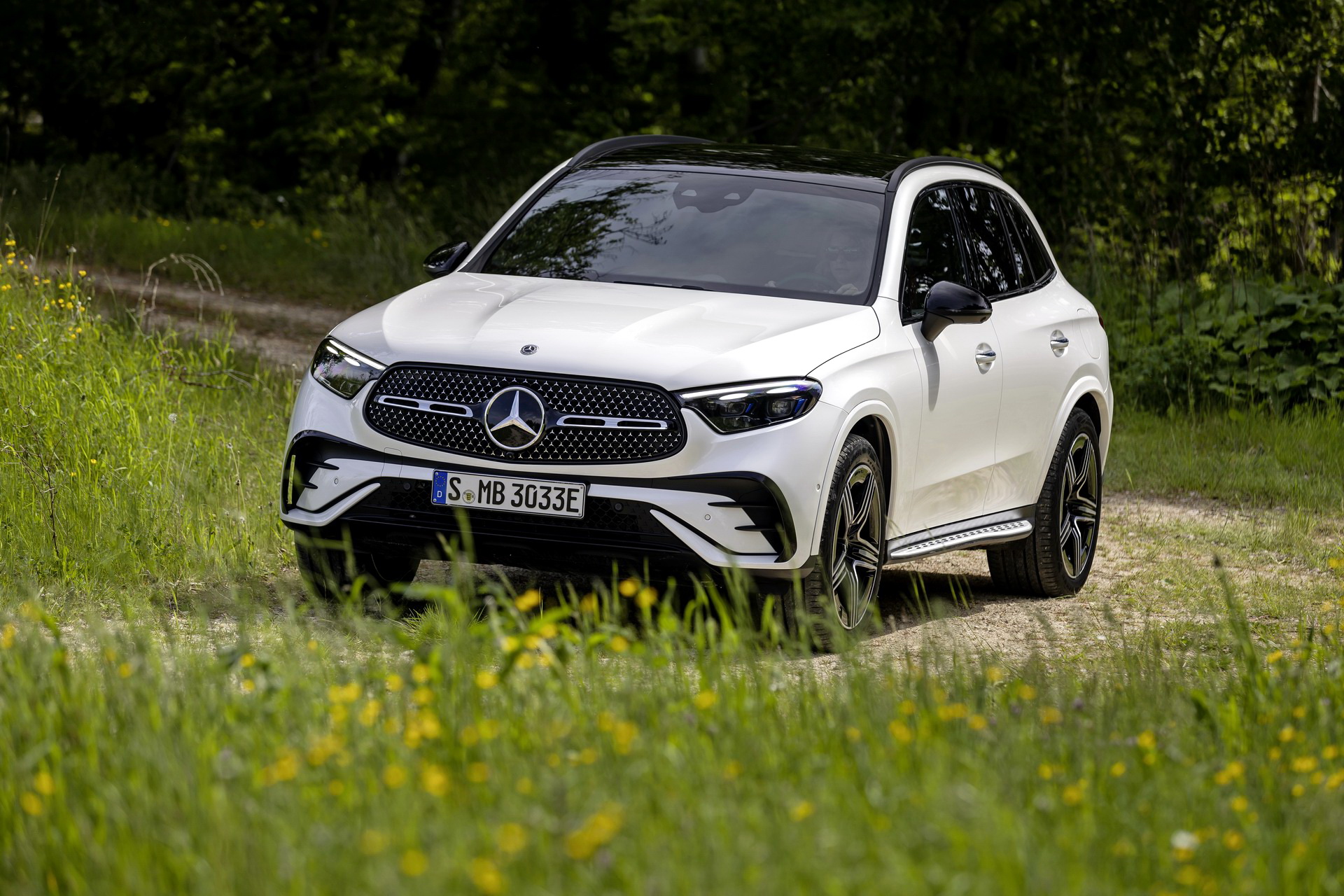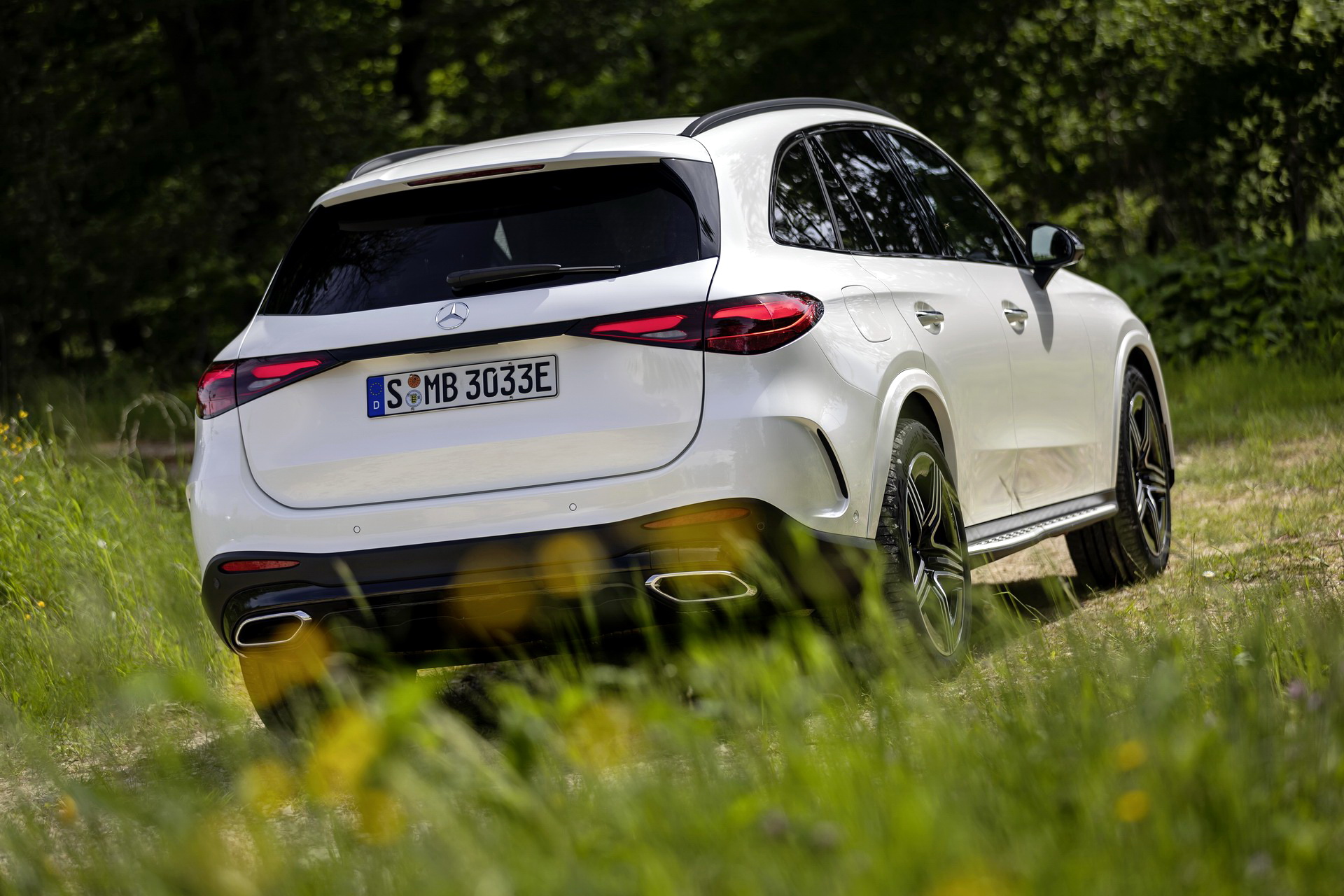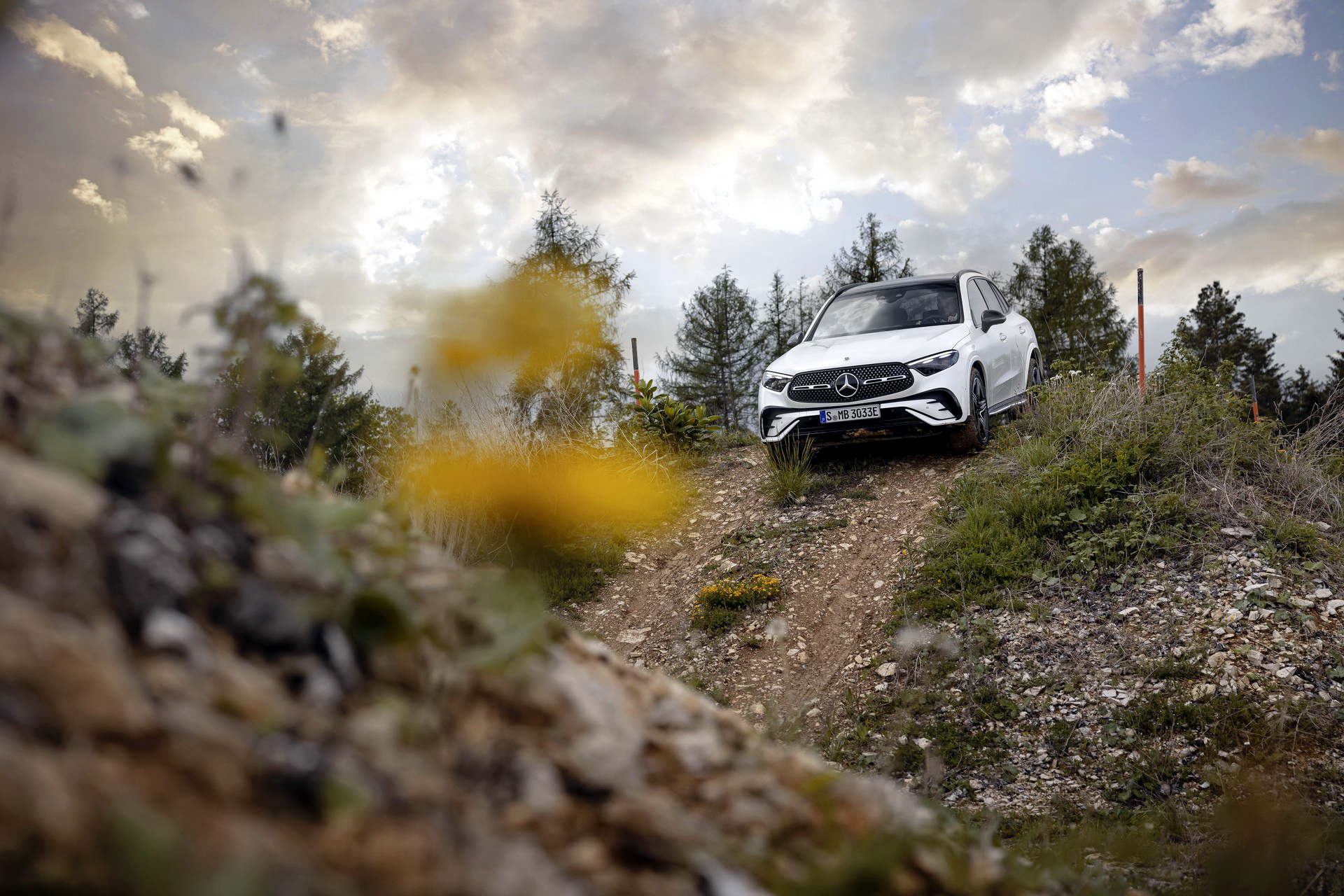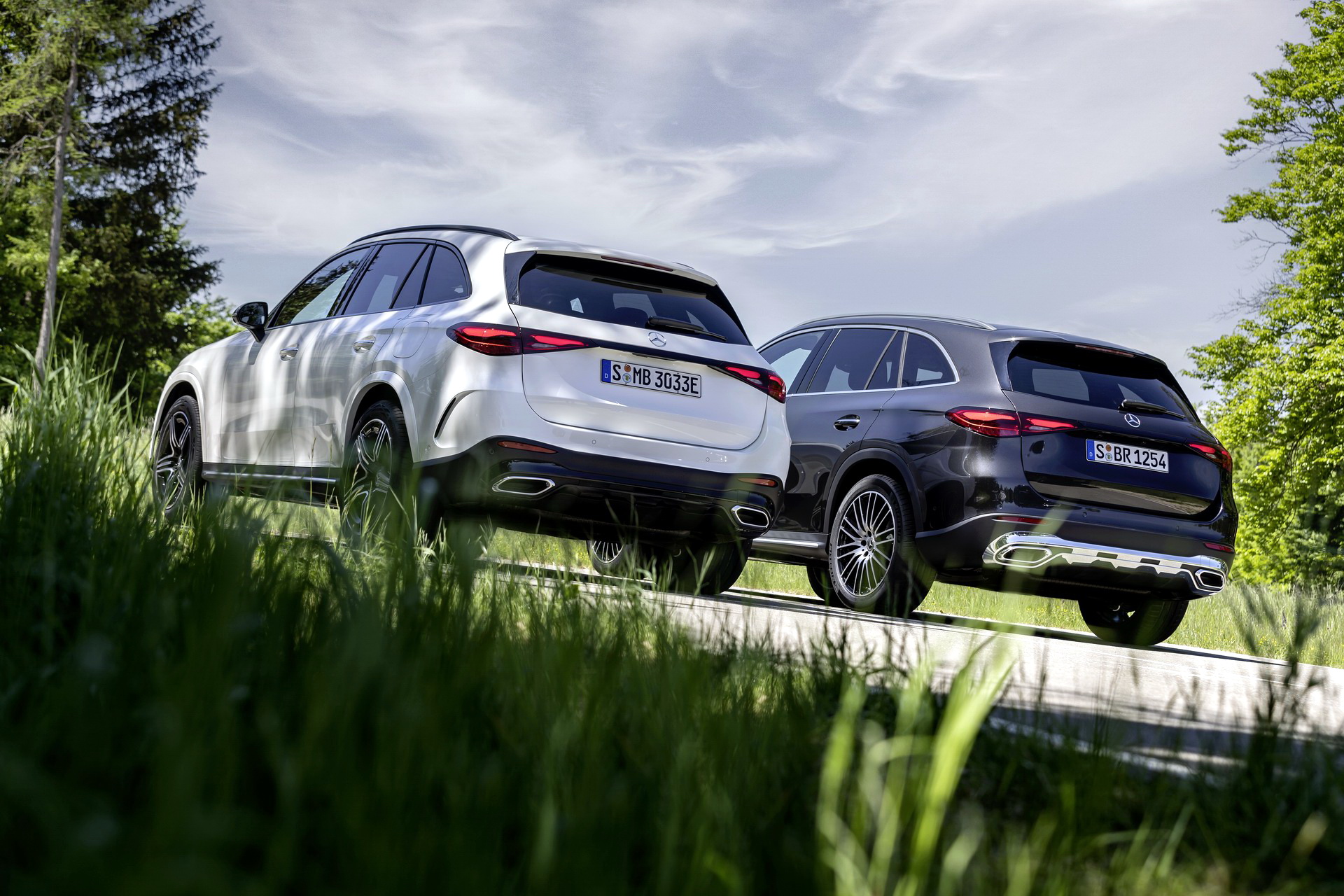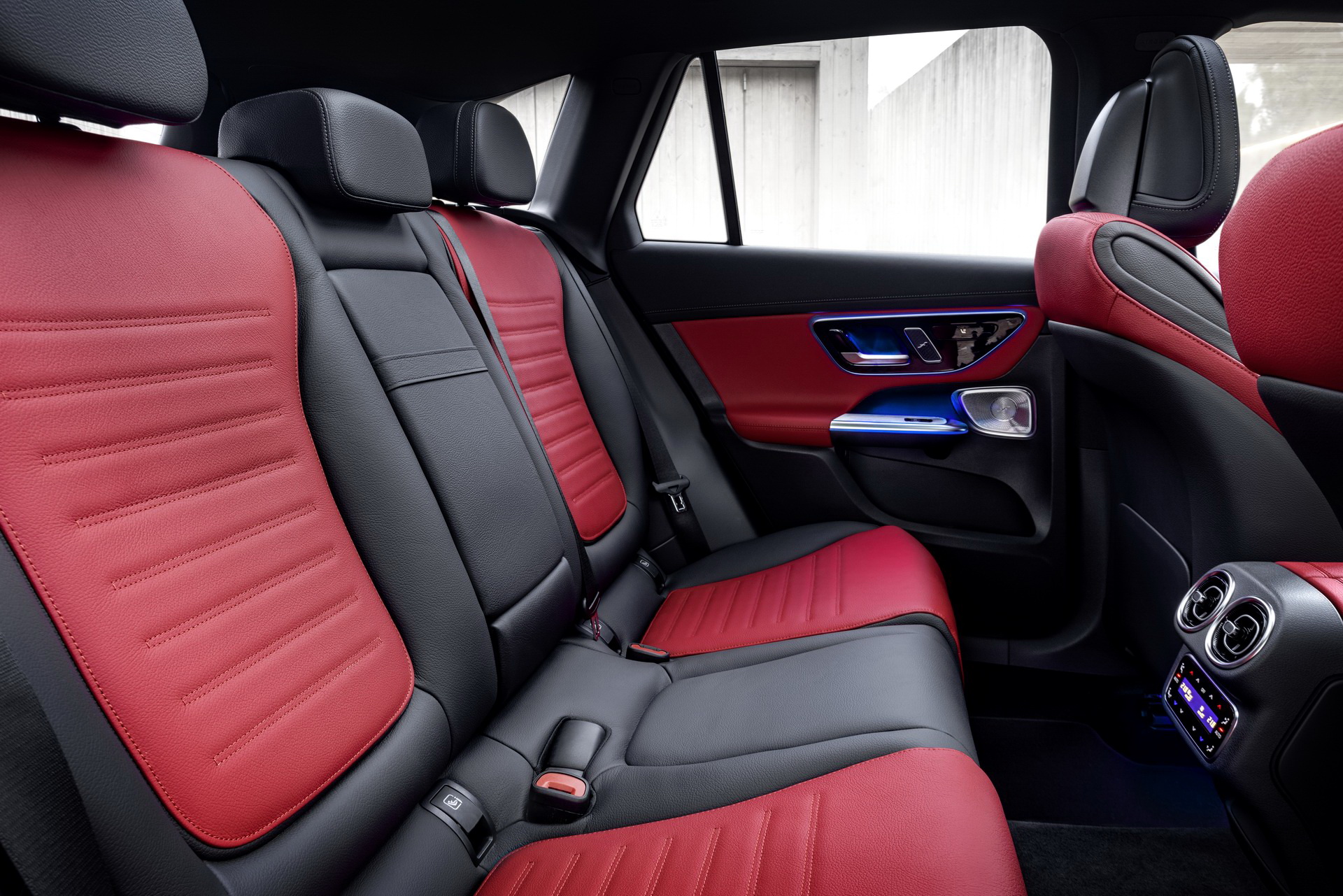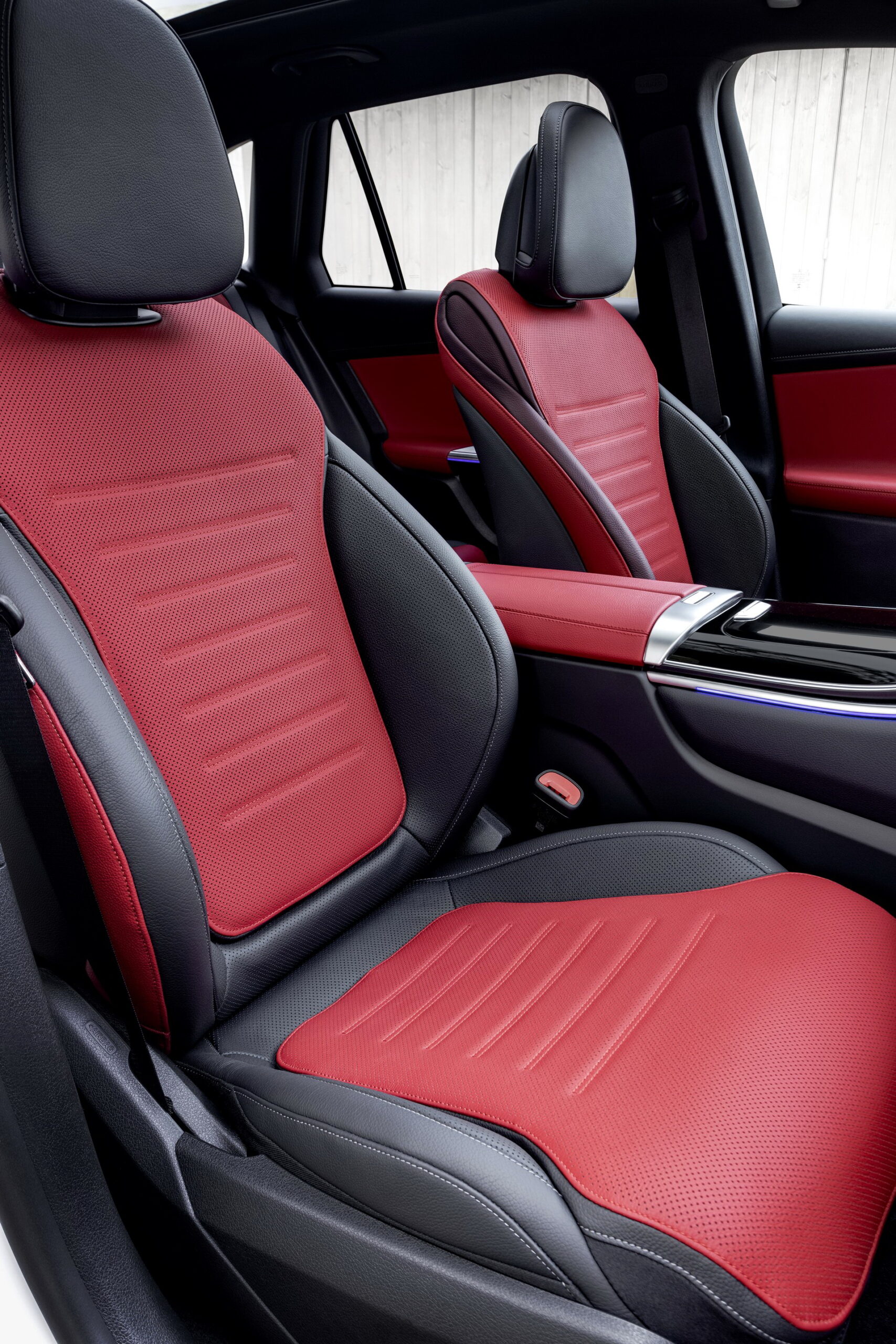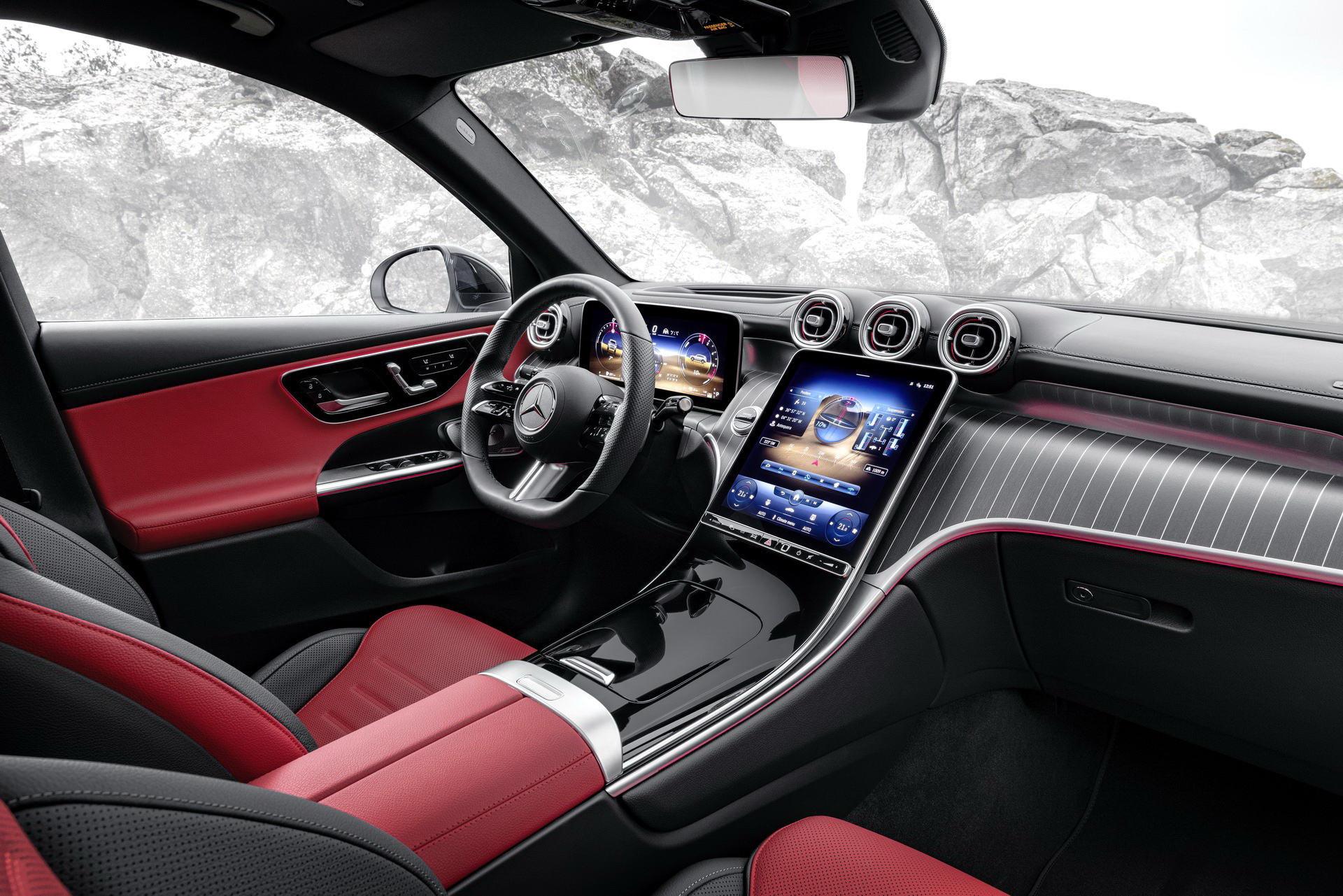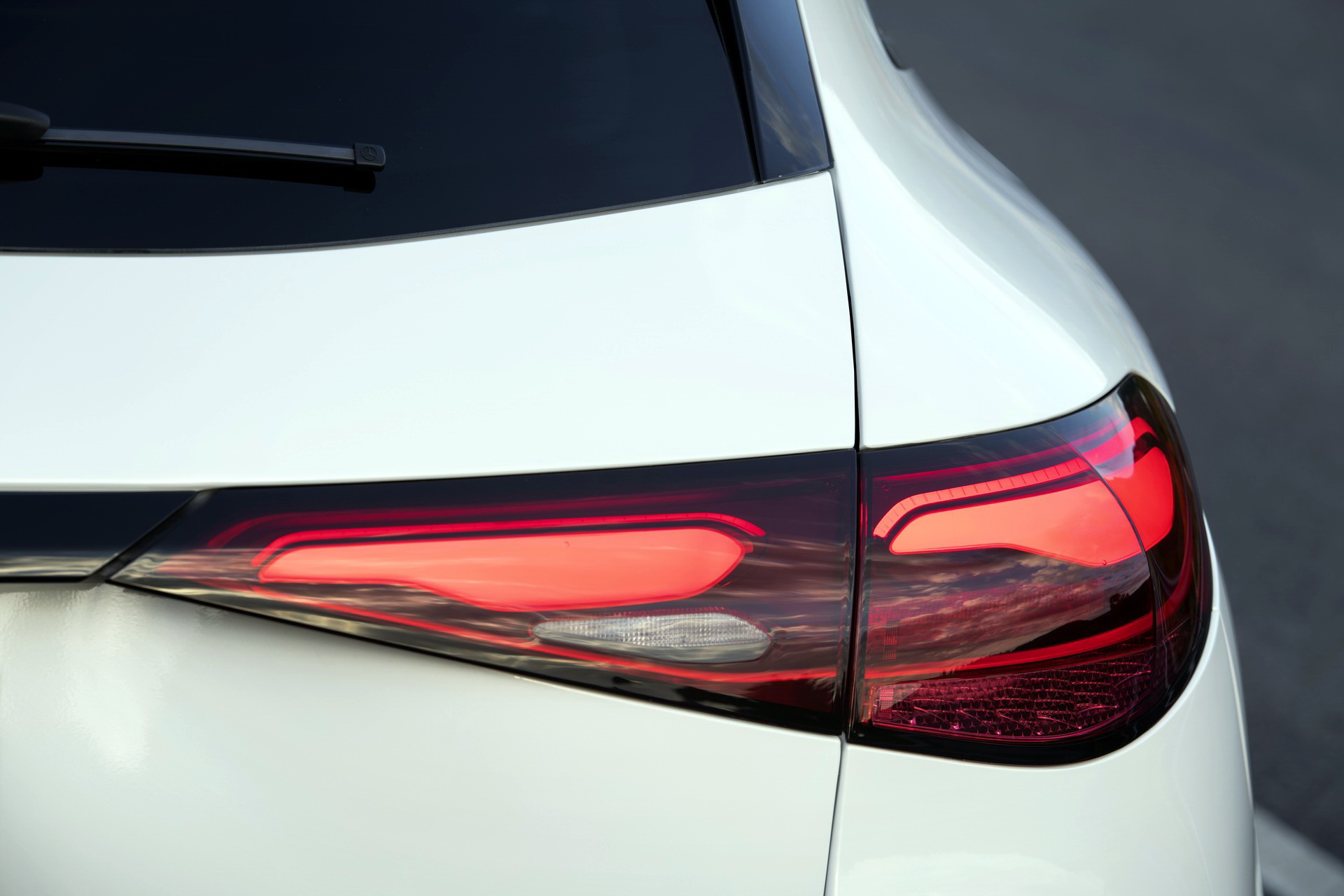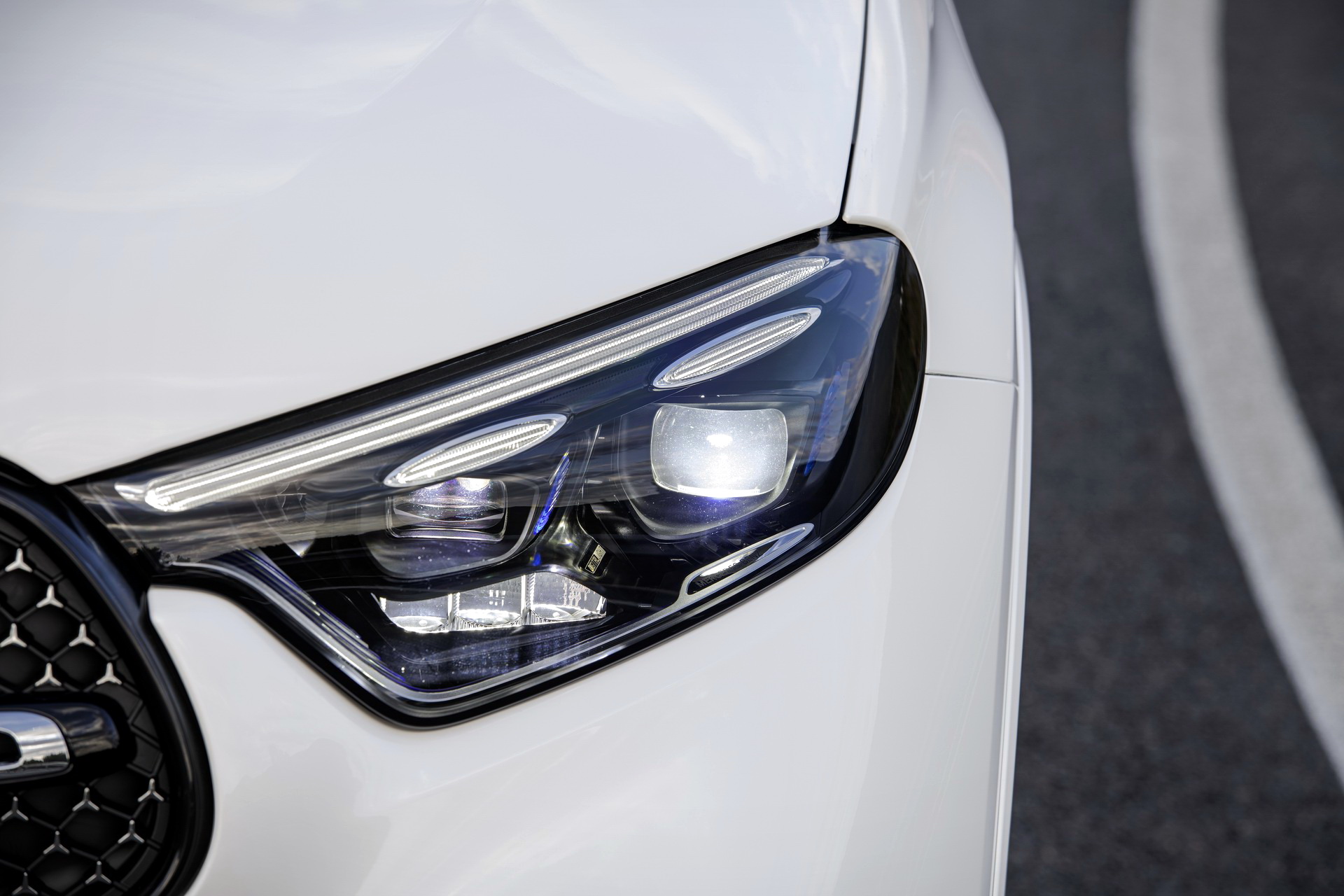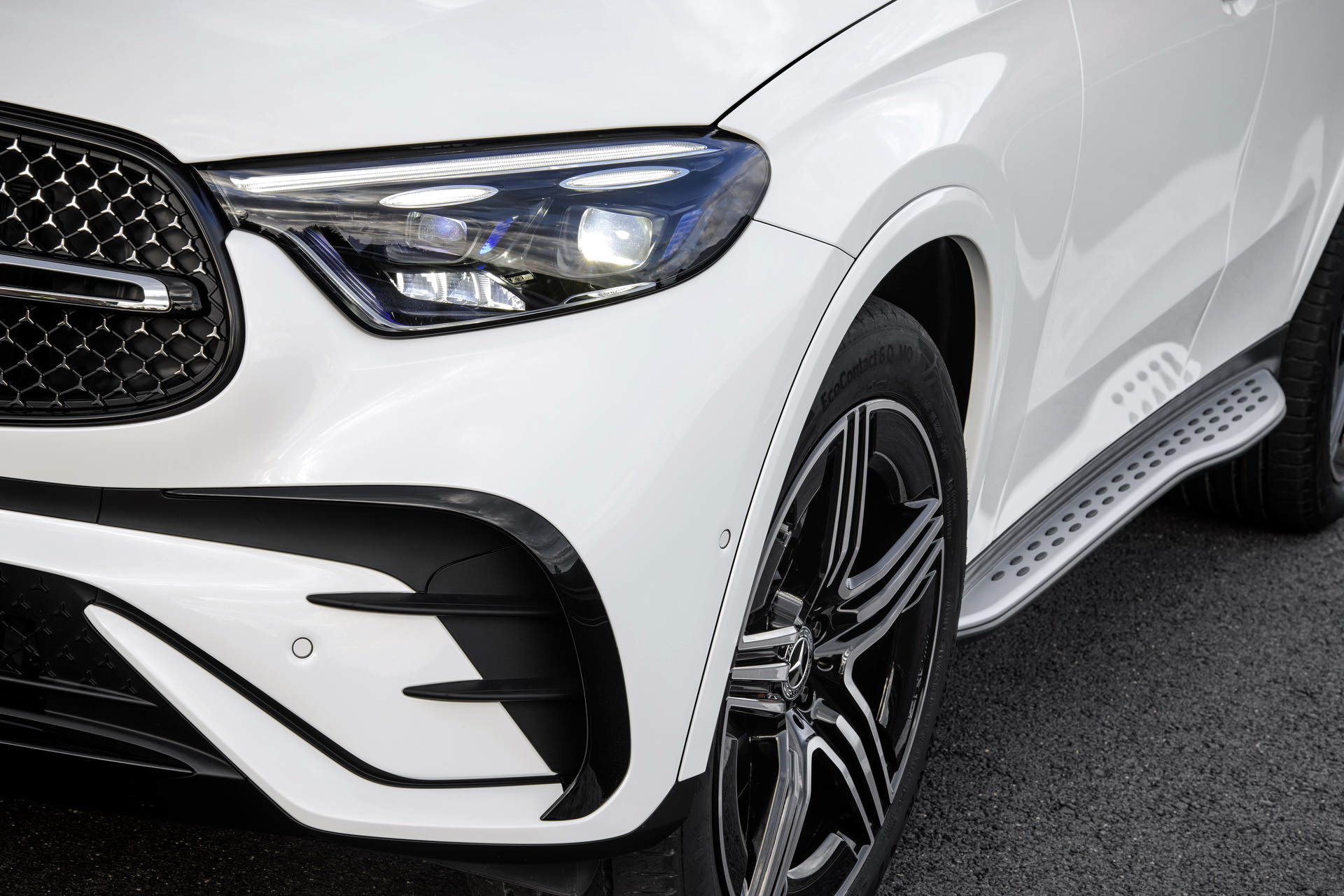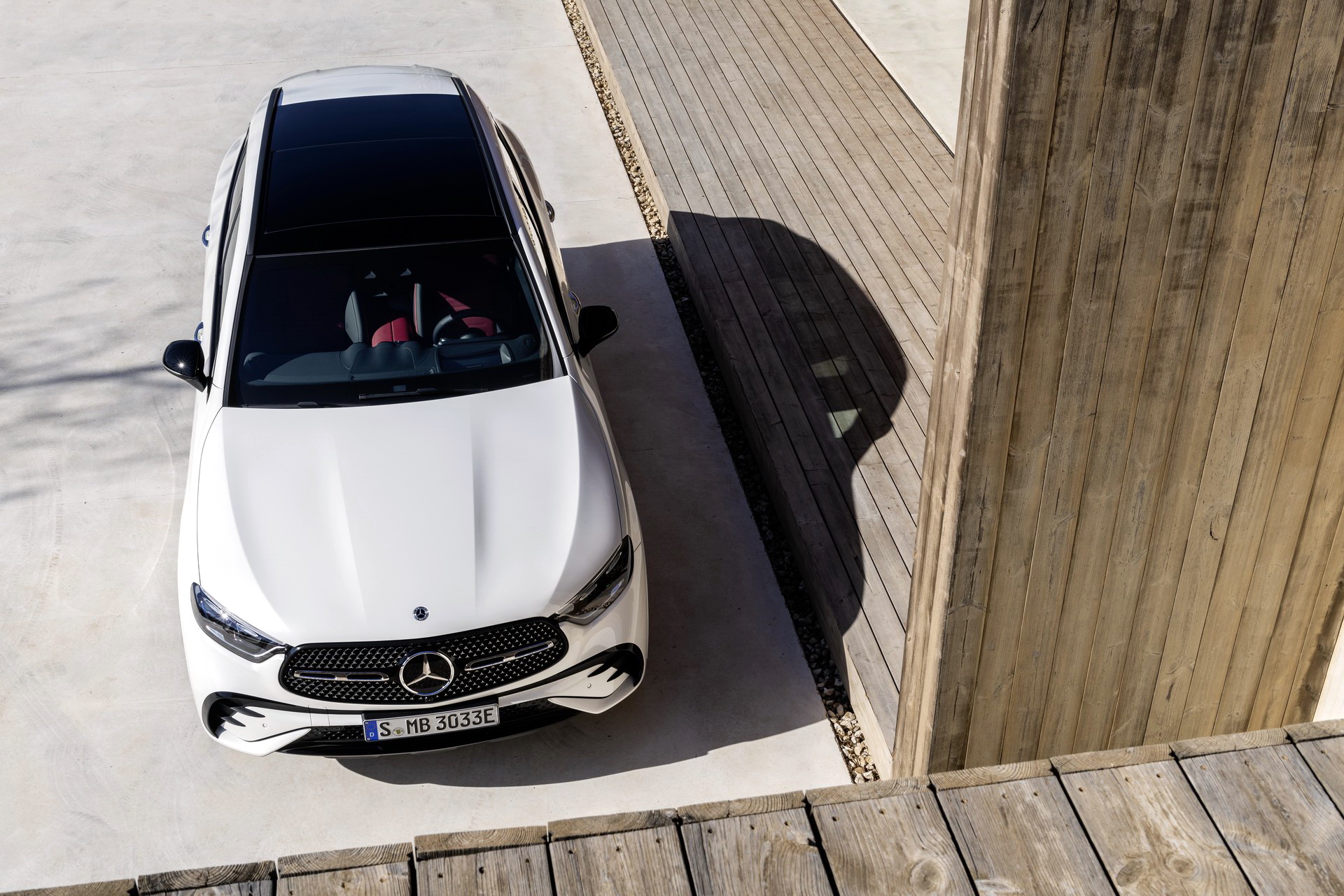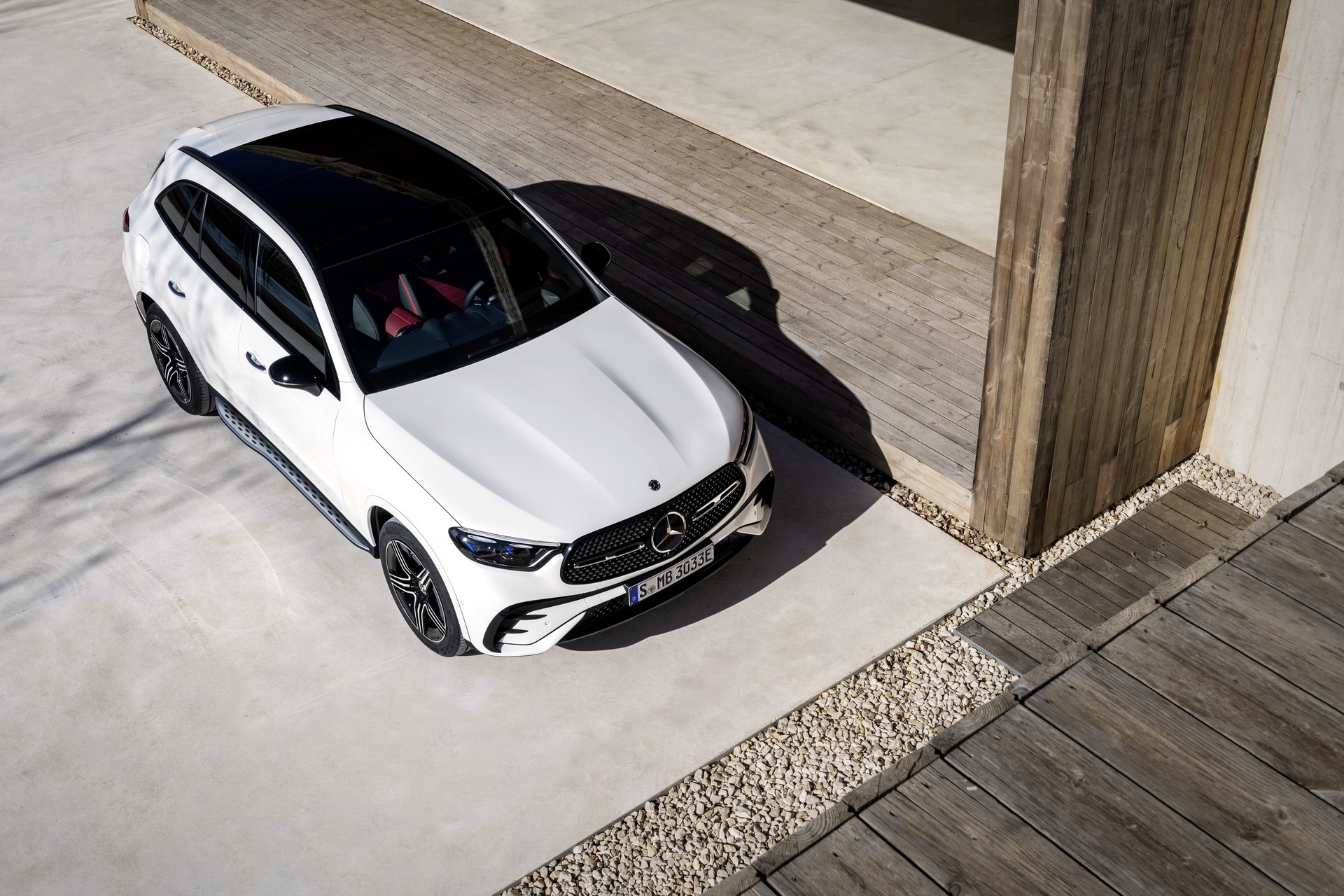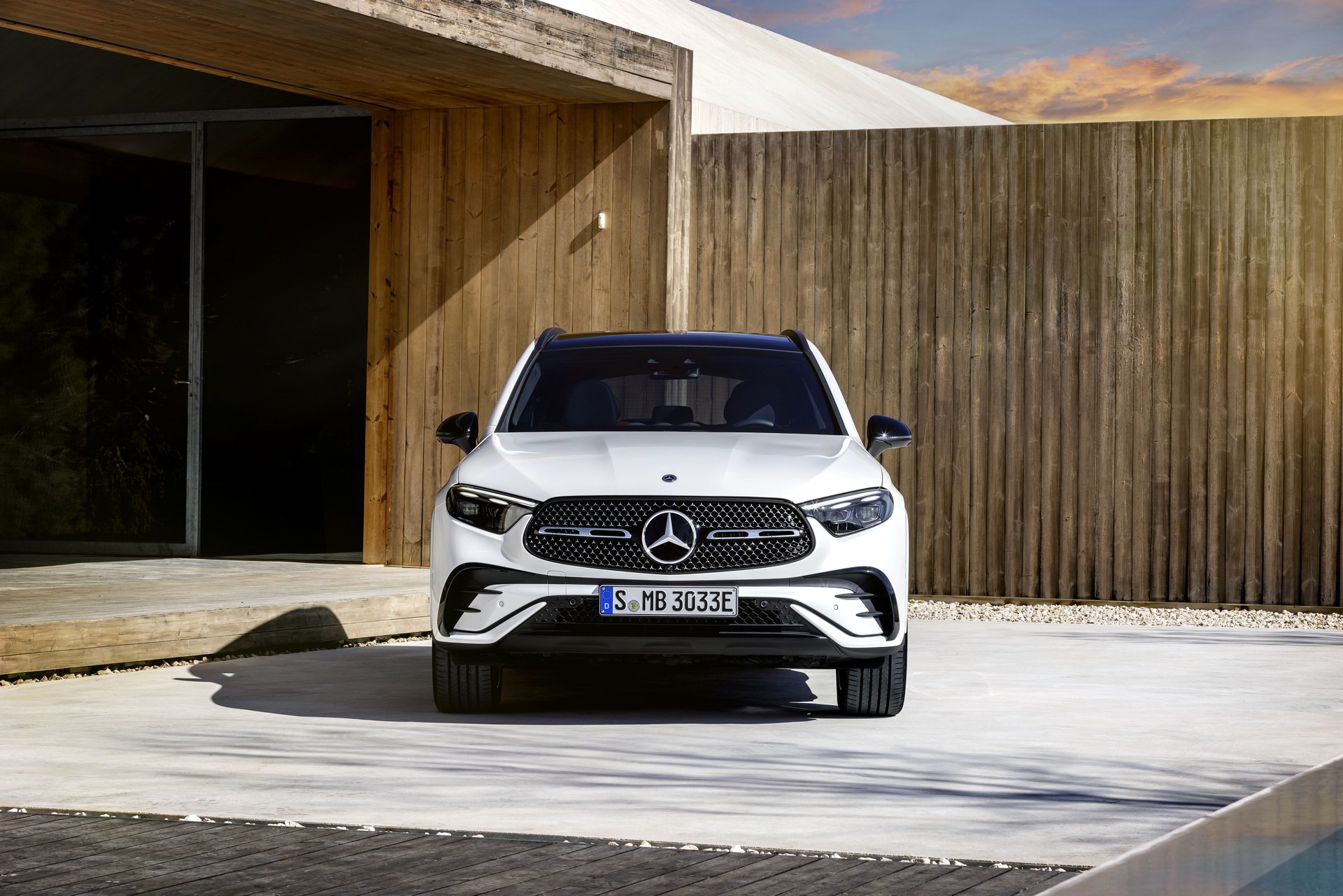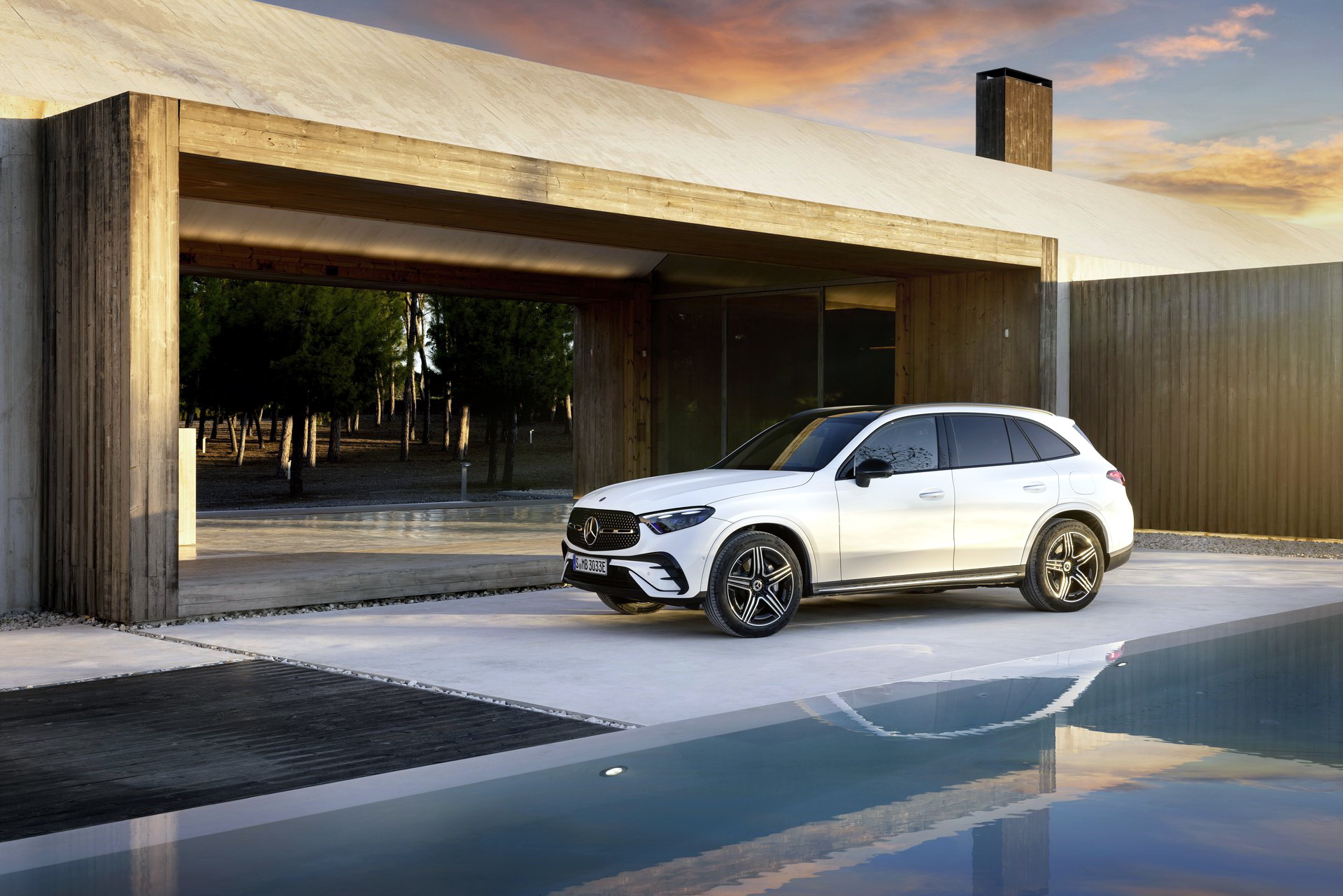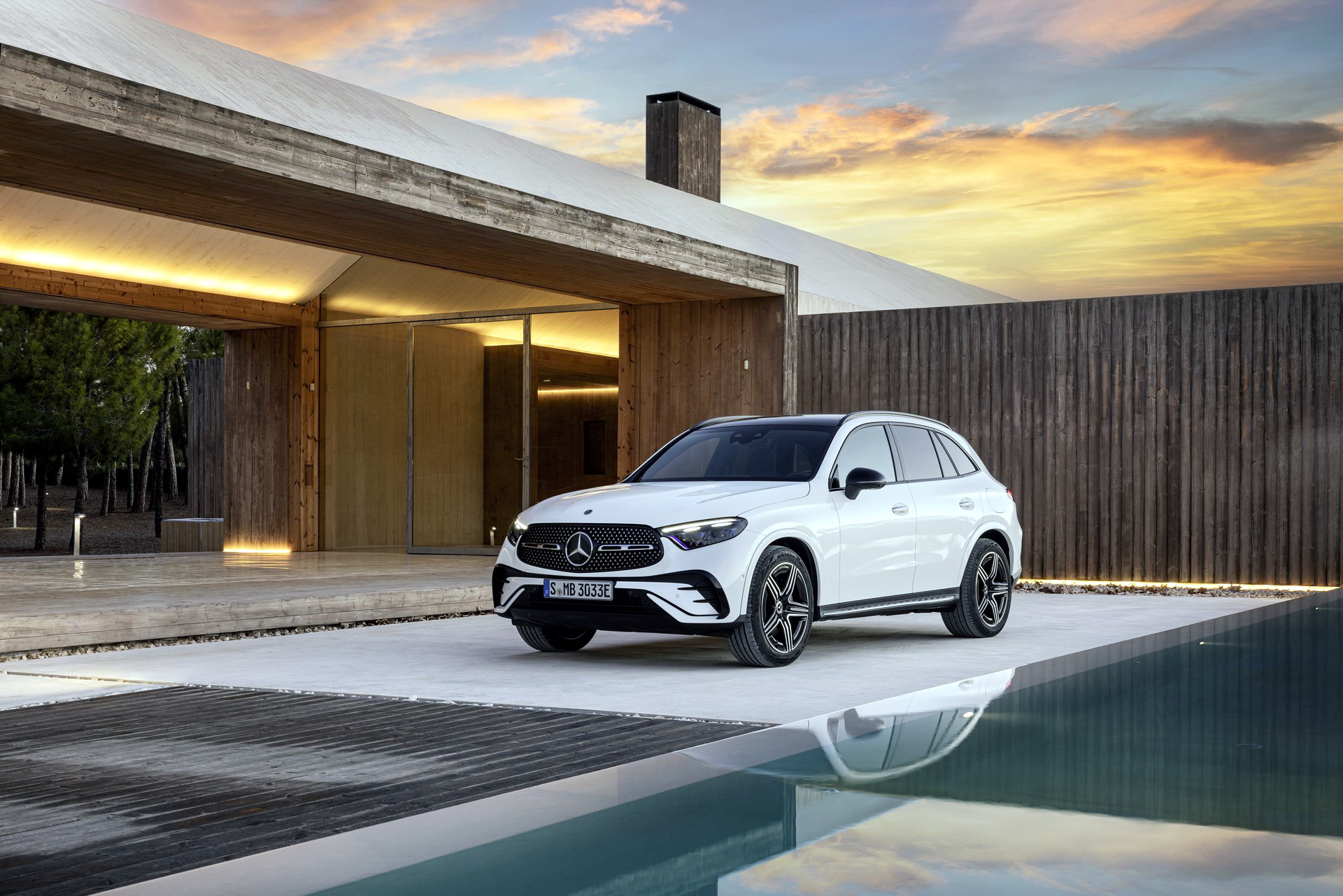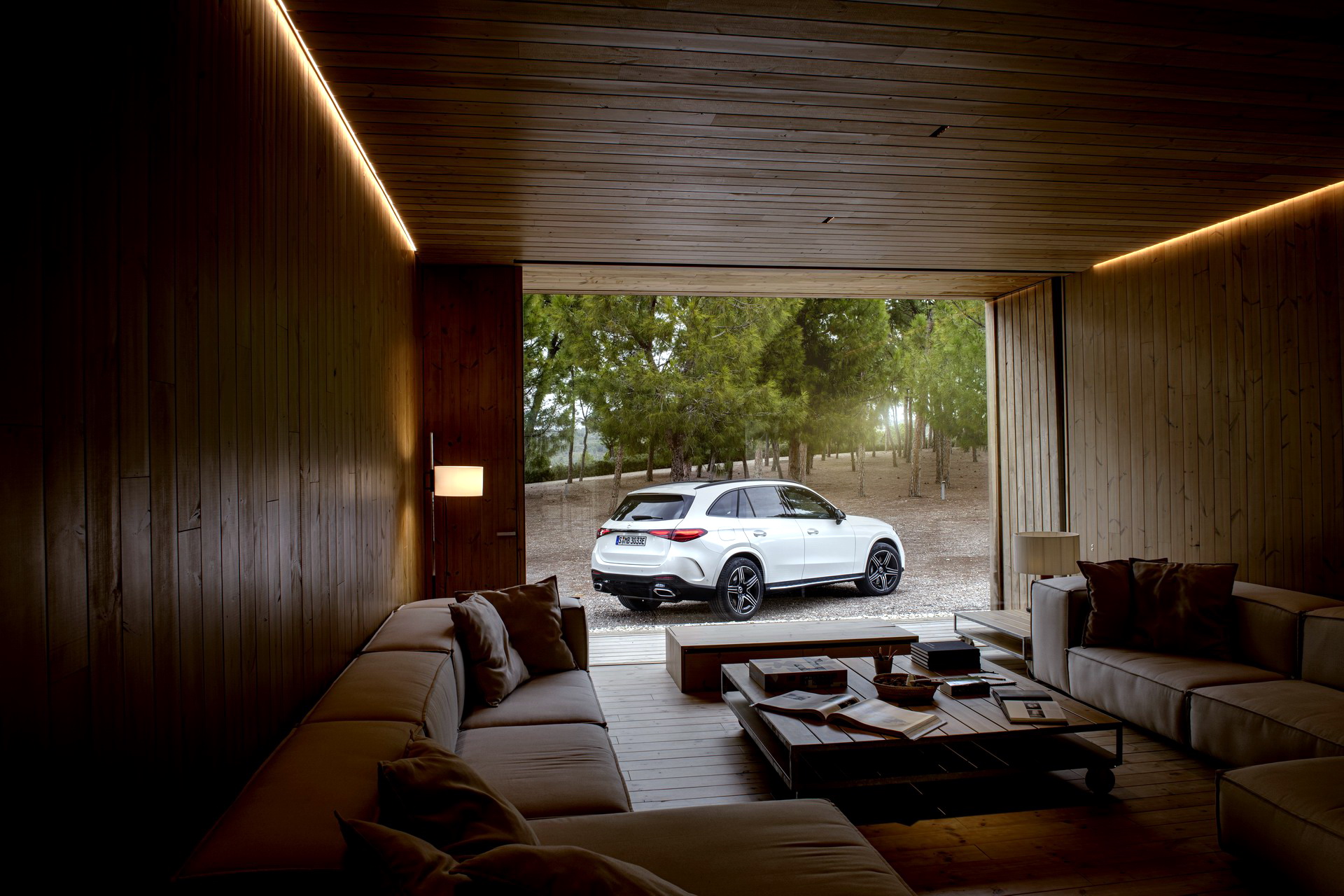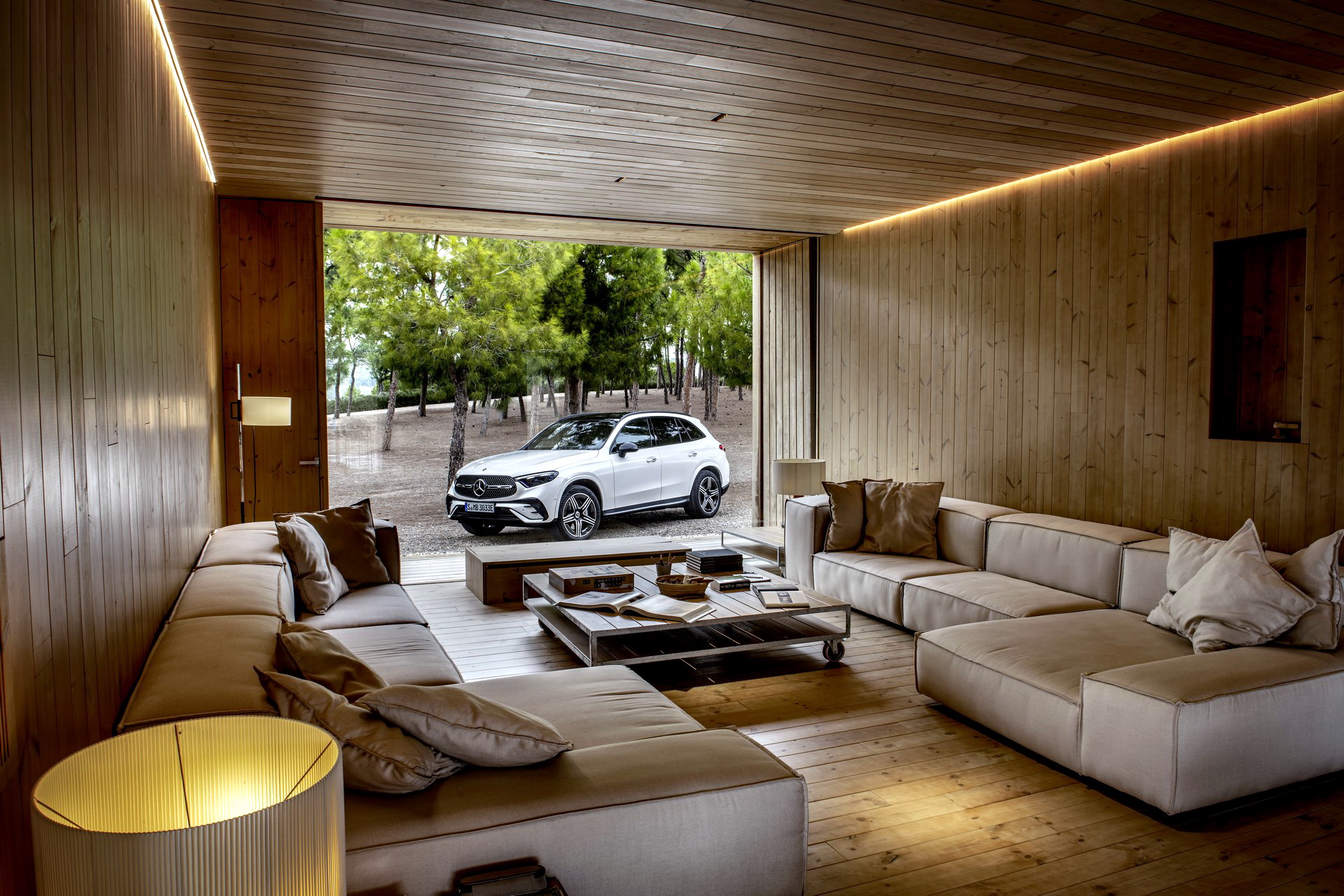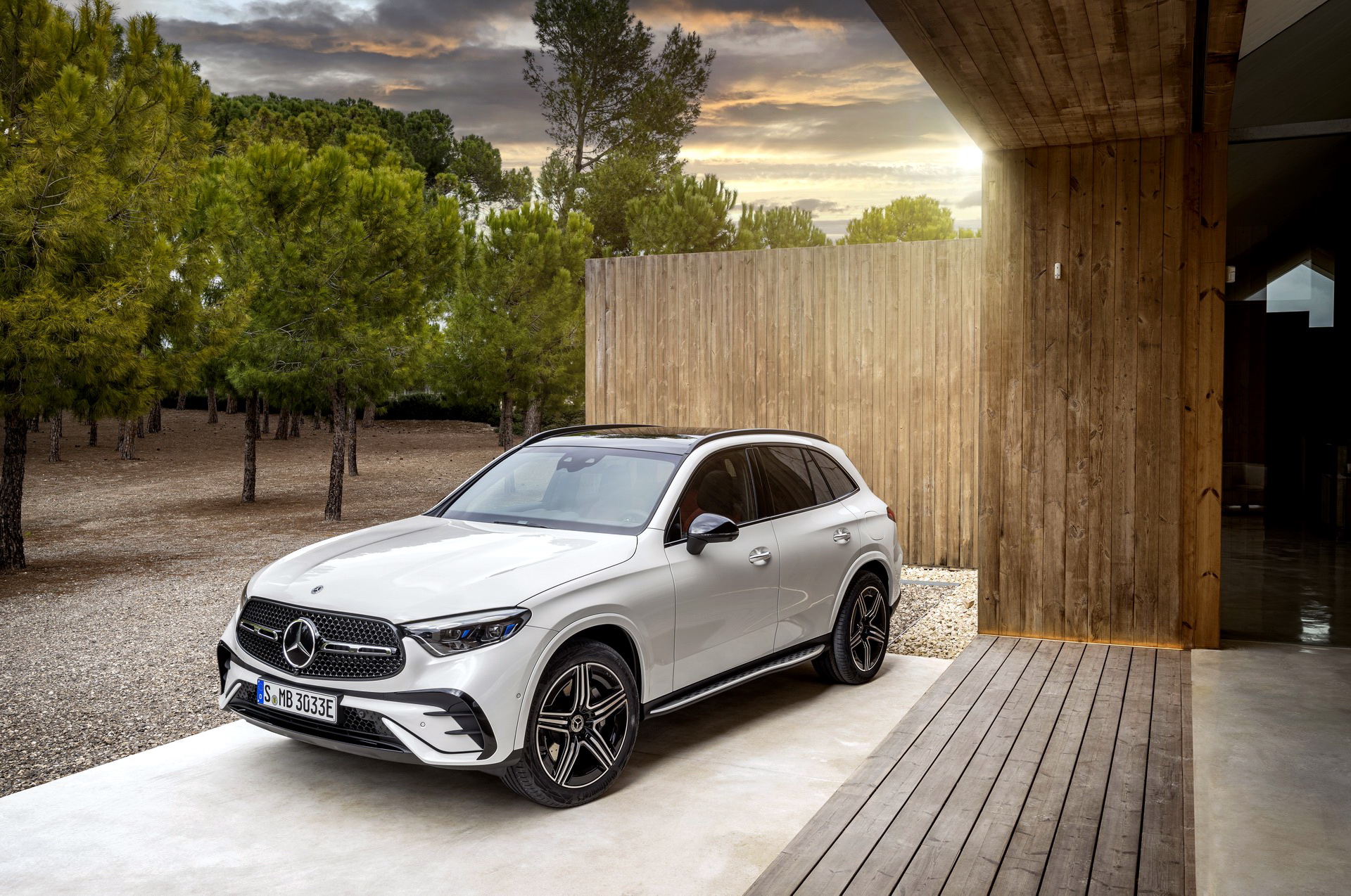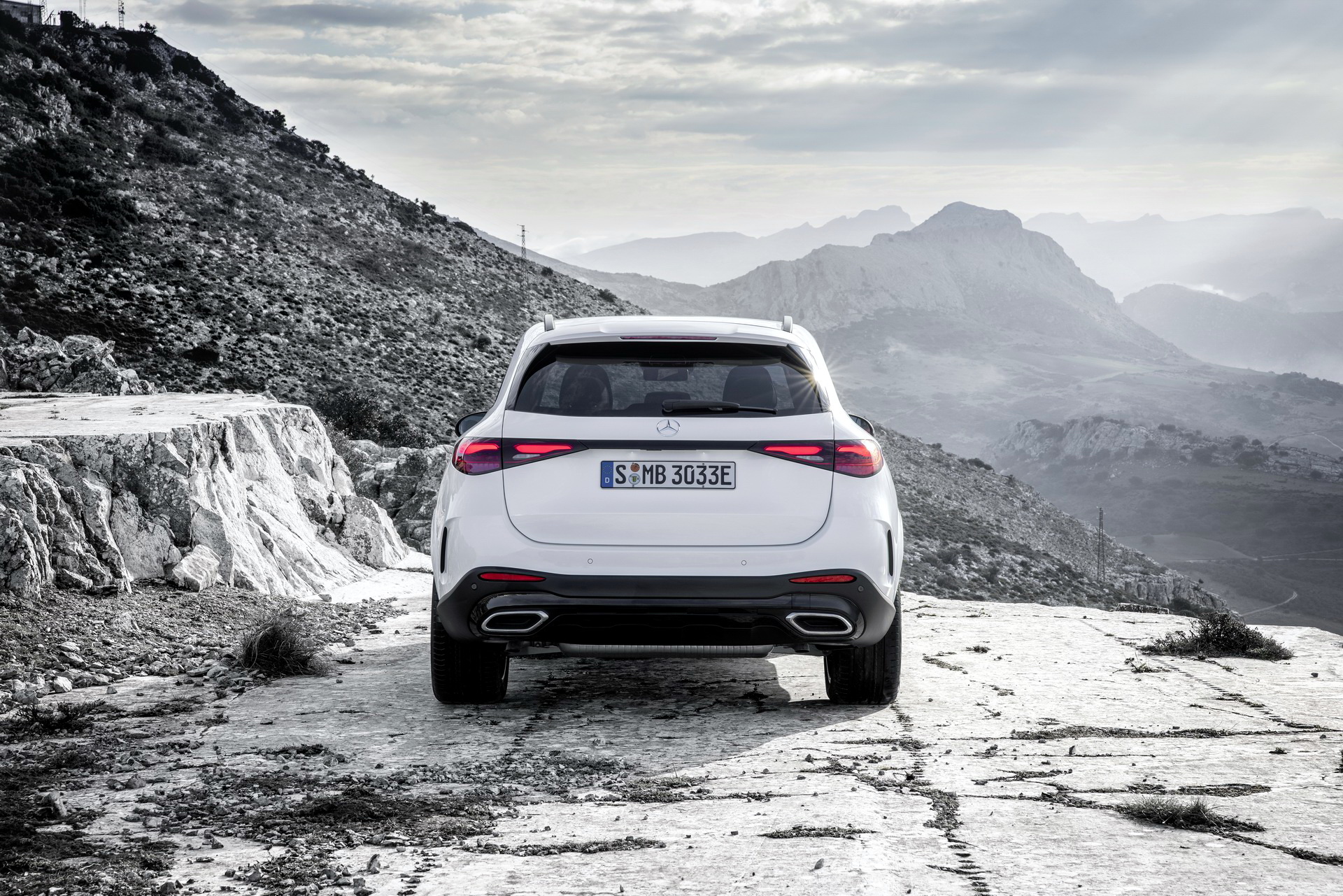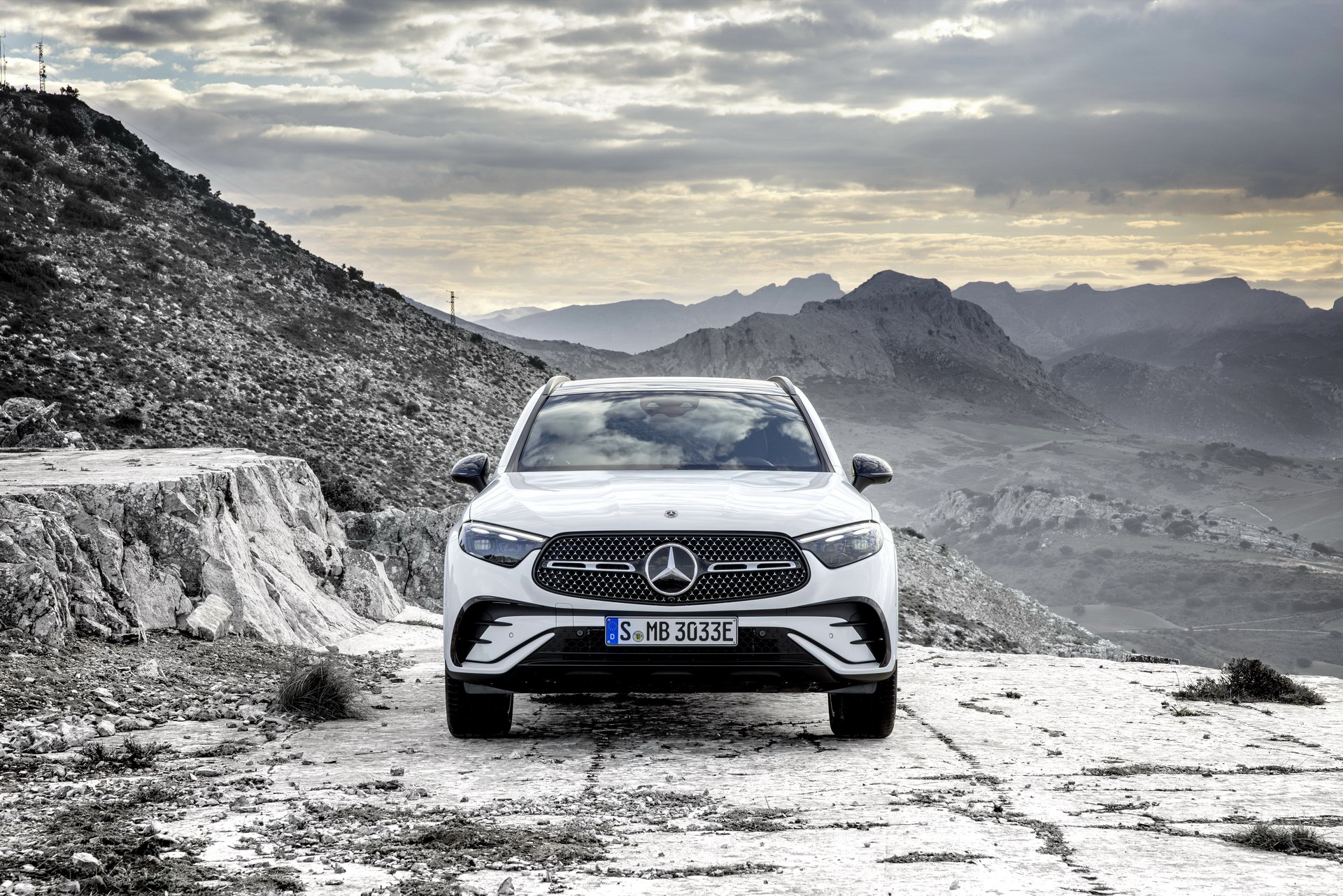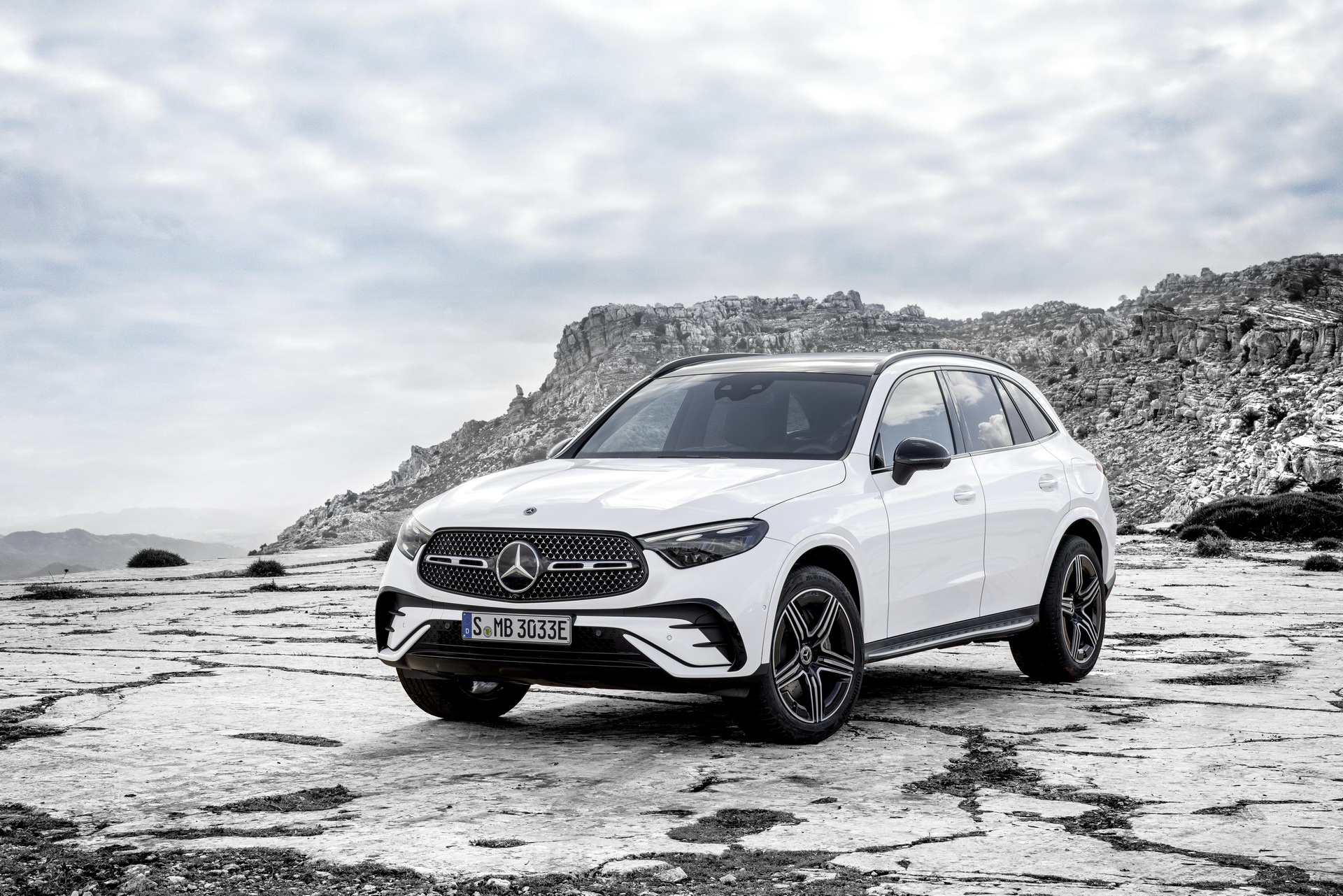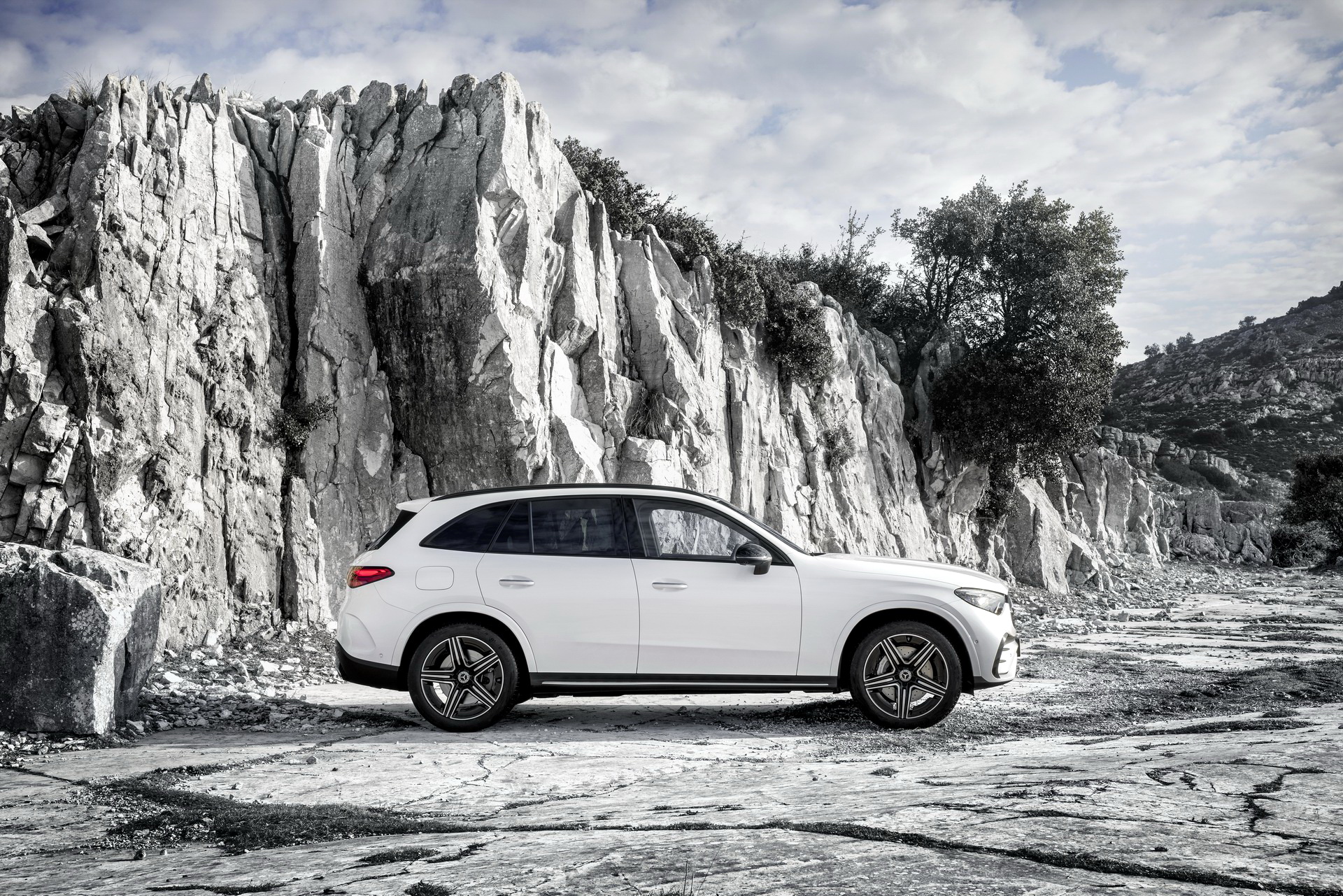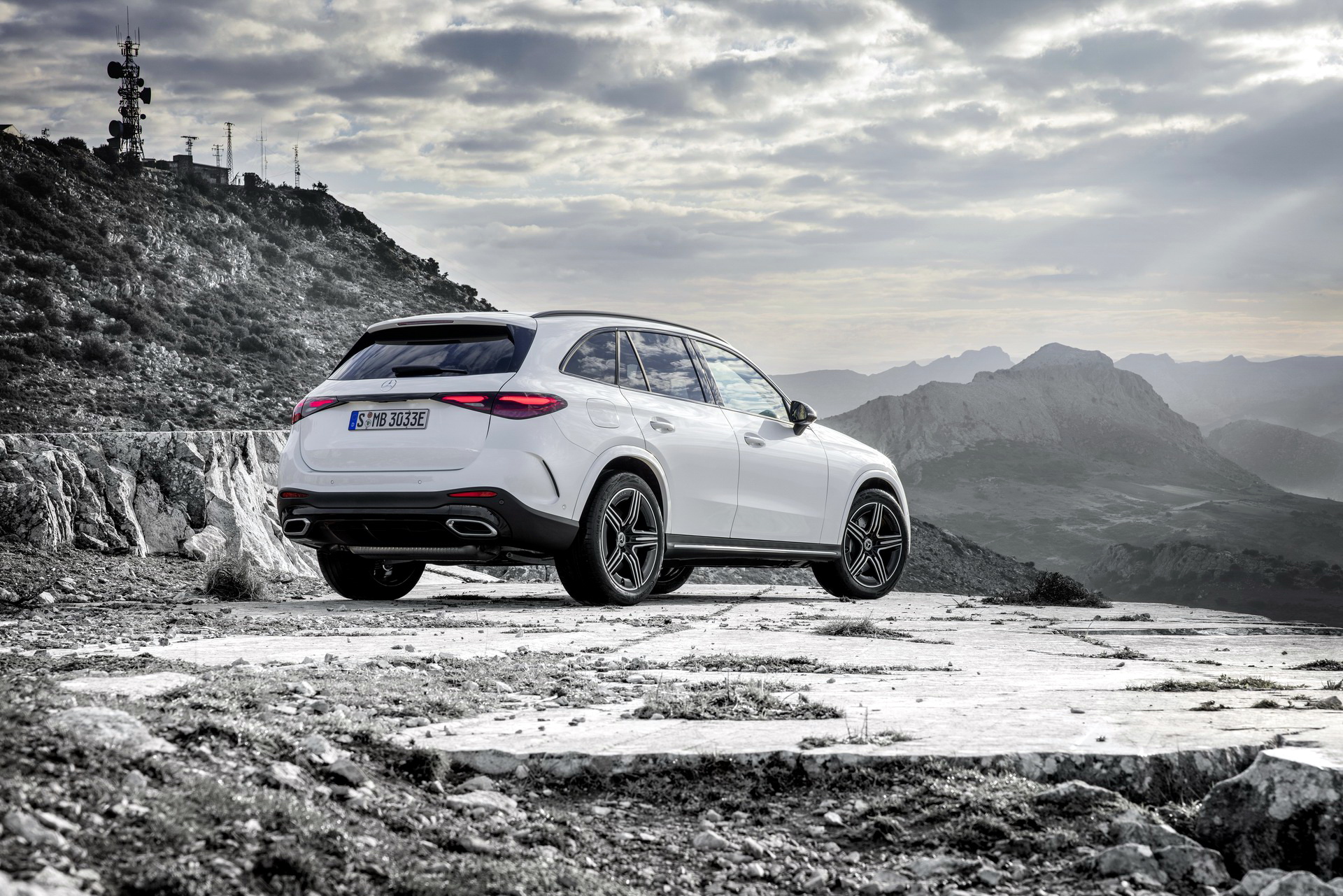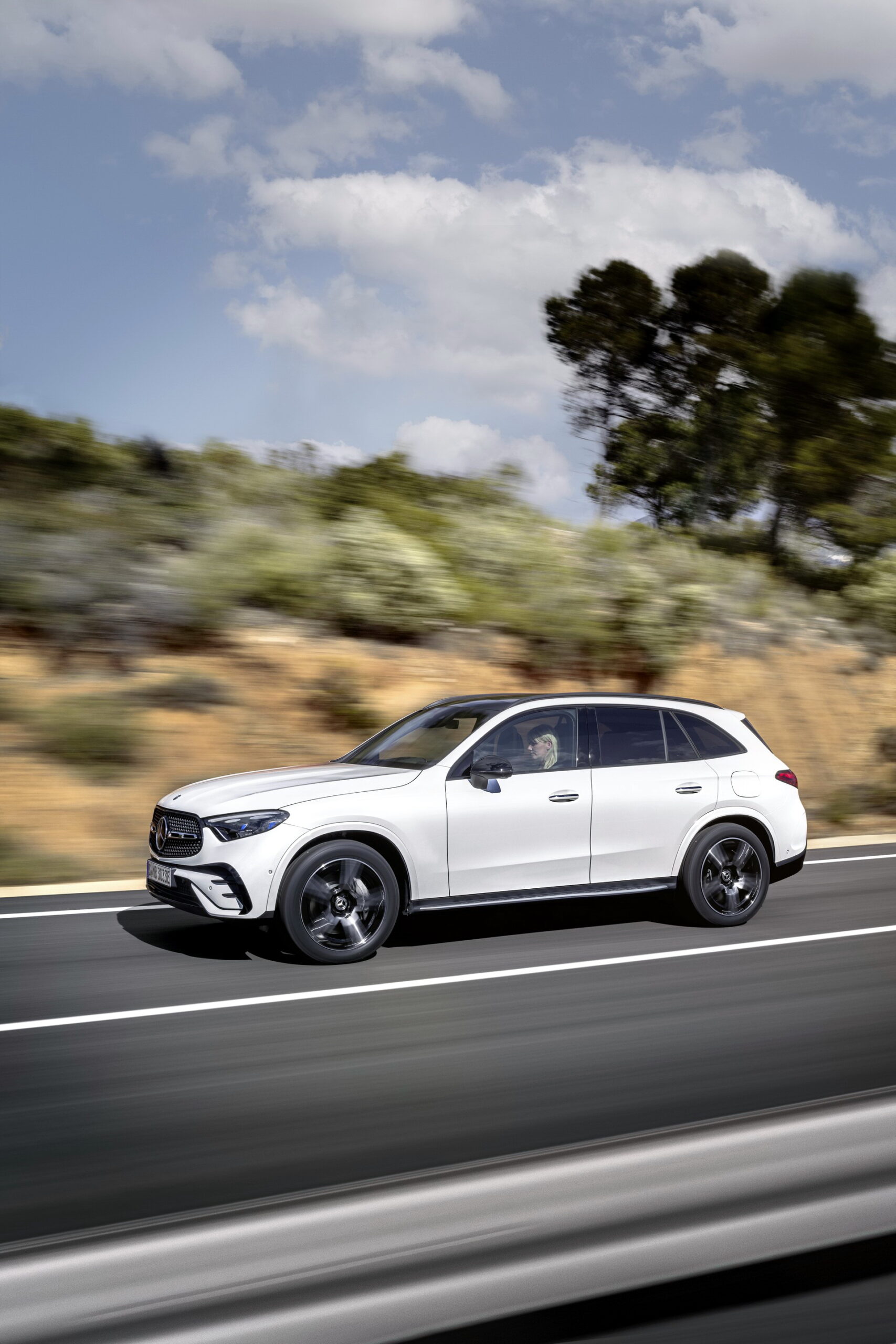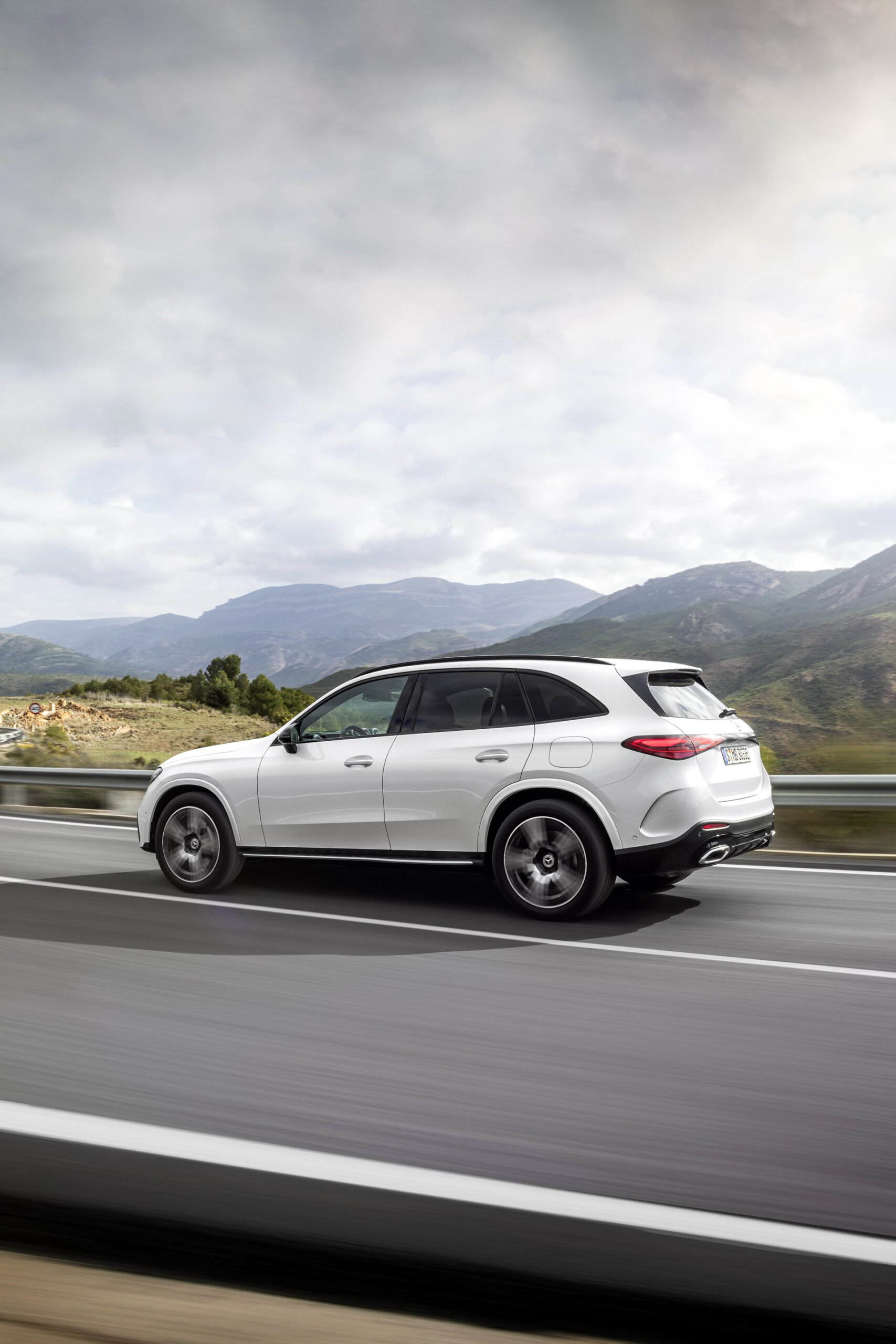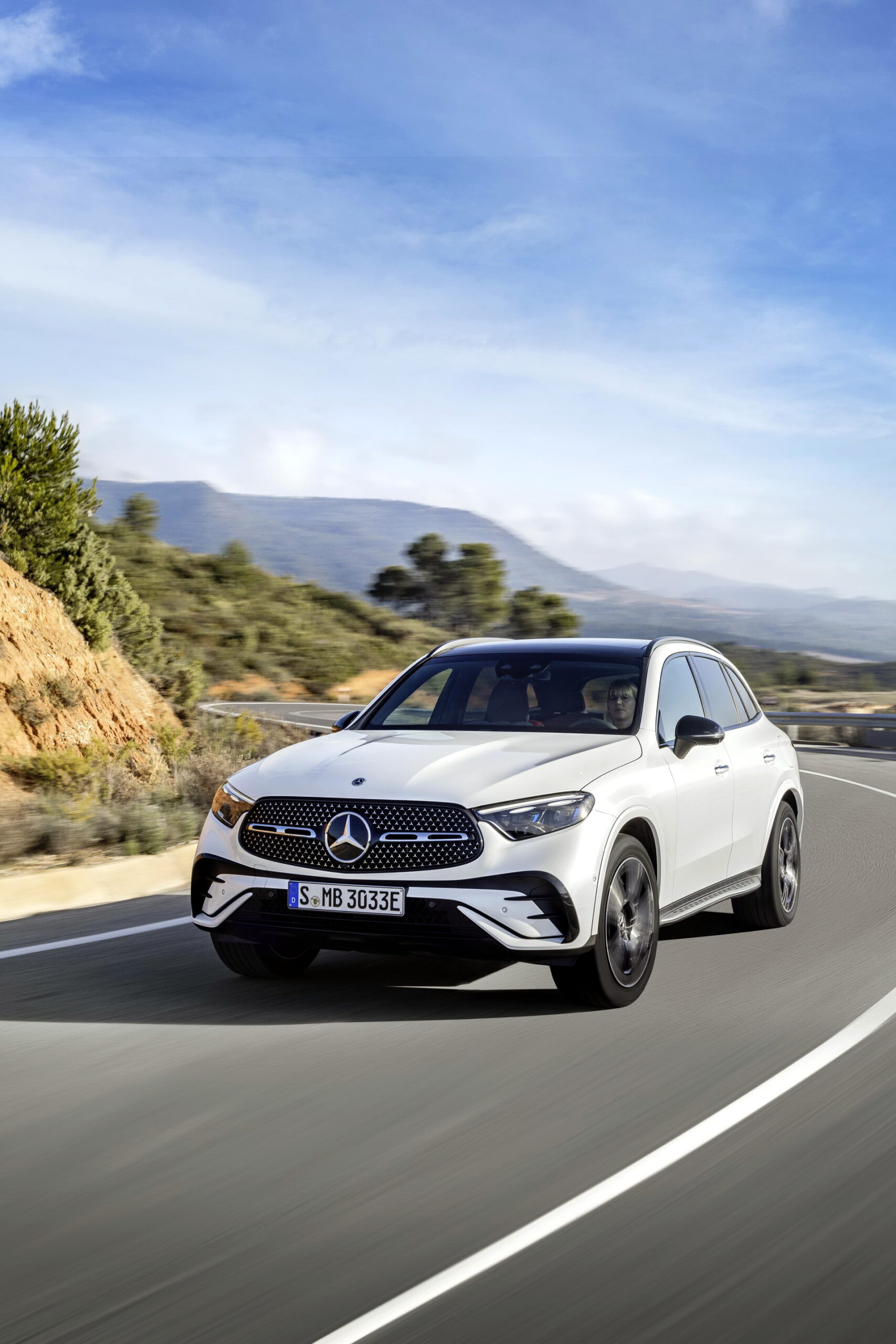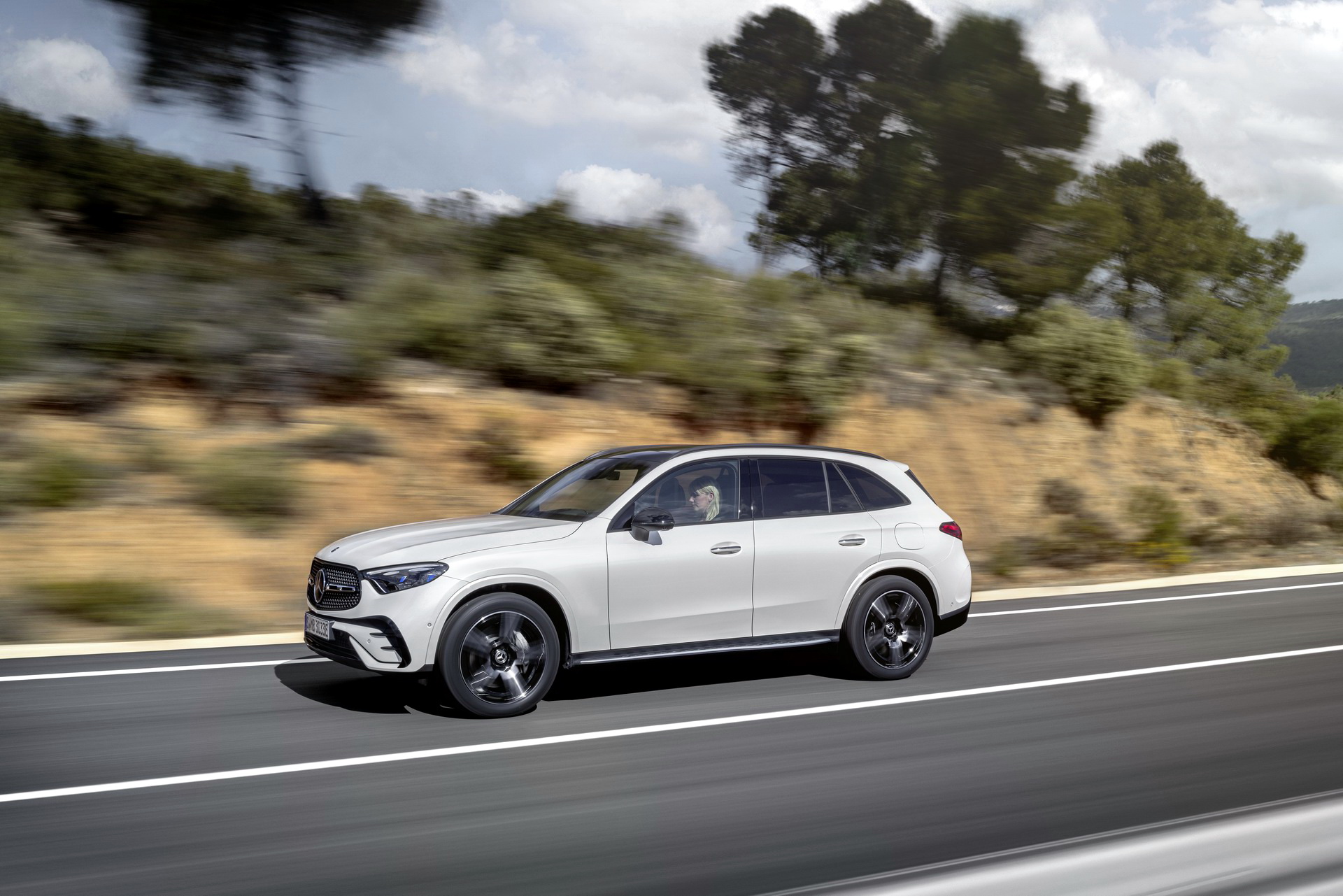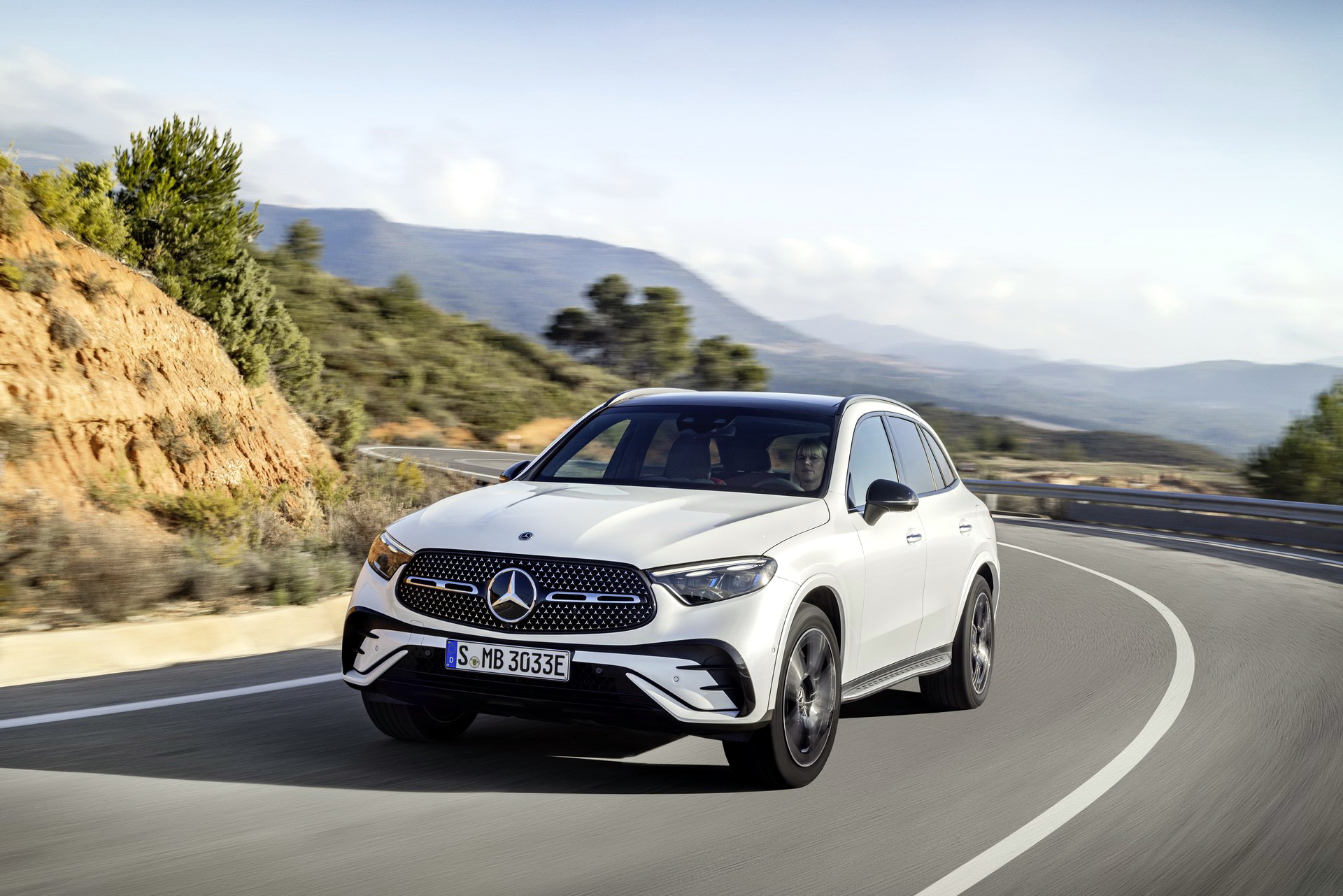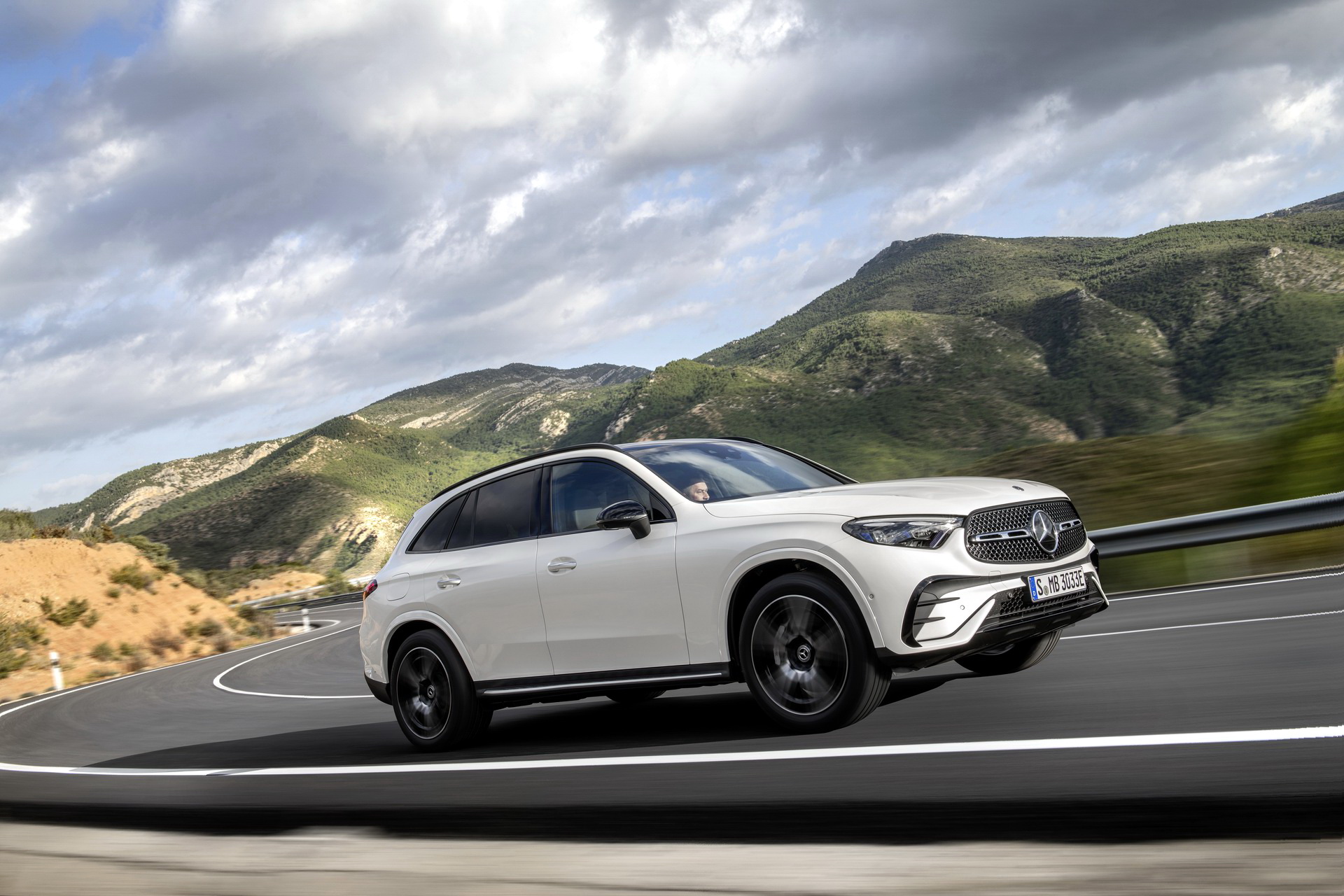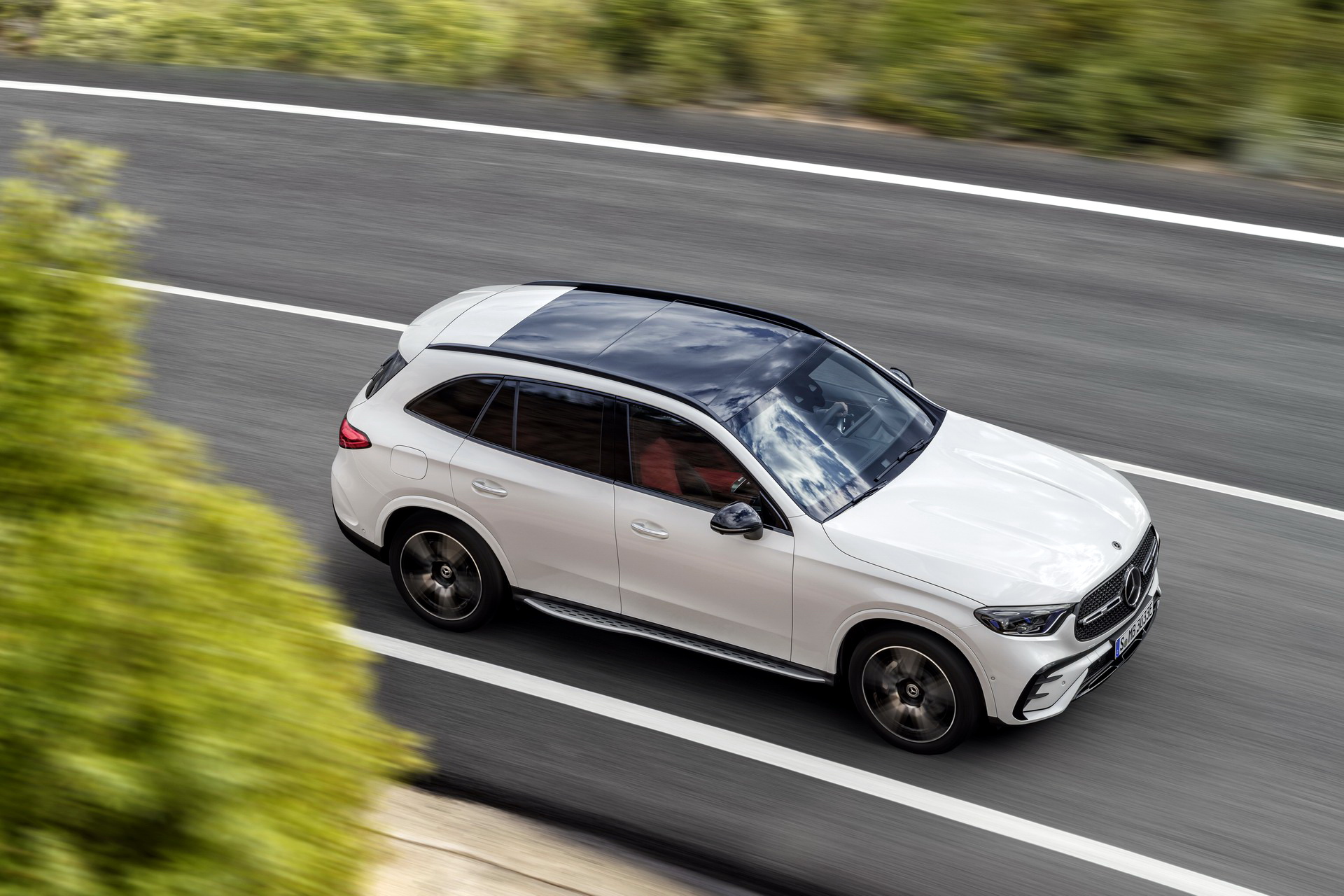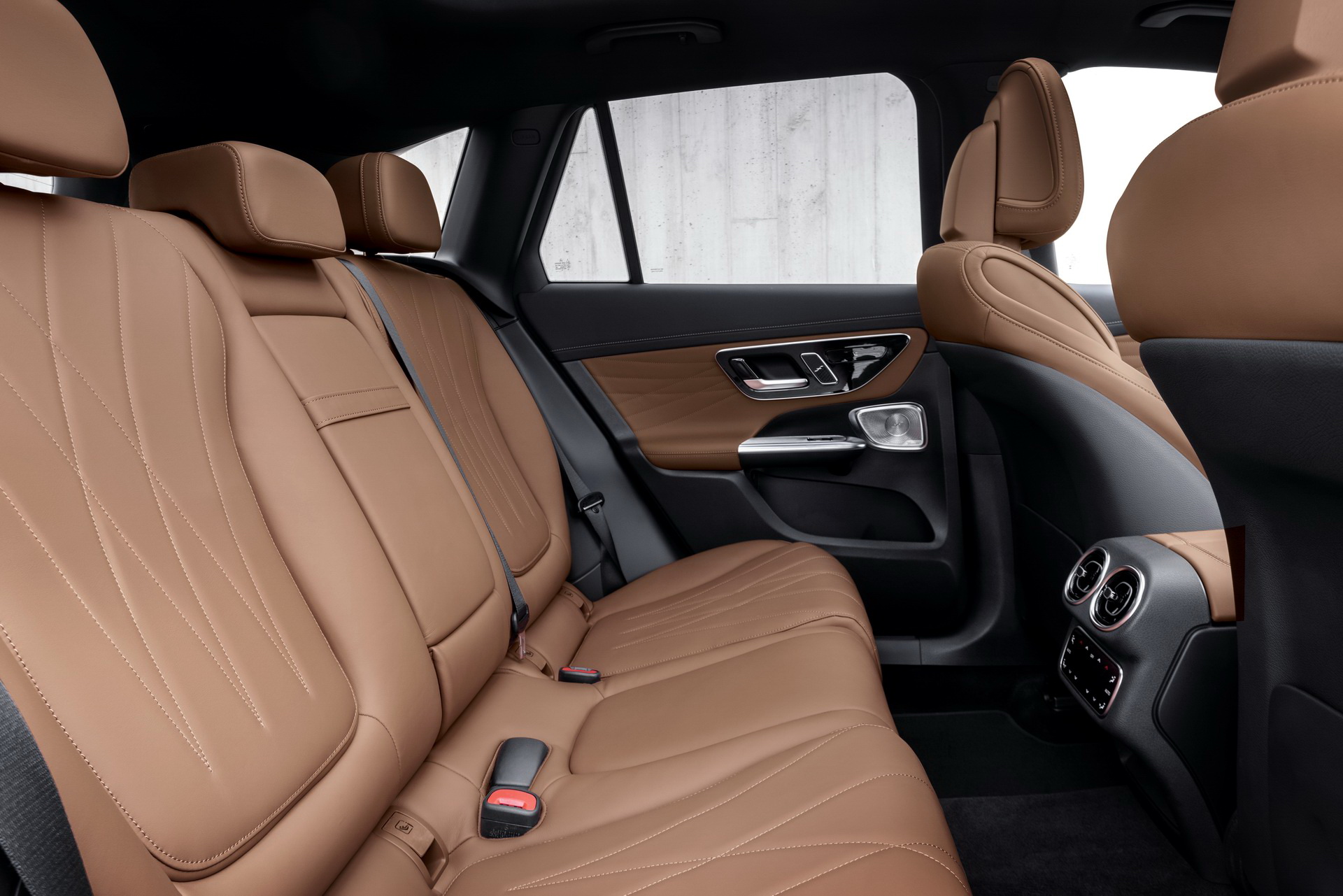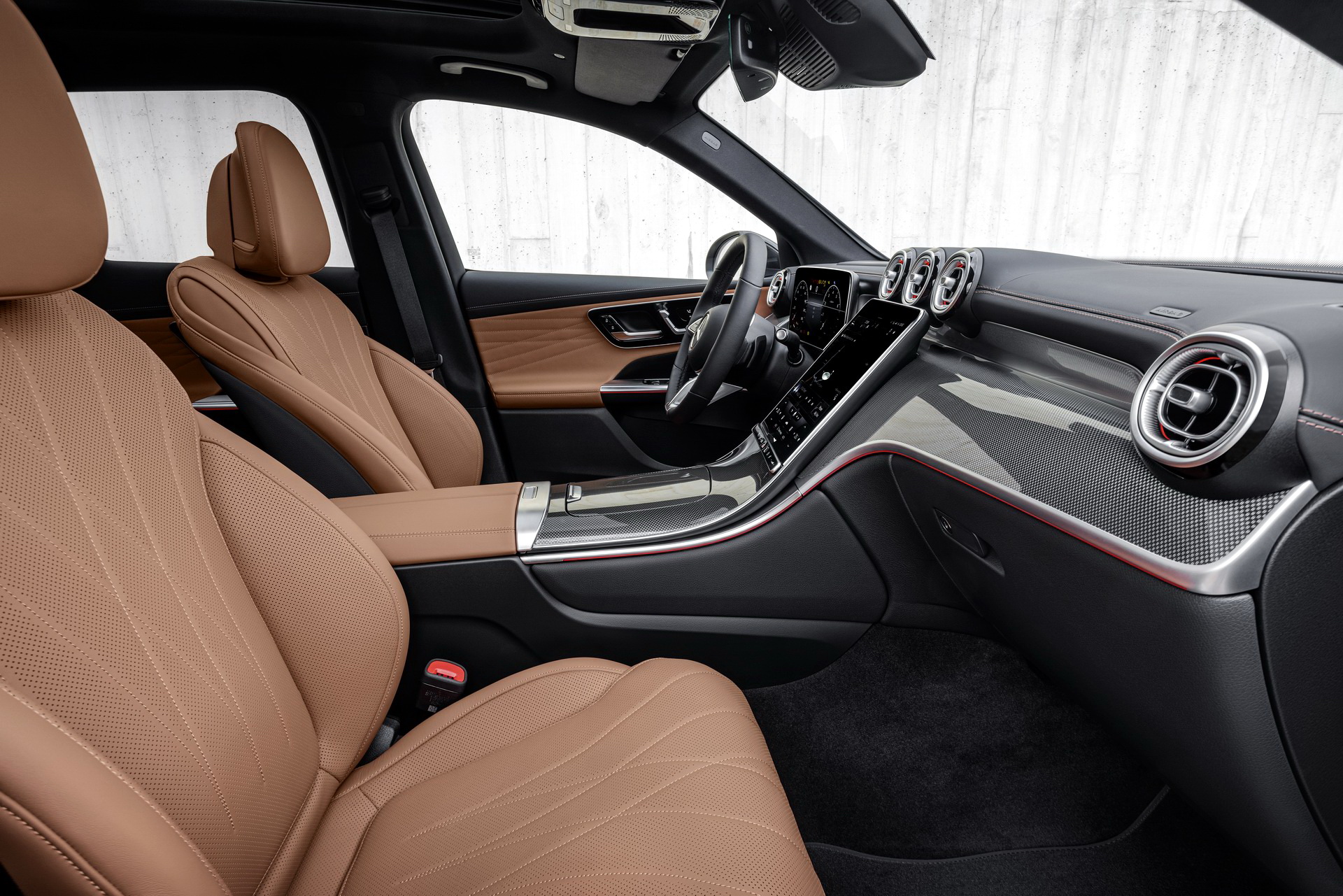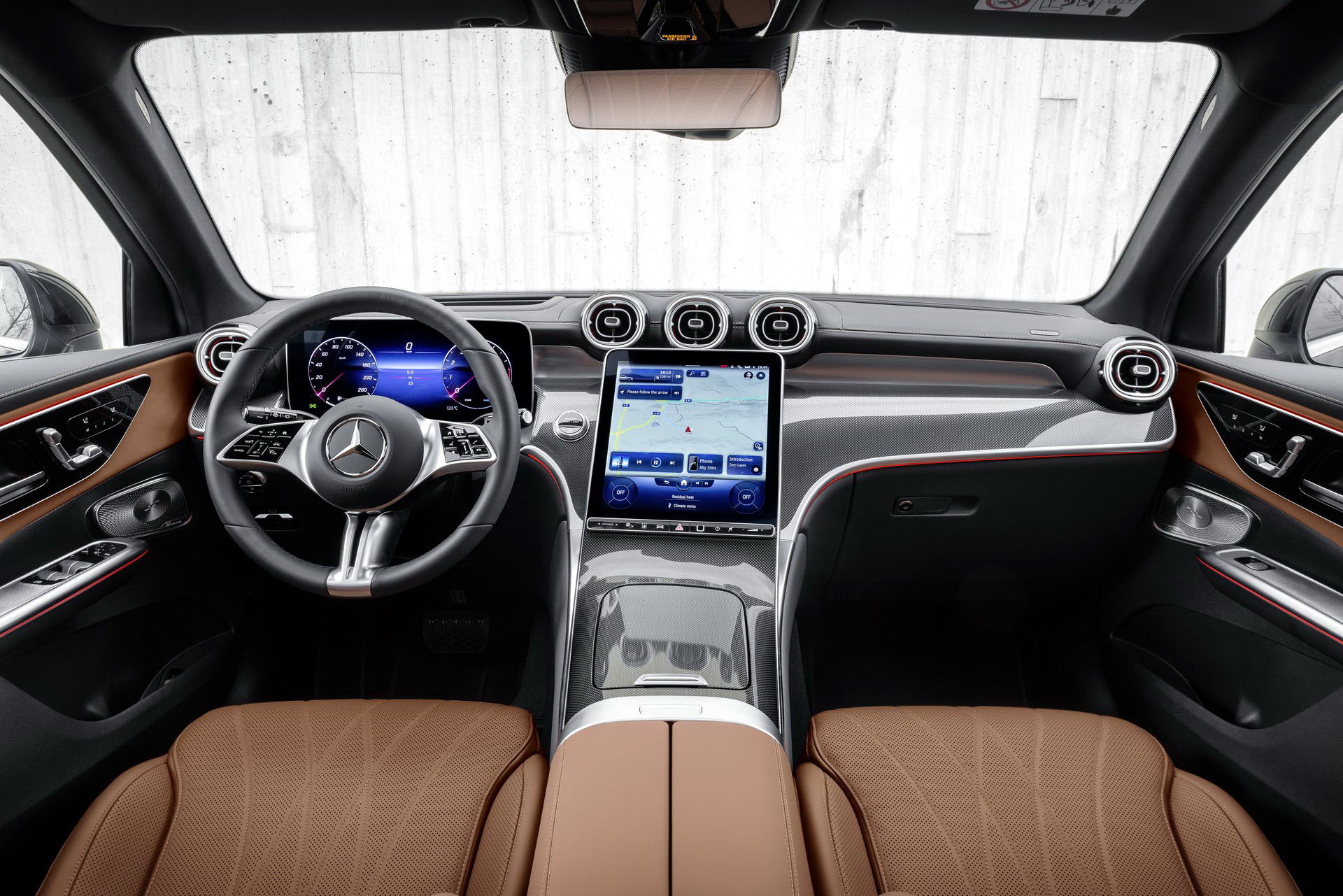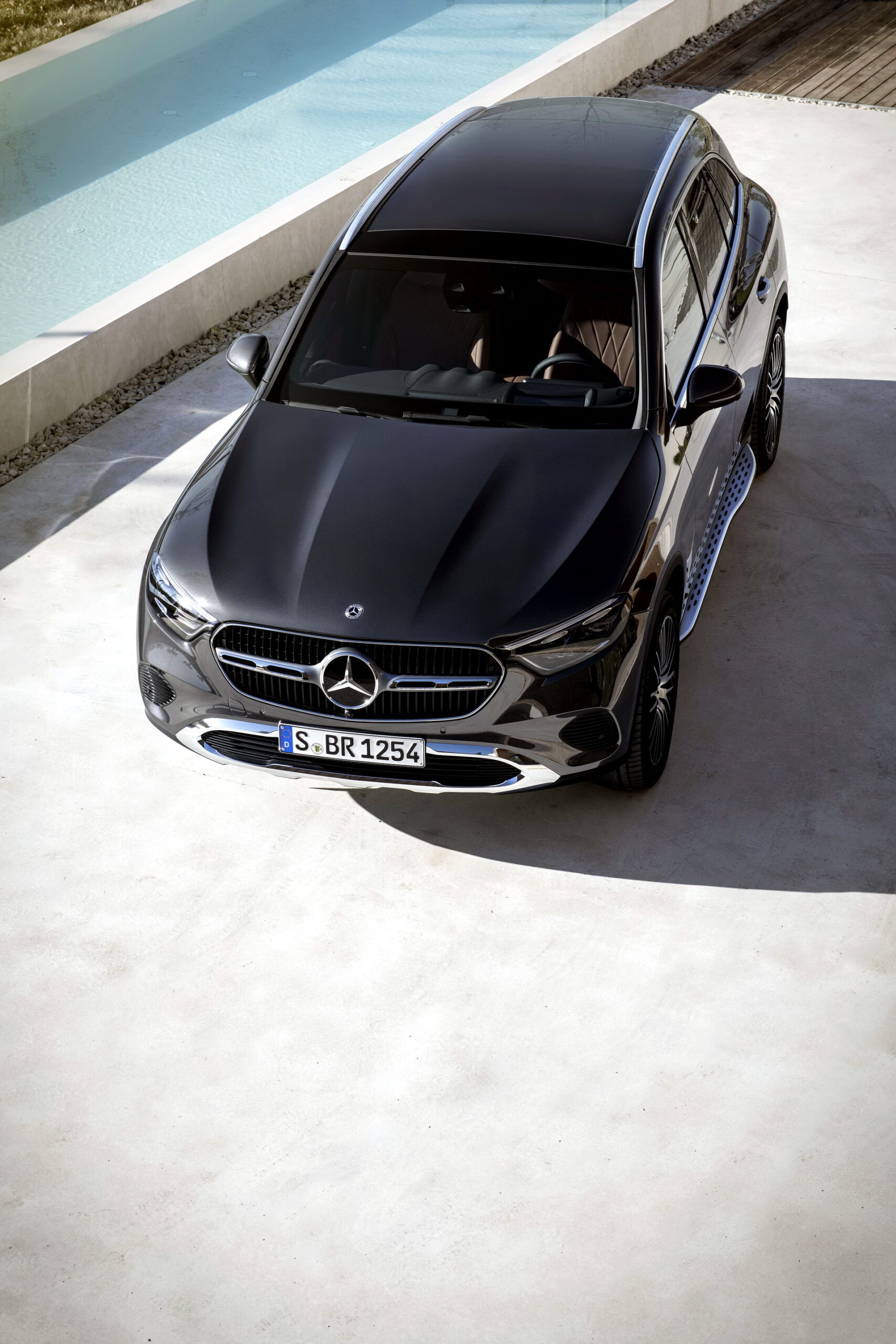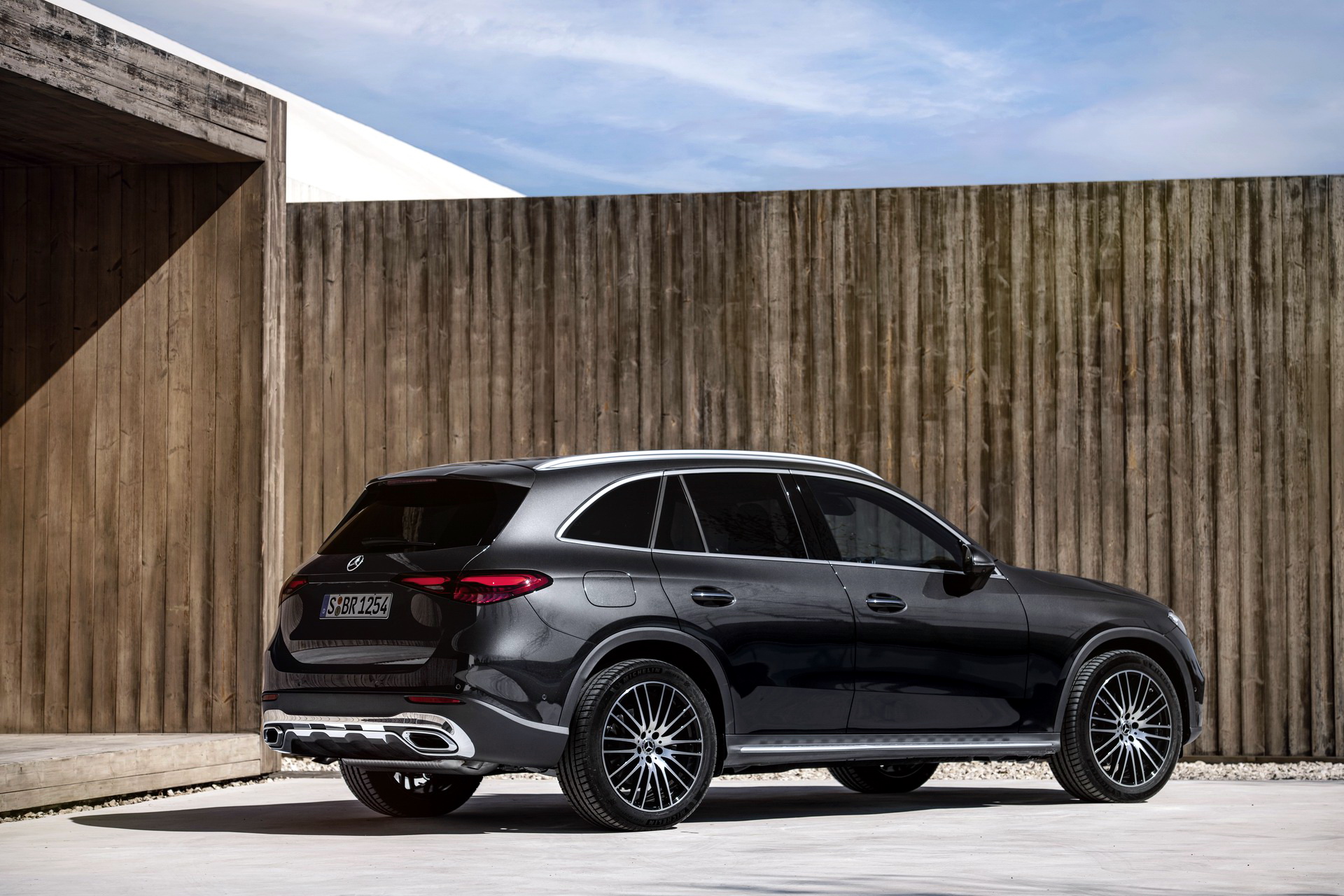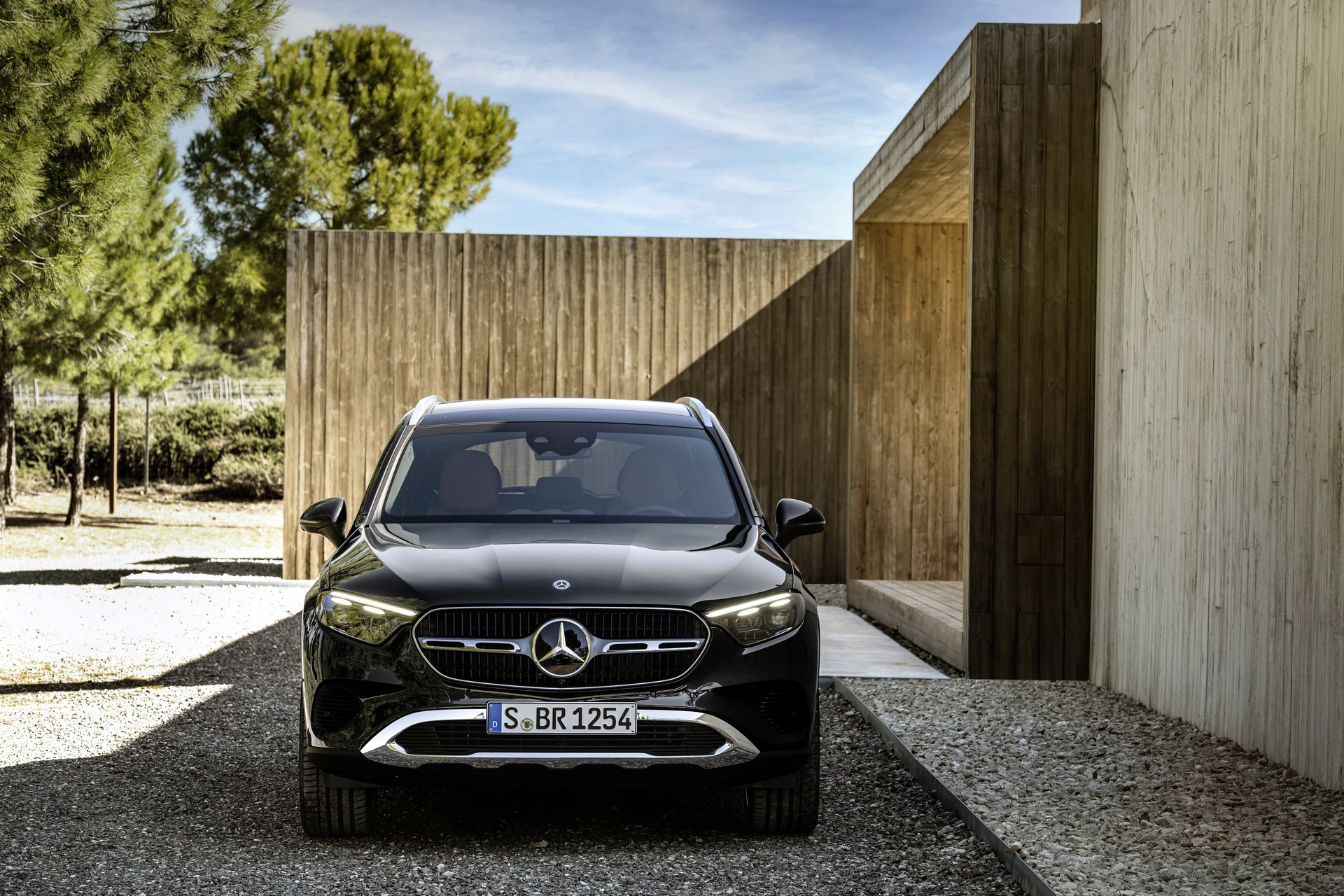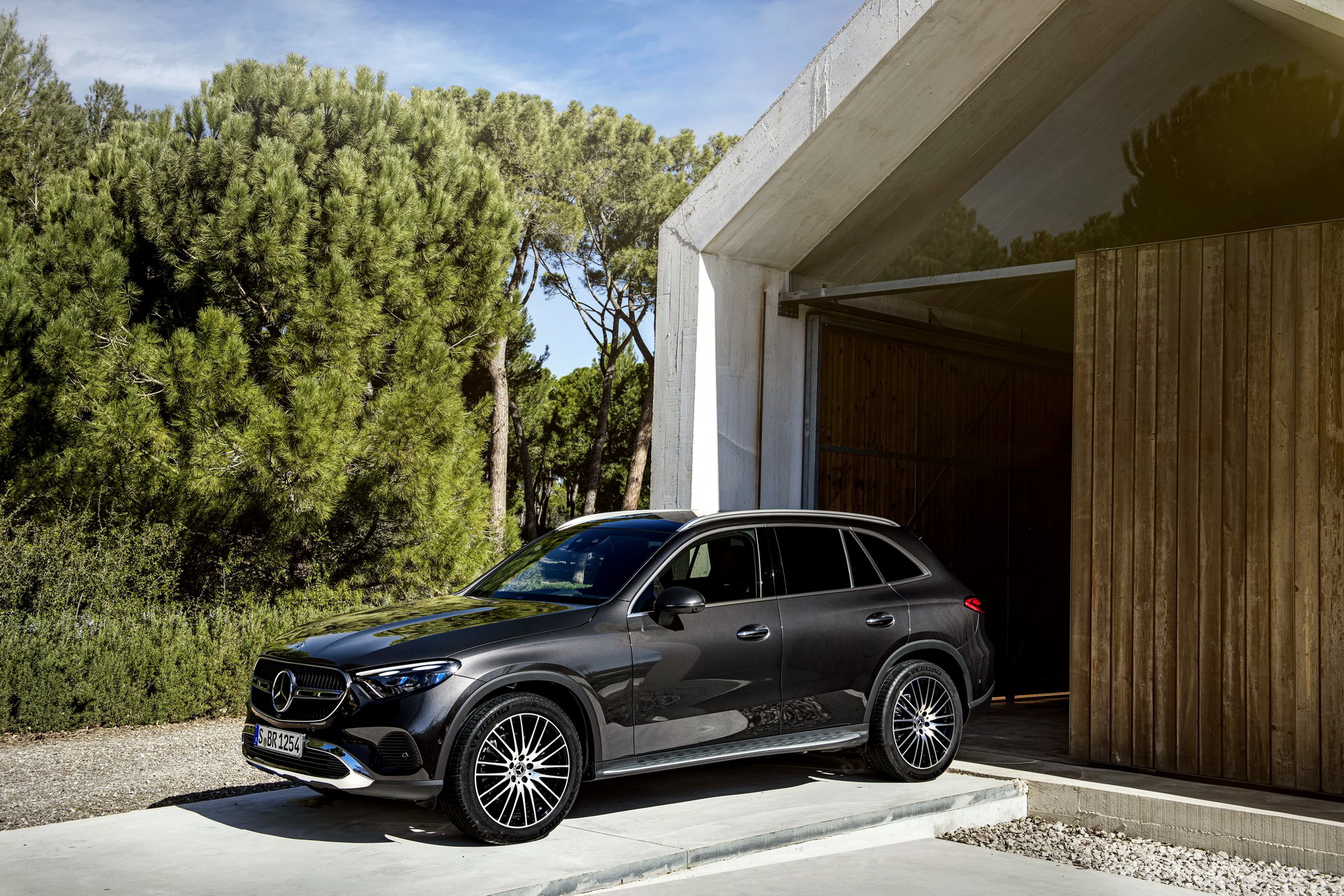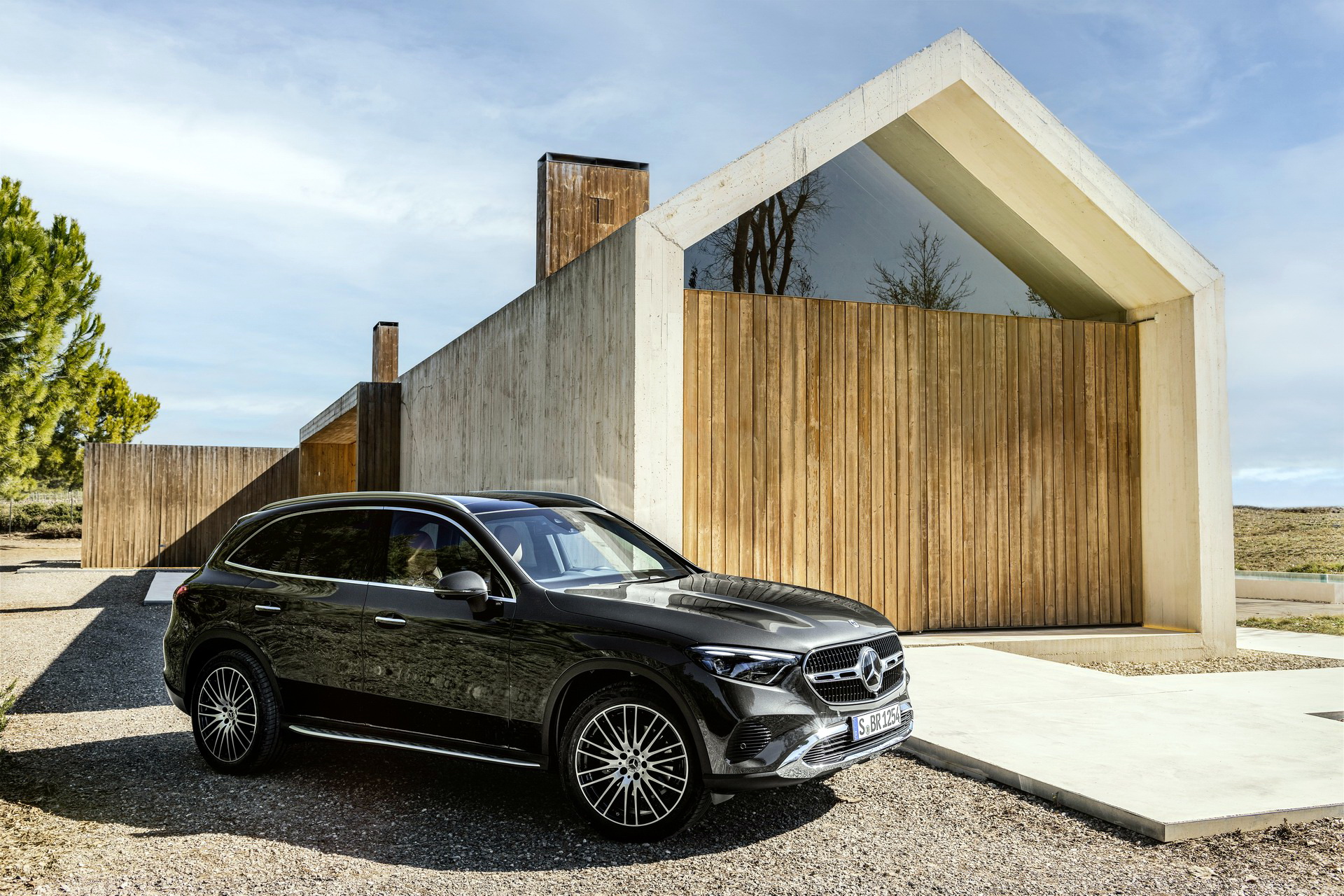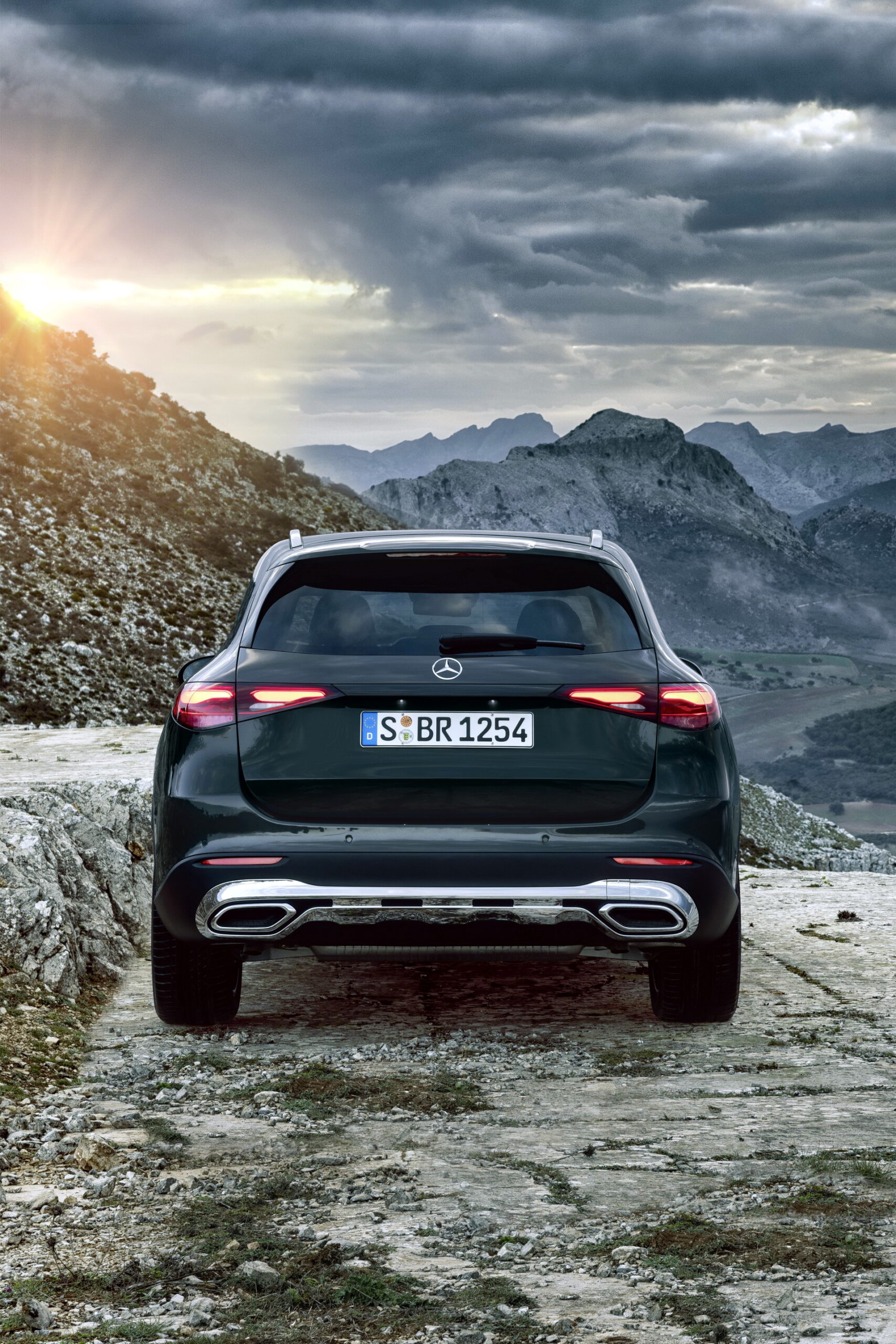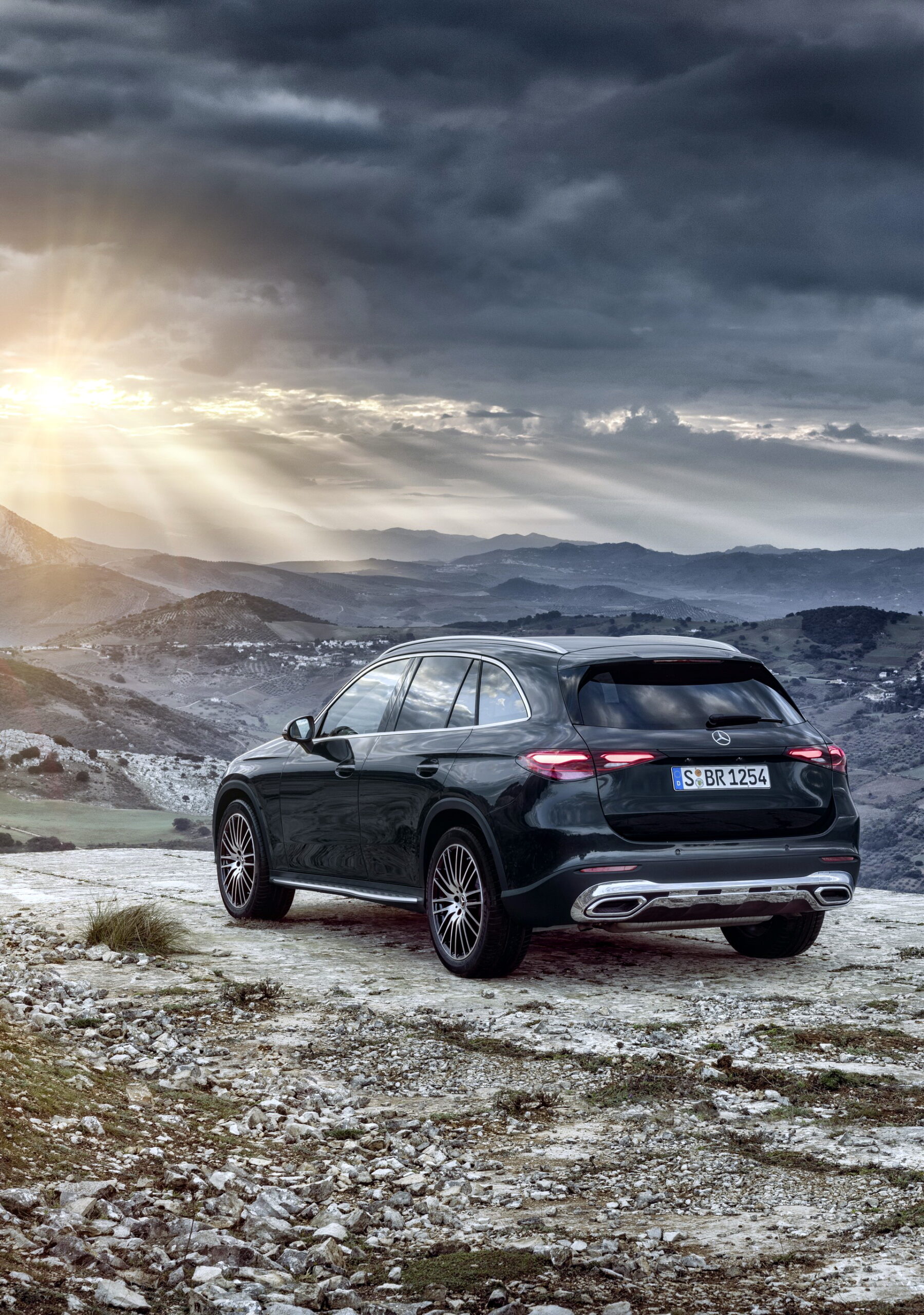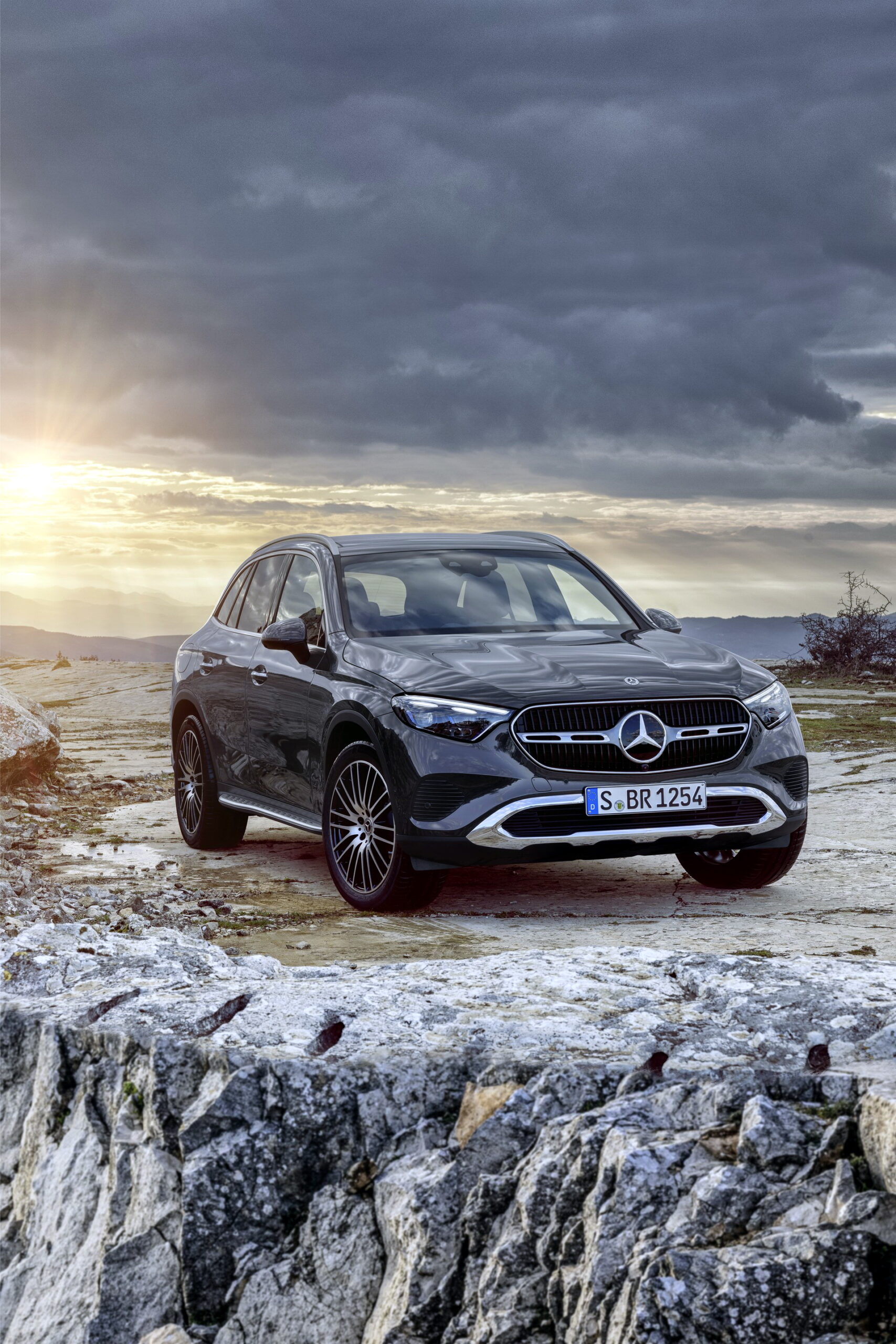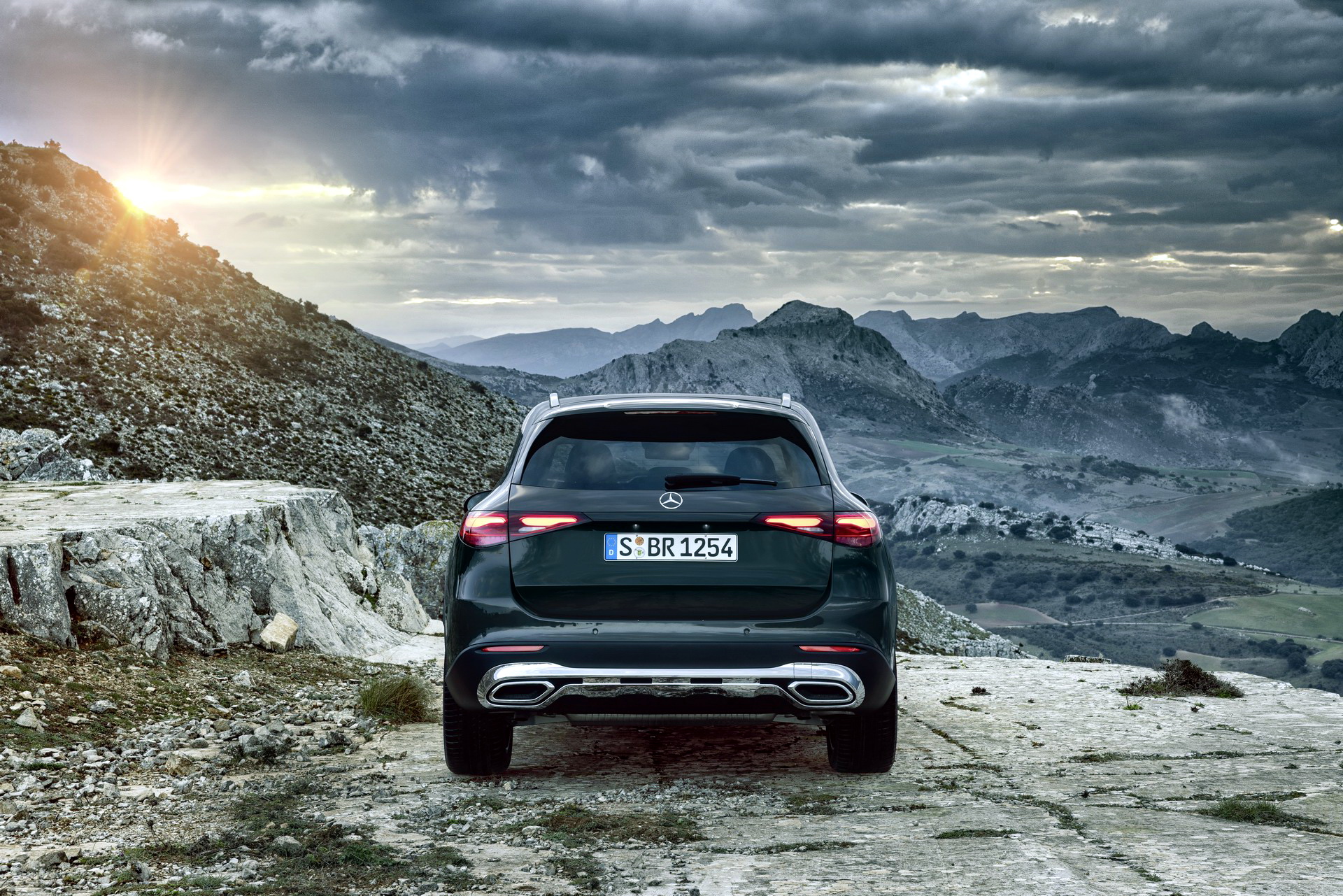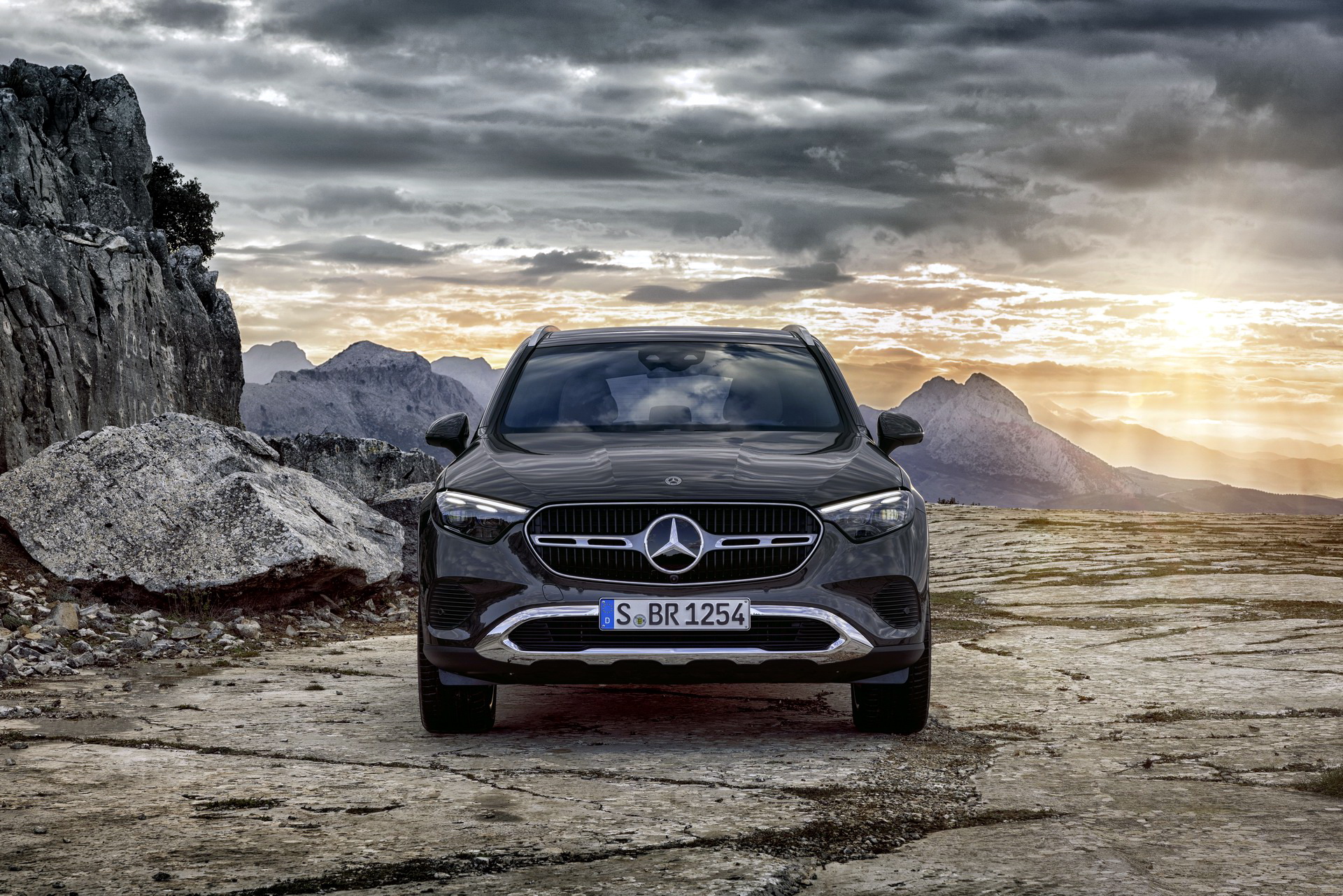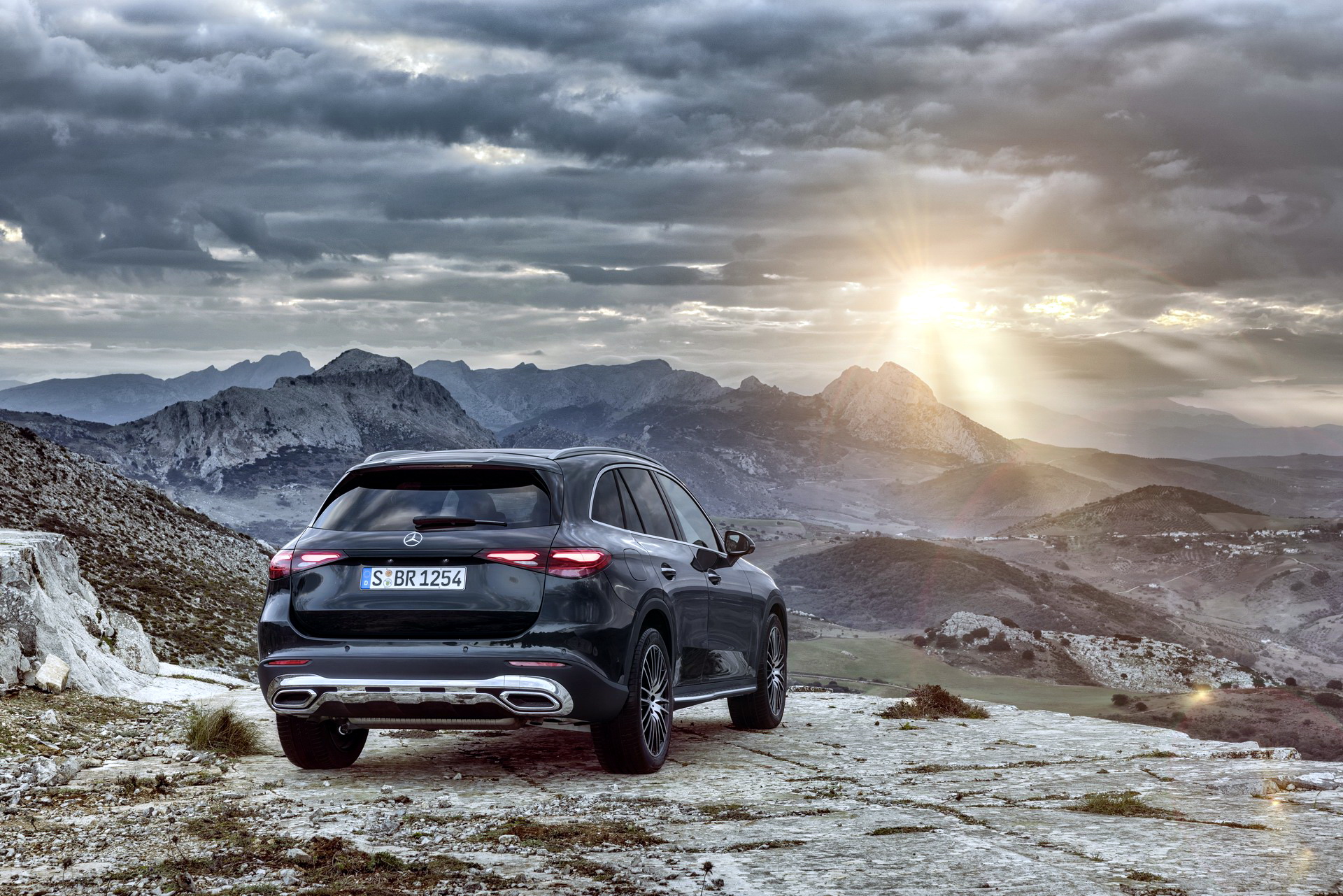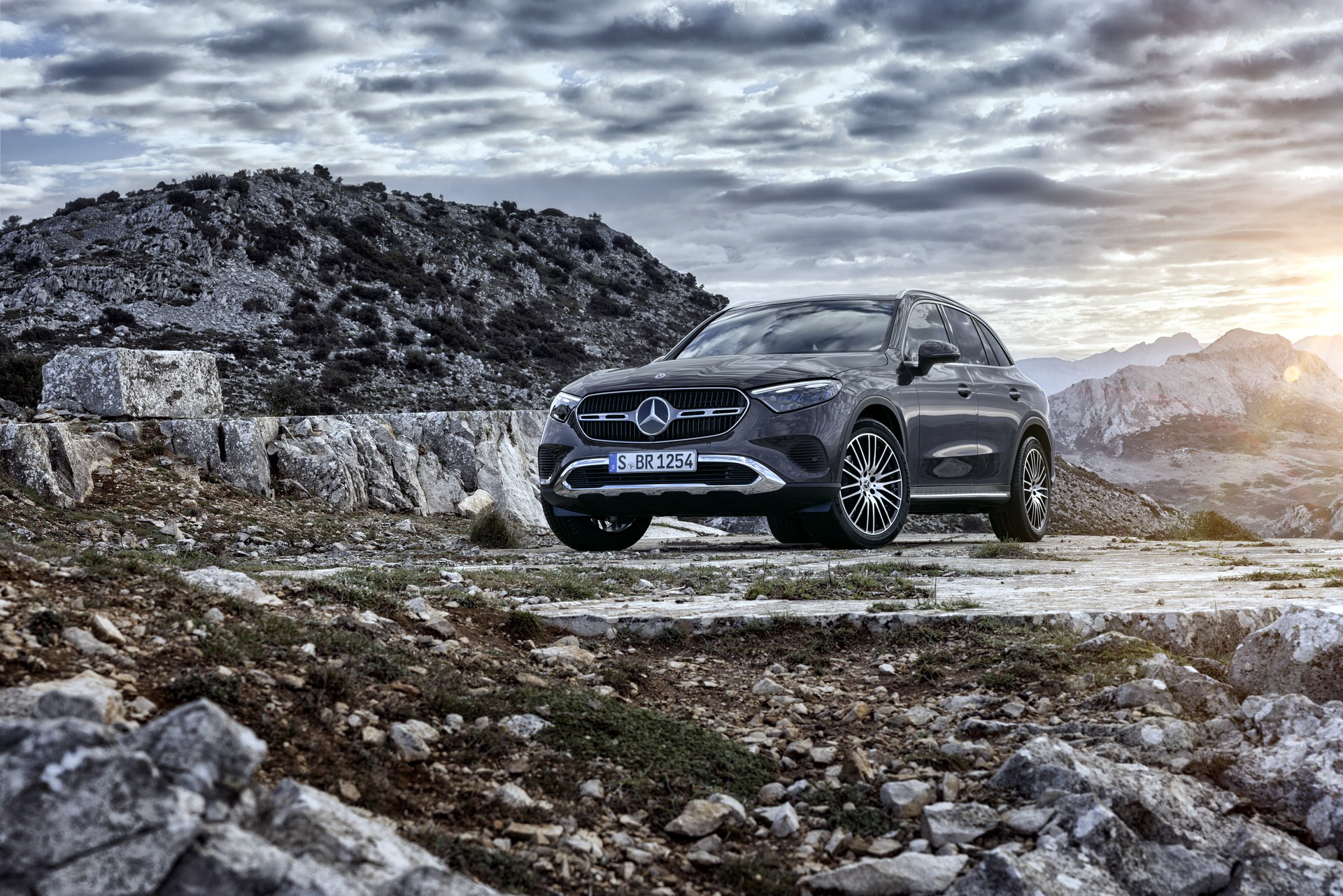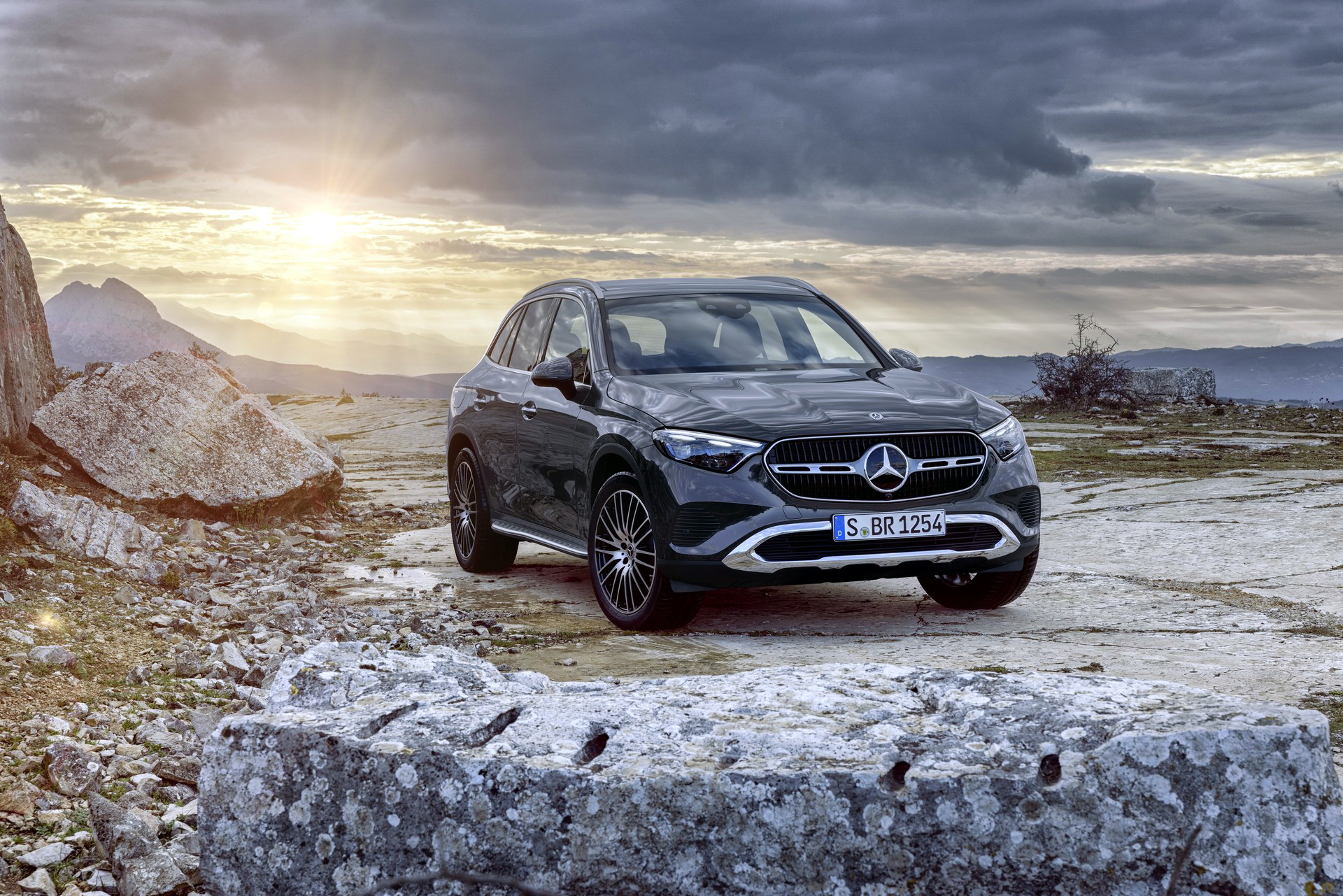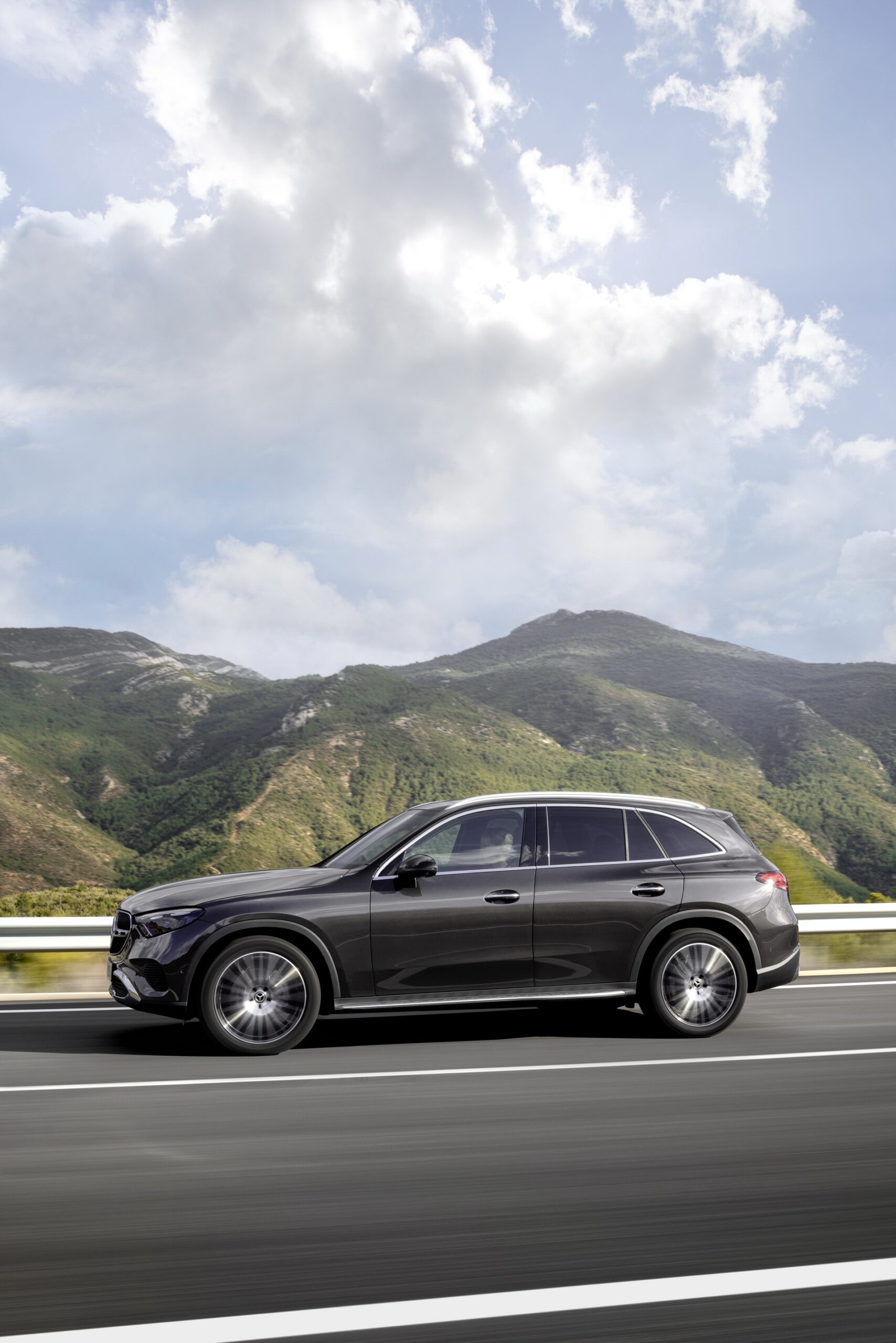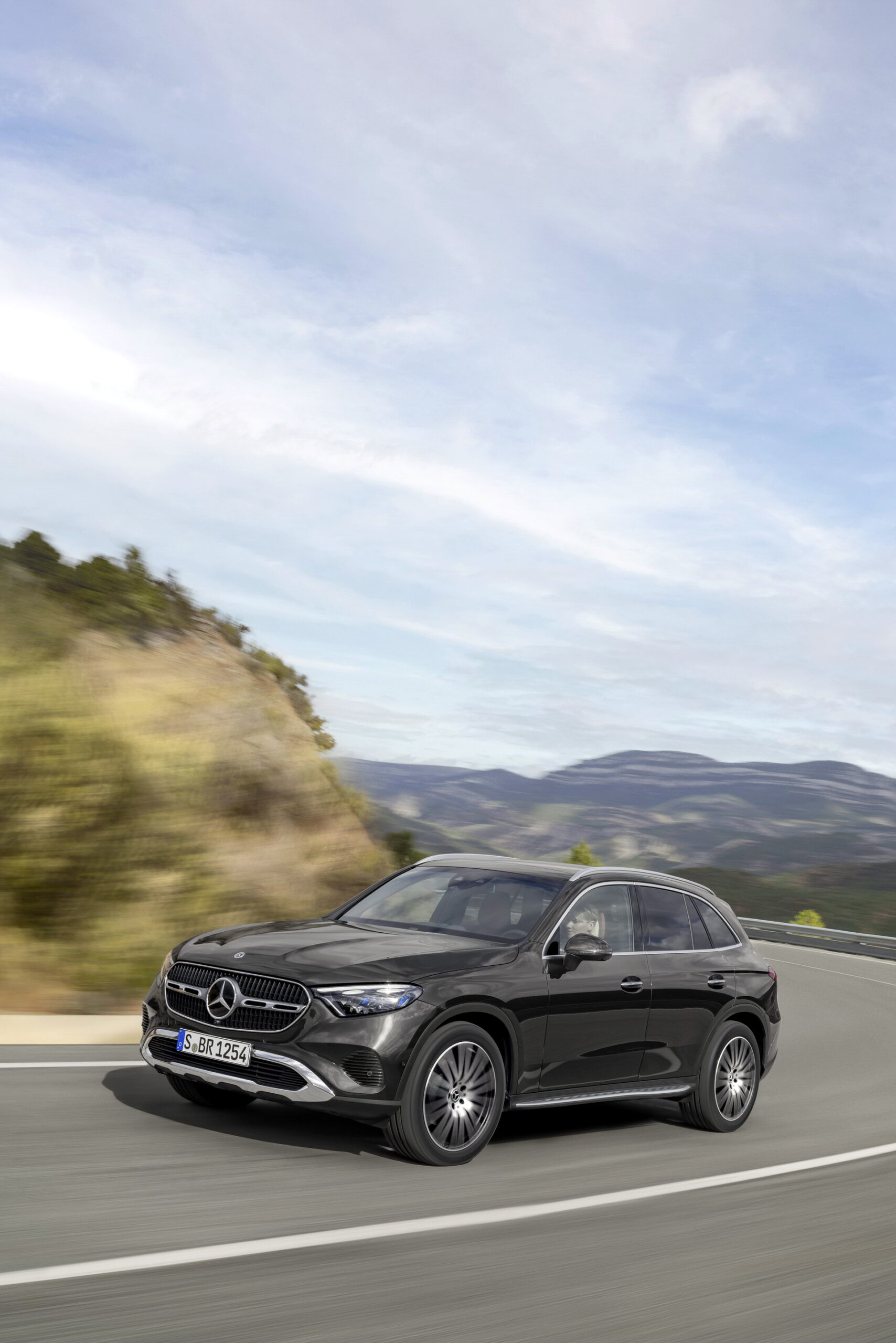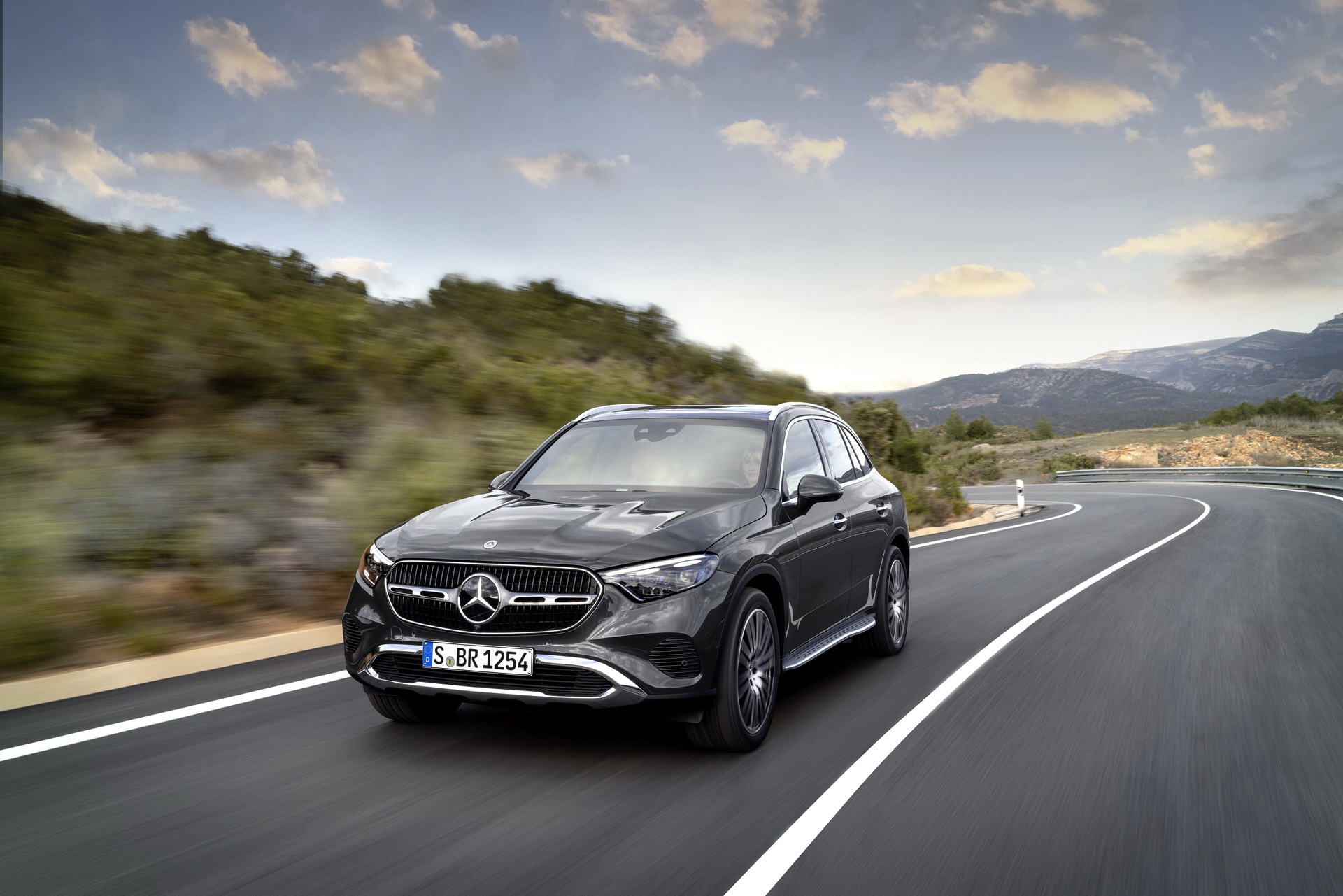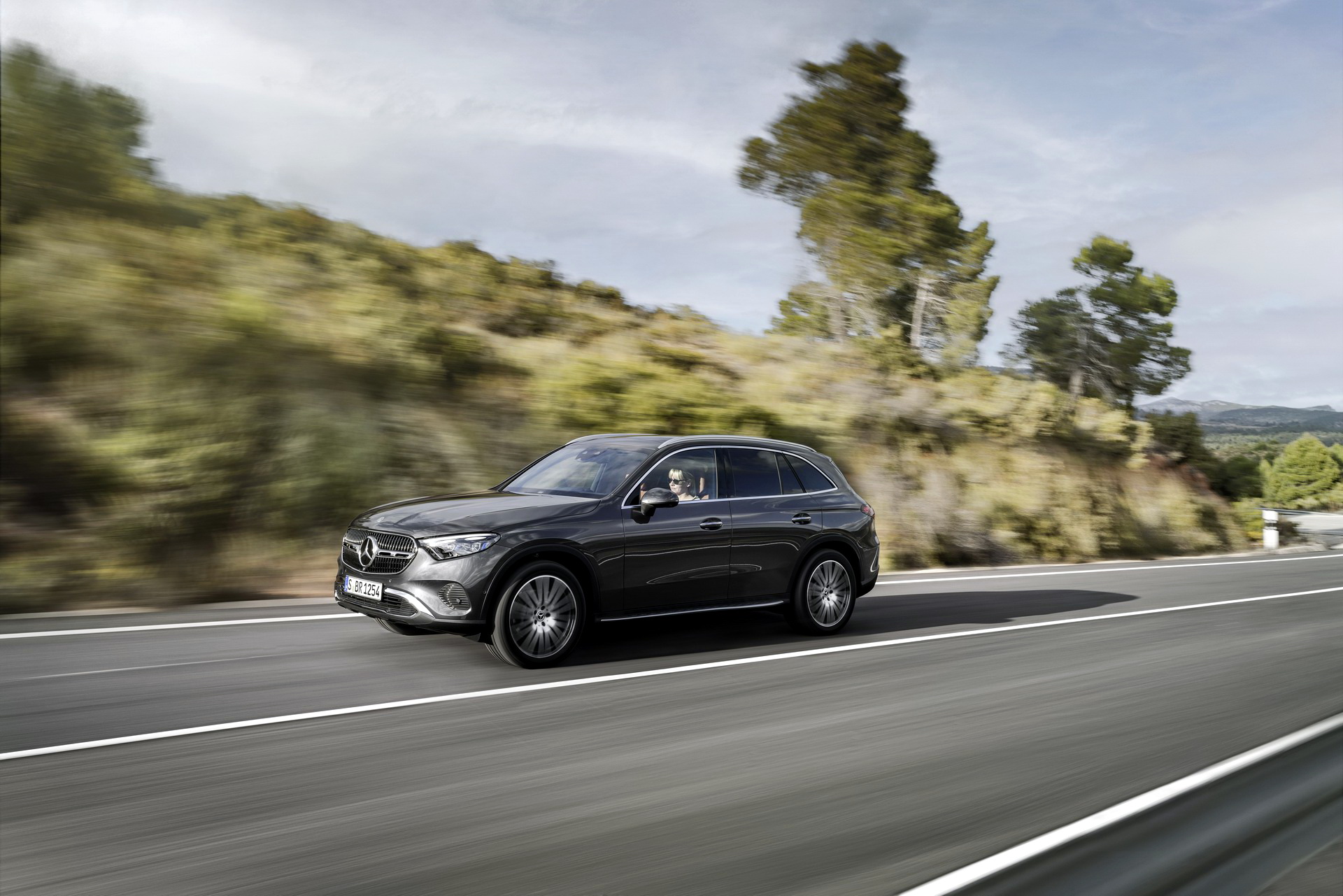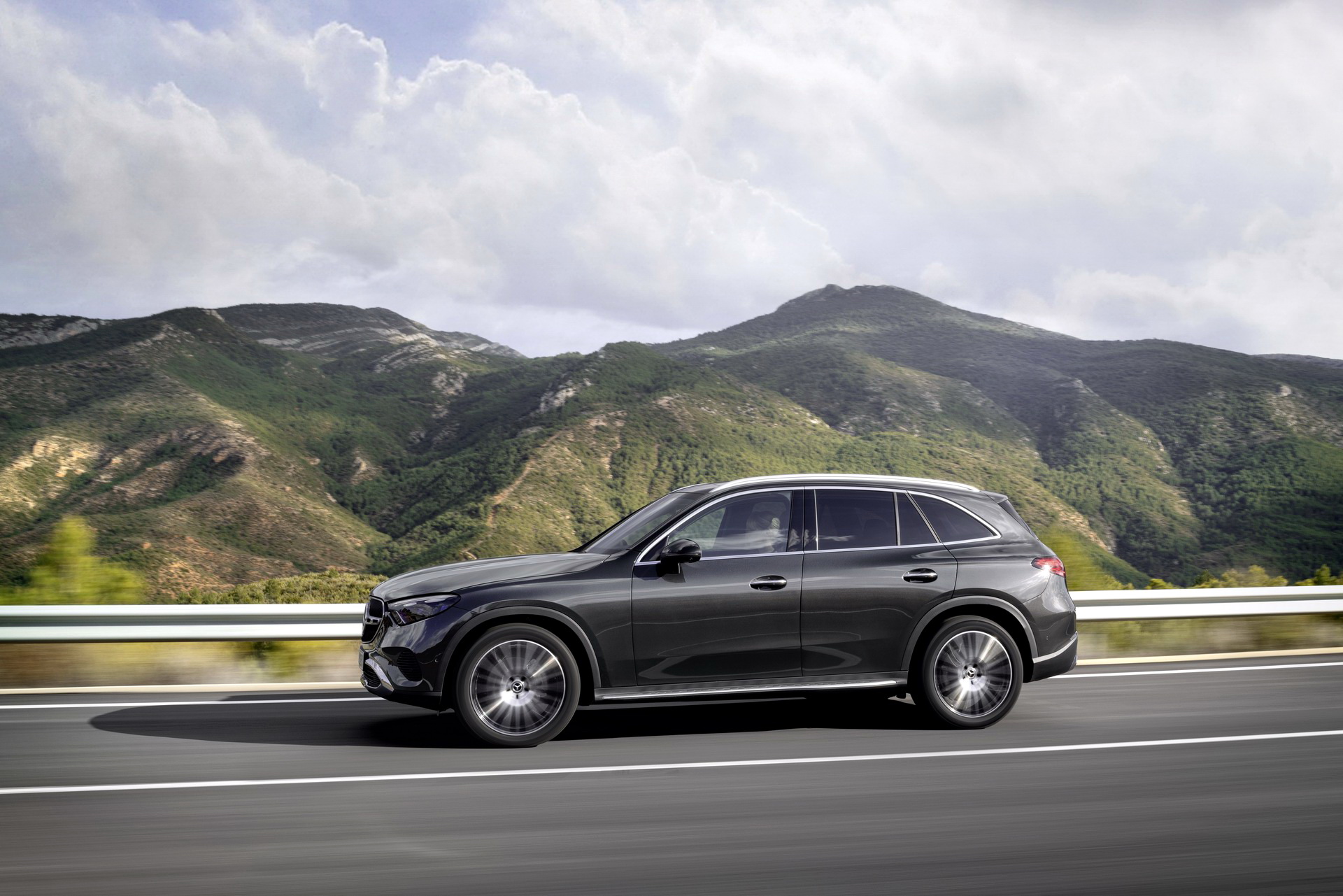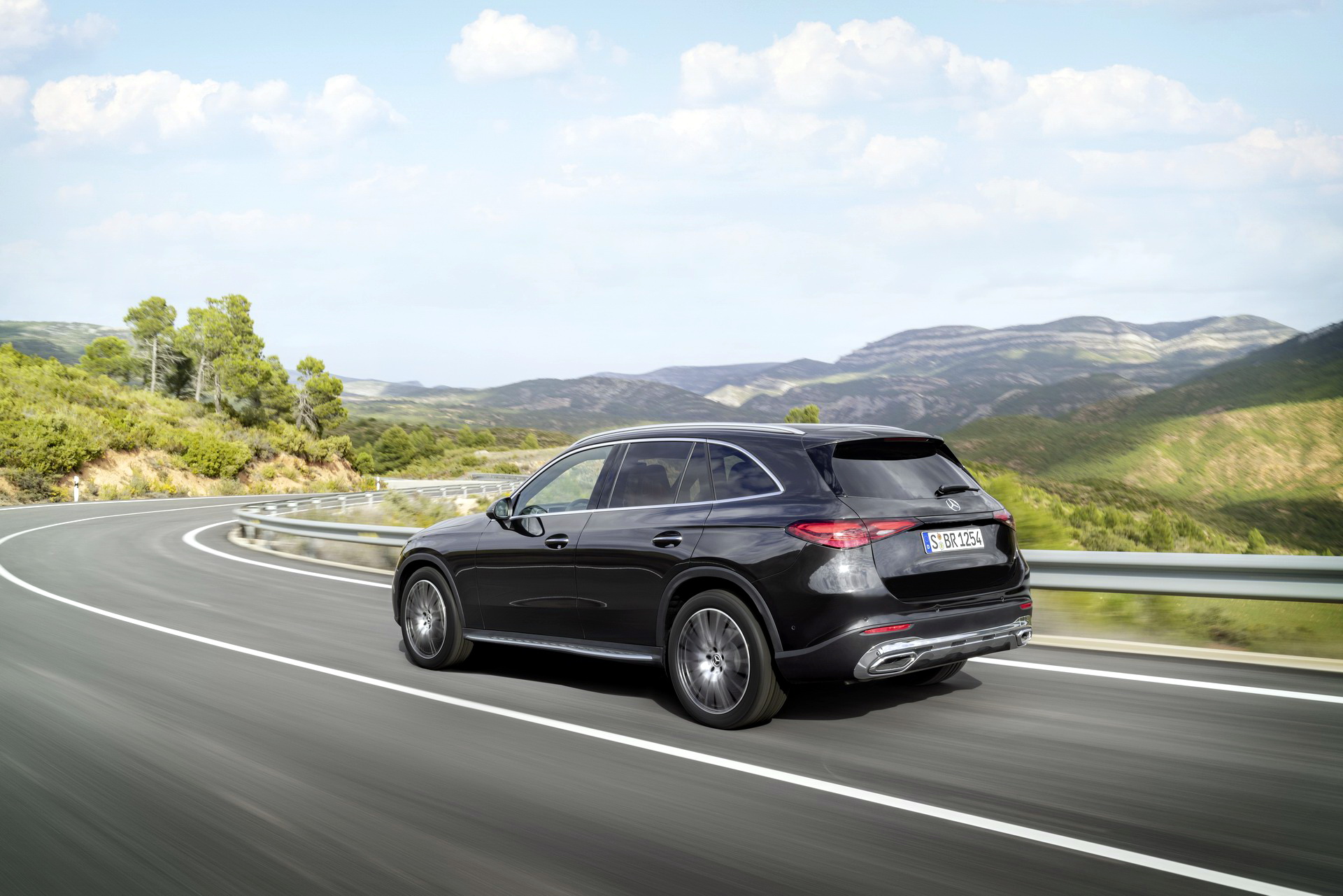Mercedes-Benz may be speeding towards an all-electric future developing an array of new models like the EQB, EQE and EQS, but it’s not ready to abandon its bread and butter fossil-fueled portfolio, including its best-selling vehicle worldwide, the GLC luxury compact crossover that is entering a new generation for the 2023MY.
It follows the recent debut of the mechanically related 2022 C-Class sedan and boasts a host of new features and refinements to go up against its chief rivals, the Audi Q5 and BMW X3. Subtle but important changes combine familiar but more dynamic styling, increased cabin and luggage space, and an updated turbocharged mild-hybrid engine with more torque for the North American market.
Exterior Design That Tricks The Eyes
Despite a big update in terms of technology and features, the exterior changes to the GLC are more of an evolution rather than a revolution. The front features a larger grille, sharper headlights, and intakes that better fit the family dynamic. The body while familiar, looks lower, longer, and wider than the vehicle it replaces.
While these changes might make it seem as though the GLC is proportionally quite different from its predecessor, that’s simply not the case. Where the two vehicles differ most is in terms of overall length. The new car is 2.4-inches (60.96 mm) longer than the outgoing GLC, at 185.7-inches (4,716 mm) versus 183.3 (4,655 mm). It’s also 0.16 inches (4mm) lower, while the wheelbase is hair longer (+0.6-inches or +15mm) at 113.7-inches (2,888 mm). The width has remained the same at 74.4 inches (1,890mm). Finally, the track is wider by .24-inches (6.09 mm) in the front and .91-inches (23.11 mm) in the rear.
That extra length and wider rear track contribute to an increase of 2.5 cubic feet (70.7 L) worth of cargo space in the rear of the GLC. That makes for a total of 21.9 cu.ft (620.1 L). Every other key dimension is less than a single inch different from the old GLC. Those subtle nips and tucks have led to an improvement in drag though. This new GLC has a drag coefficient of .29 or two-tenths better than the previous cars .31.
Updated High-Tech Interior Design
Perhaps no facet of the GLC is as obviously improved as the interior though. A large 11.9-inch tablet-style infotainment system is front and center with another large 12.3-inch display in place of the gauge cluster. The dash and door panels follow the high-tech theme.
A two-tone grey-on-grey material spans the entire dash and integrates both screens. Buyers can choose from different finishes as well. Each door panel is full of dark trim complimented with a blend of the main interior upholstery color.
Mercedes continues its tradition of what it calls “floating” features like the seat controls along with the display screens which seem to be disconnected from the surrounding trim. Physical space in the cabin is nearly unchanged from the outgoing car. Perhaps the most important change is that front-seat passengers have .6 fewer inches (15mm) of headroom. Every other dimension is less than half an inch different in either direction.
Technology Trickling Down To The GLC
Where the new GLC will likely shine brightest is with regard to new technology. Both of the aforementioned screens are standard equipment and huge improvements over the older car. In addition, every GLC comes with heated seats, Android Auto, Apple CarPlay, wireless charging, and a fingerprint scanner that saves driver profiles are all standard features too.
Buyers who want more technology can get it. A color heads-up display is on offer as is a new technology called the “transparent hood.” With it, buyers can use the central infotainment system to see a virtual view under the front of the vehicle including their wheels and the steering position. That should make for more confident off-roading as it will enable easier avoidance of obstacles. Of course, buyers will need to add the 360-degree camera system to the GLC to get the transparent hood.
Those who spring for the Pinnacle trim can even add a 720p (really?) dashcam that films and records everything that happens ahead of the vehicle including speed and time. Mercedes says that GLC customers can expect regular over-the-air (OTA) updates after purchase.
A Simple Trim And Package System
The base GLC 300 will come with rear-wheel drive and Mercedes has yet to reveal pricing. We expect it to start somewhere around $45,000. Every non-AMG GLC in the States comes with the same 2.0-liter four-cylinder engine featuring a 48-volt mild hybrid system. It develops 258-hp (192 kW) and 295 lb-ft (399 Nm) of torque.
The GLC 300 4MATIC adds all-wheel drive. Both vehicles use a nine-speed automatic transmission and feature a listed 0-60 mph (96 km/h) time of 6.2-seconds. Mercedes says that the GLC is electronically limited to just 130 MPH (209 km/h). As of this writing, Mercedes has yet to release any official data on fuel economy.
Like the rest of the Mercedes family, buyers will have the opportunity to add packages on top of these models to get the specific features they want. Mercedes itself says that it’s refined its packaging logic so that features commonly ordered together in the past are now bundled together better. For instance, a brand new parking package includes both the functions of Active Park Assist with the available 360-degree camera system. The Driving Assistance package includes important safety aids like adaptive cruise control, active steering assist, and traffic sign assist. Another package, Guard 360, adds full time vehicle monitoring somewhat similar to LoJack and includes tow-away protection.
Read: Mercedes-AMG Confirms C63 E Performance Will Get 661 HP Four-Pot Plug-In Hybrid Powertrain
While we’ll have to wait to hear more about US-bound vehicles, it seems likely that the units destined for the European market will have more options for now. Additionally, expect the performance-orientated AMG models that will most likely use the same hybrid 2.0-liter four-cylinder turbo powertrains announced for the junior 402 HP C43 and +500 HP C63 AMG sedans to follow for both markets in the coming months.




